













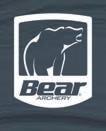















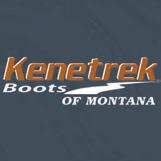











































P L A T I N U M PLATINUM S I L V E R SILVER S I L V E R D I A M O N D DIAMOND G O L D GOLD TheseCorporatePartnershavebeenloyalinhelpingus preserve,promote,andprotectthepassionforbowhunting! Formoreinformationonhowyoucanbecomeacorporatepartner,pleasereachouttoDylanRay. Dylan@pope-young.org


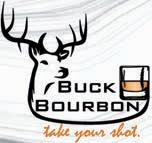


















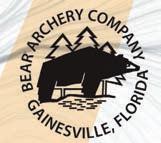




HUGESAVINGS MEMBERONLYDISCOUNTS Thesecompanies,understandthatPope&Young,andourmembers,are onthefrontlines,workinghardtodefendbowhuntingrights. THISISTHEIRWAYOFSAYINGTHANKYOU! TOTAKEADVANTAGEOFTHESEDISCOUNTSANDSHOWSUPPORTOFTHOSE WHOSUPPORTYOUASABOWHUNTER,VISITWWW.POPE-YOUNG.ORG, LOGINASAMEMBER,CLICK“MEMBERRESOURCES,”ANDTHEN “POPE&YOUNGMEMBERONLYDISCOUNTS.” 15%OFFALLORDERS$75MAILINREBATE20%OFFENTIREORDER$10OFFENTIREORDER 35%OFFALLORDERS 20%OFFALLORDERS 15%OFFATP&YCONVENTION 10%OFFALLORDERS10%OFFONETIMEORDER 20%OFFENTIREORDER 20%OFFALLTRADITIONAL 20%OFFENTIREORDER


Front Cover: Kim Tackett•Species: Typical Whitetail Deer•Score: 160 1/8•Location: Shackleford County, Texas, USA•Date: 10/15/2021
Back Cover: John Mascellino•Species: Typical Whitetail Deer•Score: 141 2/8•Location: Athens County, Ohio, USA Date: 10/01/2023
Rob Stout•Species: Central Canada Barren Ground Caribou•Score: 305 0/8•Location: Martin Lake, NWT Date: 09/07/2006
The Official Journal of Pope and Young
Inside the Issue
• Executive Director
• President’s Column
• Director’s Stand
• Conservation Chair
• Conservation Matters
• Big Game Records
• Whitetail Deer: Measuring and Scoring Antlers Reprinted from our P&Y B&C Joint Measurer’s Manual.
• Big Game Species Profile: White-tailed Deer
• Real World Record Whitetailed Deer
• Mel Johnson and His Buck an Enduring Relationhip
• Noska’s Notes: The Whitetail Wins By Frank Noska
• Recent 34th Recording Period Entries
• Super Slam: Beware of Crooked Arrows By Chuck Adams
• Adventure Bowhunter: Himba Ram By Tom Miranda
• Membership Column
• Membership Listing
• Giving Societies
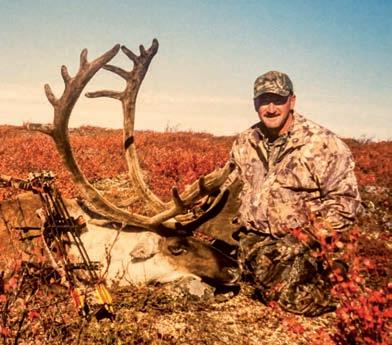


• Youth Membership: Pope & Young Club Memories, Discover the Outdoors Camps By Gene Hopkins
• The Adventurous BowWoman: Jana Waller Bair – The Skull Bound Legend By Stephanie Manteufel

2024 • Summer
6 8 10 12 16 20 26 36 48 50 54 58 62 66 72 74 82 86 92 Up Front Conservation Big Game Features Membership Youth Adventurous BowWoman 4
Volume 51 Number 2
Summer 2024
Join us on Social Media


I
Executive Director
By Justin Spring
am writing this coming out of our in-person board meeting held in conjunction with our Utah Bowhunters Bash in Ogden. When the lights finally went out for the evening at Weber County Archery Park and Bakcou Center, I was again stunned at the amount of passion our membership brings to this organization. These observations started Friday at the all-day board meeting. I can confidently say that all the folks in both the elected and appointed positions are giving everything they can to ensure organizational efficiency and efficacy in our mission. Speaking of which, we are looking to fill a board-appointed position and soliciting volunteers, but we will get to that a little later.






Some of the topics coming out of the meeting include the Kentucky bear work, which you can read about in Conservation Chair Doug Clayton’s column. We have some great ideas coming together for our convention, so be sure to follow the magazine as well as our website and social media accounts as events get confirmed and announced. While preliminary numbers are showing us Arizona is going to be a little more expensive than previous locations, the additional activity options, the quality of the property serving as the host, and the early enthusiasm local members are showing for the event have me confident that this location is a great choice for our convention April 9-12, 2025.
If you look in the staff listing section of this magazine, you will see we have a couple of new employees that have come on. Edna Harlan is our newest employee and no stranger to the organization. Edna and her husband Larry also run a taxidermy shop in New Mexico, and Larry is an Official Measurer. Edna is serving in the role of Administrative Manager.














Some of you may have noticed that phone calls to the office are going to voicemail at a higher rate than usual. Shelby is currently the only one manning the phones in the office, so please have patience as we update our number to an internet-based phone where Edna can assist with answering your calls and getting you to the correct place. If you don’t get an answer when you call Chatfield, please leave a message, Shelby will call you back or get you in touch with the appropriate employee.













We also hosted a joint measuring workshop with Boone and Crockett in Ogden in conjunction with the Bash. Twenty-three students attended the 4-day workshop, the Pope and Young portions taught by Records Director Tim Rozewski and Records Coordinator Blake McPhaul. Measurers serve as our front lines of contact with the public. Most folks will never meet Pope and Young staff in person. So these individuals are leading the way in collecting trophy data and the backbone of recruiting new members and engaging the public in all that we do.
I mentioned earlier the passion of the board and folks in attendance at the event; the organization’s success is paramount to active and engaged members. If you haven’t already, signing up and attending a workshop is a great way to increase your engagement level. Having taught these courses for
2024 • Summer
6
2020LIMITEDARROWWRAPS WWW.STATEWRAPS.COM
many years at Boone and Crockett jointly with Pope and Young, I can assure you that some of the best students who went through may not have had much scoring experience. In the course, you learn about both organizations’ history, mission, and scoring procedures. To be successful, we feel that the biggest attribute we want to see in applicants is enthusiasm. If you are excited about promoting the mission of the Club, you will almost certainly excel at being an official measurer. If you have any further questions on the program or upcoming classes, reach out to Tim via email at Tim@pope-young.org. If this is something you want to do now, you can go on the website and apply for an invitation to a future four-day training course. If you are already an Official Measurer, thank you for your efforts. If you know of a potential applicant who may be able to help us move forward, please encourage them to apply and let Tim know when they have.
Finally, in the idea of engagement and enthusiasm from members, I wanted to solicit folks who may be interested in

The Pope and Young Ethic, Volume 51, No. 2, Summer 2024, ISSN#23815655 is published quarterly by Pope and Young, 223 South Main St. Chatfield, Minnesota 55923. Each annual Membership dues includes $23.80 subscription fee for The P&Y Ethic, Journal of Pope and Young. USPS #16690 in Chatfield, MN 55923. Periodical Postage paid at Chatfield, MN 55923 and additional mailing offices. POSTMASTER: Please send address changes to The P&Y Ethic, Pope and Young, PO Box 548, Chatfield, MN 55923.
Pope & Young Club
223 South Main Street, PO Box 548, Chatfield, MN 55923
Phone: 507-867-4144•Fax: 507-867-4144
Email: admin@pope-young.org
Website: www.pope-young.org

The Pope and Young Ethic is the official publication of the Pope & Young Club, Inc. It is published four times each year and distributed to its membership, friends, and other supporters.
vying for a board appointment to serve as the Youth Coordinator. The previous Coordinator, Ricky Krueger, was elected to a board position, so we are looking for his replacement. While we will consider anyone with the time and desire to help build this program into the future, we welcome all folks with a desire to develop and explore new ideas to apply. Being part of board meetings as a board appointee is a great way to get more involved at the managerial level of the organization. While the current board are all very passionate and long-term supporters of the organization, to ensure we are the most effective board covering the organization’s diversity, we would all welcome new ideas or backgrounds to become more involved. For those interested, please submit an email to Club President Kurt Ebers (kceber@gmail.com) or me (justin@ pope-young.org) expressing your interest and line out any ideas you may have for growth and engagement.
Thank you for your continued support in our mission to preserve, promote, and protect bowhunting.
Members are invited to submit comments, questions, photos, artwork, and short articles. All contributions must be accompanied by a self-addressed, stamped envelope if they are to be returned. However the Pope & Young Club does not assume responsibility for the safe return of any unsolicited materials. Items submitted for publication should be sent to the Ethic Editor, steve@pope-young.org, Pope & Young Club, P.O. Box 548, Chatfield, MN 55923, or admin@pope-young.org. Any questions can be directed to Steve Ashley, P&Y Ethic Editor, steve@pope-young.org, or write in care of the Pope & Young office. The opinions and views contained herein are those of the authors and are not necessarily those of the Pope & Young Club. Advertising is accepted at the discretion of the Pope & Young Club. For information contact Dylan Ray, dylan@pope-young.org. The editorial team reserves the right to reject or edit any material which may be deemed detrimental to bowhunting or the Pope & Young Club. The Board of Directors shall make the final determination on questionable materials.
Material in this publication may not be reproduced in any form without permission of Pope and Young. All requests for such use should be directed to the Ethic Editor at the above address or 507-867-4144.
Submission Deadlines are as follows•January 15 for Spring Issue•April 15 for Summer Issue•July 15 for Fall Issue•October 15 for Winter Issue•© Copyright 2024, Pope & Young Club, Inc.
Pope & Young Club
Founded 1961 Board of Directors
President • Kurt Ebers 227 Stone Ridge Drive, Hannibal, MO 63401 573-719-8933•kcebers@gmail.com
First Vice President • Dallas Smith PO Box 460806, Leeds, UT 84746-0806 435-680-2870•dallas4263@hotmail.com
Second Vice President • Scott Bakken 4727 Arbor Crossing SE, Apt 219, Alexandria, MN 56308 715-213-8854•scott@dialedarchery.com
Treasurer • Phil Dalrymple 4542 E. Camp Lowell Dr. Suite 100, Tucson, AZ 85712 520-400-6035•pdalrymple@randacpas.com
Past President Director • Jim Willems 5750 Rail Rd., Farmington, NM 87402 505-330-8211•jimwillems@q.com
Directors
Merritt Compton 469 Aiken Road, Trumansburg, NY 14886 607-387-5112•mcc11@cornell.edu
John “Jack” Culpepper 1700 George Bush Dr., E #240 College Station, TX 77840 979-696-1444•jack@culpepperrealty.com
Ricky Krueger 2498 Highland Rd 2, Fremont, NE 68025 402-720-4520•antlers22@hotmail.com
Ken Rimer 512 171st Street, Hammond, WI 54015 715-410-3195•camoose195.28@gmail.com
Records Chair • Roy Grace P.O. Box 948, Lakeside, AZ 85929 760-851-4434•roy@pope-young.org
Membership Chair • Stephen LePage 2574 Divide Rd., Lewistown, MT, 59457 406-535-5636 stephenandamylepage@yahoo.com
Conservation Chair • Doug Clayton 18016 Colt Rd, Council Bluffs, IA 51502 402-305-1941•dclay33@cox.net
Youth Coordinator • Open
Trust Officer • John Gardner 4837 HWY 172, Durango, CO 81303 970 749 2013•wildlifex@protonmail.com
Board Secretary • Michael A. Oropallo 4578 West Lake Rd., Auburn, NY 13021 moropallo@barclaydamon.com
P&Y Staff
Executive Director • Justin Spring
Director of Records • Tim Rozewski
Administrative Support / Membership
Manager • Shelby Klennert
Events Manager • Heather Knight
Marketing Manager • Dylan Ray
Administrative Manager • Edna Harlan
Records Coordinator • Clinton “Blake” McPhaul
Museum Curator • Larry Streiff
Associate Editors Steve Ashley & Mike Schlegel
Art Director • Wild Snow Design, LLC / Tara Bondar

••••••••••••••••••• •••••••••••••••••••••• Summer • 2024 7
••••••••••••••••••

MPresident’s Column
By Kurt Ebers
y column is a call to arms within our membership regarding our Bowhunters Bash events currently being held. To date, the P&Y Club has held four (4) successful bash events. Three events have been held in Ogden, Utah, and one in College Station, Texas. A second College Station event is scheduled for December 2024. New events are being scheduled in Minnesota (2024) and New York (2025).
A Bowhunters Bash event is a one-day social event, usually on a Saturday evening. The P&Y Club, in collaboration with a local bowhunting club or local P&Y members, will spearhead the event. The P&Y staff have created a bash playbook outlining all the steps needed for a successful event. Think of a bash event similar to your local NWTF
evening banquet we’ve all been to. The goal is to have 150-200 fellow bowhunters gather for a social event with an evening meal and auction (silent/live) to raise P&Y funds in supporting its Mission to Ensure Bowhunting Opportunities Today and Tomorrow.
The success of a bash event is 100% dependent on local support to host/run the event and get people to attend. The best formula for this is an influential and committed P&Y member willing to take charge and plan the event with the P&Y staff. For Ogden, we have board member Dallas Smith and board member Jack Culpepper for College Station. These gentlemen would be great contacts if you would like to just discuss what all is involved in hosting a bash event (contact information listed on
page 7). While the P&Y Club will continue to reschedule successful bash events. We are always looking to expand into new locations where the membership interest and support are there.
For those interested in exploring what it takes to host a one-day bash event, please reach out to our Director of Events –Heather Knight, at (715) 495-1195 or email heather@pope-young.org.
In closing, please continue to visit the website and open/read our weekly E-blast emails and social media posts to get the most current information on the Club. As always, feel free to contact me or any board member if you have any questions, comments, or concerns regarding the Club’s direction.
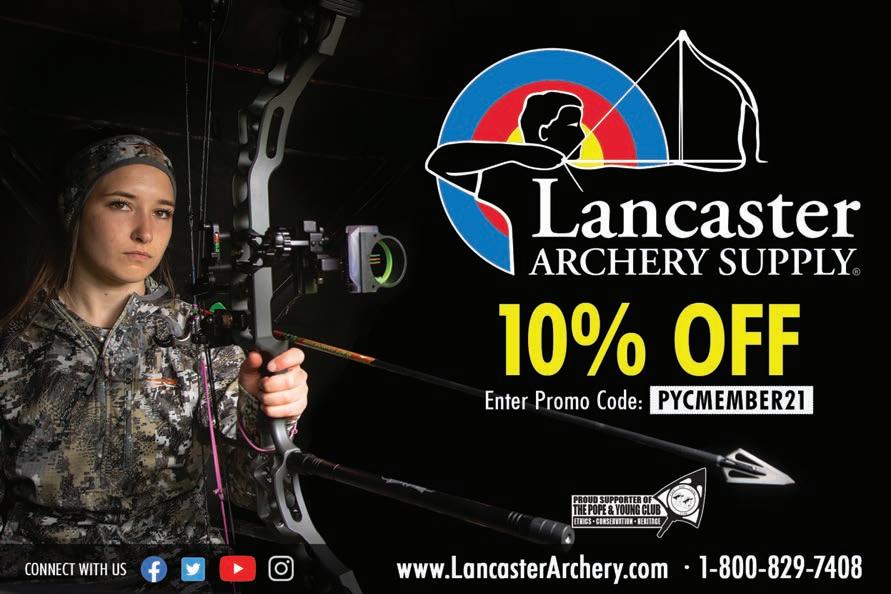

2024 • Summer
8



Bowhunter’s Bash

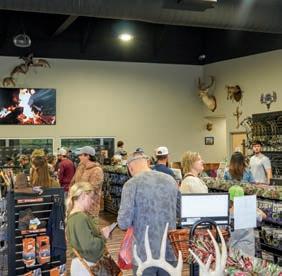
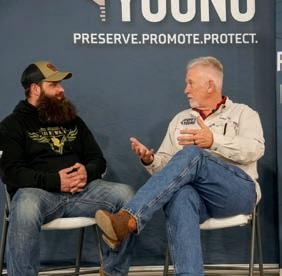











TDirector’s Stand
By Ricky Krueger
hank you to all the members for supporting the Pope and Young Club. This is a great organization with many very supportive members.
I was recently elected as the newest Director for the Pope and Young Club and would like to pass along a big thank you. As most of you know, I was the past 2nd VP and past Youth Coordinator. I became a Regular Life member then and am incredibly honored to be a member.
I always look forward to any Pope and Young event anywhere in the country. I highly recommend attending an event. They are a blast and a great way to meet new people and visit people you already know.
By the time this goes to print, we will have had an in-person board meeting in Ogden, UT, and a great time at the Bowhunters Bash.
As with any board meeting, several key projects will be discussed, and many new ideas will be presented. A few of the items that will be brought up are:
• Term limits for some board positions. Going forward, this can be tough when not enough members want to run for a position. I believe that with term limits, more people will be interested in running.
• Getting more members interested in running for a board position. I am not quite sure what would motivate members to run for a board position, but I


know I enjoy being a board member and contributing to the bowhunting cause, and it has been gratifying for me.
• A better way for members to vote during elections or other necessary voting. Justin and Tim have been trying out a few different ways of voting, and they are looking promising. A primary concern is low voter participation rate. Knowing that a small group of people are working on this is reassuring that it will be improved.
• Keeping conventions and bowhunter bashes fresh for our members. New locations and a good variety of things to do. I know Justin is keeping an eye on this to keep it fresh.
• Working out a manageable plan for conservation, I would like to see some more actual hands-on projects. For example, the Arizona elk drinker project or a spring bear tagging project out east. These are a few examples of hands-on projects in which our members could participate.
• One of P&Y’s biggest hurdles is member retention. We are trying a couple of ways to increase retention: the membership discount for a new entry for an animal and a good ole’ phone call to welcome new members are being evaluated. I am on the membership committee, so I am interested in hearing some of the new ideas the committee has come up with for retention.
• Our records part of the Pope and Young Club has been putting up some improved numbers these last few years, especially with some of the additional categories. One of the most challenging issues in this department is getting people to enter their trophies. As with any problem, finding a good solution is difficult, but I am confident that Roy has a good committee working on this along with the board.
• The museum has been a topic for some time. I would like to see more movement on this, but I also understand some things take time to accomplish. Especially huge undertakings like this one. The other museum took some time also.
All in all, we have a great board that brings many different skills to the table. We all try to do our part for the Club, and as we have always said, if anyone has anything they want to talk about, we are all available to listen.
Our office staff and ED are top-notch people who do their best to keep the club running. I personally think they do a topnotch job.
Again, I would like to thank all of you for being a proud Pope and Young Club member.
Please contact me if you have any questions or want to chat. My contact info is listed towards the front of the Ethic.
Sincerely,
Ricky Krueger
2024 • Summer
10
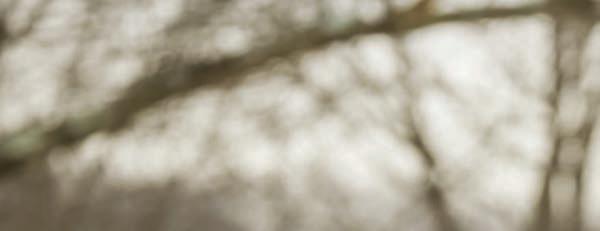
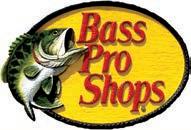



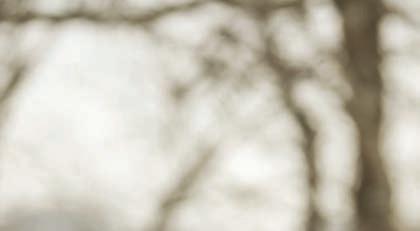

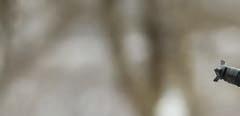


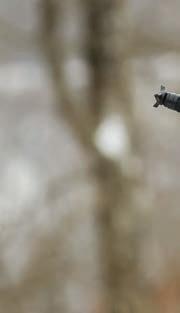




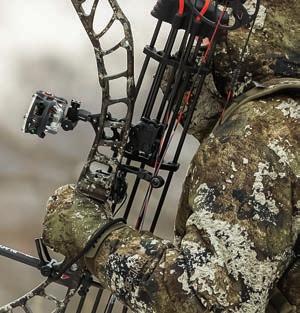



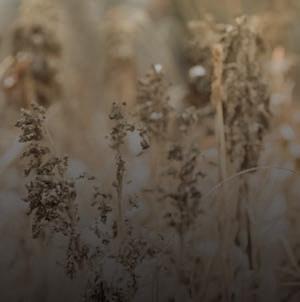
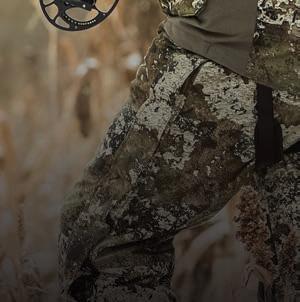




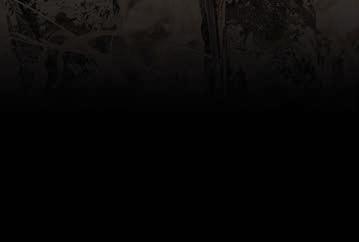






2024 PROUD PARTNER OF Bass Pro Shops® and Cabela’s® is proud to stand together with the sportsmen and women we serve in support of Pope and Young. Our combined commitment to preserve, promote, and protect our bowhunting heritage is vital to future of our sport. Learn more at basspro.com/conservation precision archery gear SHOP BLACKOUT GEAR
@ BP231278520
basspro.com
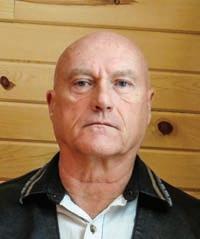
TConservation Chair Column
By Doug Clayton
his past April, the Pope and Young Board held their meeting in Odgen, Utah, on a Friday. The following day, they helped set up and assist the staff in hosting another successful P&Y Bash. The Board’s conservation agenda covered the following two topics.
Colorado Mountain Lion Ballot Initiative
The first topic discussed was the mountain lion hunting ballot initiative in Colorado. John Gardner contacted me with the background and pointed me to Dan Gates with Coloradans for Responsible Wildlife Management for the details.
Dan and I talked the next day about this initiative, and he asked for P&Y’s support in
opposing the ballot initiative. It reads (the underlined is my emphasis):
Initiative 2023-2024 #91: PROHIBIT
TROPHY HUNTING
SECTION 1. In Colorado, Revised Statutes, add 33-4-101.4 as follows:
(1) The voters of Colorado find and declare that any trophy hunting of mountain lions, bobcats, or lynx is inhumane, serves no socially acceptable or ecologically beneficial purpose, and fails to further public safety. Trophy hunting is practiced primarily for the display of an animal’s head, fur, or other body parts rather than for the utilization of the meat. Moreover, it is almost always conducted by unsporting means,
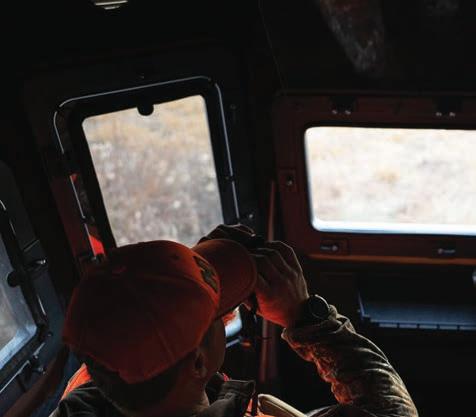
including, but not limited to, using packs of dogs with electronic devices to pursue and entrap affected animals in places from which they cannot escape in order to achieve the kill. Therefore, it is appropriate and necessary to ban trophy hunting of mountain lions, bobcats, and lynx in Colorado.
Any ballot initiative directed towards wildlife “management” is not true management, as it takes science-based decisions out of the hands of trained wildlife biologists and into the realm of emotionally decided decisions, never again to see the light of day.
Back in 2020, Colorado approved another ballot initiative to reintroduce the gray wolf
THE HUNTING BLIND



Every square inch of the rotomolded GRIZZLY® HUNTING BLIND has been thought through, optimally designed, manufactured, and lived. You won’t find a hunting blind that’s more hunter-friendly, solidly constructed, feature-rich, and deadly quiet. Learn more at grizzlycoolers.com


2024 • Summer
12
ADVENTURE GUARANTEED. FOR A LIFETIME.

THE #1 WHITETAIL HUNTING APP
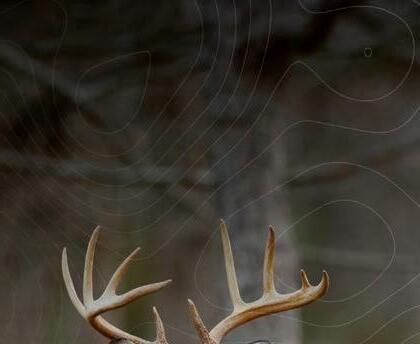


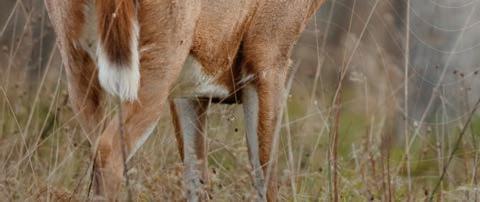

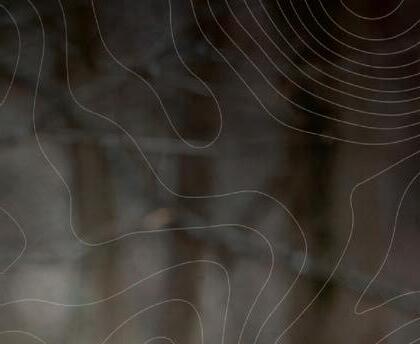

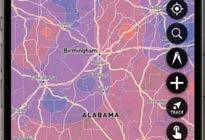





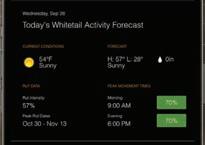



WHITETAIL RUT MAP Unlock the most extensive Rut Map in the country











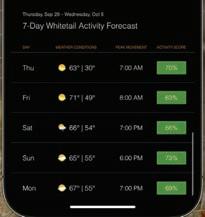

WHITETAIL ACTIVITY FORECAST Plan your hunt around peak movement times

Join millions of hunters who use HuntStand to view property lines, find public hunting land, and manage their hunting property. Enjoy a powerful collection of maps and tools — including nationwide rut dates and a 7-day whitetail activity forecast with peak deer movement times.




huntstand.com
RUT MAP MONTHLY SATELLITE IMAGERY NATIONAL AERIAL IMAGERY WHITETAIL HABITAT MAP CROP HISTORY
WHITETAIL ACTIVITY FORECAST WHITETAIL
NATIONWIDE PROPERTY INFO Download and map for FREE!
Conservation Chair Column
continued
back into the state. It was approved by a slim margin of 50.91% and was passed with only 13 of Colorado’s 64 counties voting in favor of the ballot. That is roughly 20% of the state’s counties voting to approve the initiative. The common complaint about the wolf introduction plan was that the wolves were set to be released west of the Continental Divide. At the same time, the most populated counties that voted in favor were east of the Divide, with 66% of Denver County voters and 68% of Boulder County voters voting in favor of approval.
The prevalent concern is that this initiative to ban trophy hunting of mountain lions, bobcats, and lynx will have the same results. For more information, visit the website “Coloradans for Responsible Wildlife Management” (savethehuntcolorado.com).
There is a raffle for a mountain lion hunt and a rifle to help support this effort that
is being conducted through Safari Club International (SCI). 100% of the proceeds derived from this raffle will be donated back to the Colorado organization to fight this ballot initiative.
Kentucky Bear Study
P&Y is partnering with the Kentucky Department of Fish and Wildlife Resources (KDFW) to help fund a research project involving bears that are causing corn crop damage. This came about earlier in the year when KY Regional Wildlife Biologist III Matt Catron attended a measuring class and talked about the project with P&Y Director of Records Tim Rozewski.
Basically, KY wants to get the information to make an informed decision before being directed to do “something” legislatively. KDFW is considering a two-week early archery season during the timeframe that
they typically have bear crop damage. These season changes will take effect in the 2025 bear season if they pass.
Catron said with the crop damage, KDFW knows bears are being pulled in from miles away due to their extremely heightened sense of smell, but the locals believe there is an astronomical population in the counties. Still, KY doesn’t have the maps/data to show them how far the bears actually travel when that sweet smell of corn hits their nose.
Catron said that KDFW wants to do a research project in which they trap black bears in Wayne County and install GPS collars on both males and females. This area is the leading edge of the bear population and the location where the bears are running out of the contiguous natural forested areas and dispersing into open/agriculture/populated areas, with clumps of timber scattered around. The KDFW is wants to see what the dispersal habits are of the bear in this area, reproductive success with denning females, and hopefully have a better representation of bear home range and population estimate so that they can update and help make better management decisions when changes are needed to the bear hunting seasons. They will also trap and install GPS collars on nuisance bears that are causing damage in corn fields to see where they travel back to after they quit feeding on corn so they can tell how far the corn was pulling them in from.
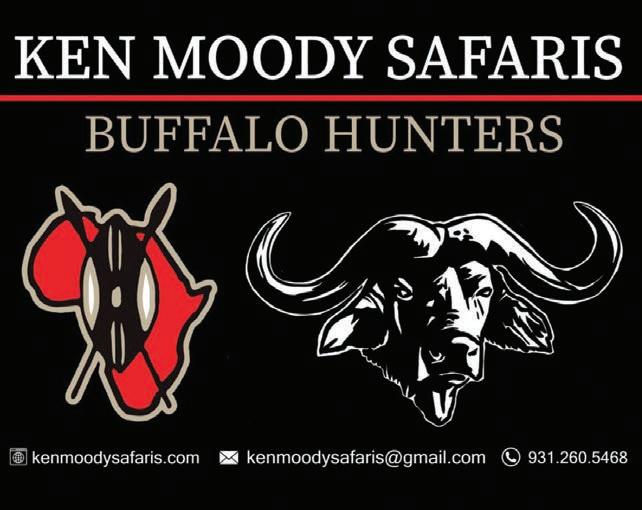

In addition to KDFW trapping and putting radio collar on bears in late summer, sometime next February, the biologists will visit bear dens to determine reproductive success. Each bear cub will then be microchipped for future tracking purposes.
2024 • Summer
14



Conservation Matters
By Kurt Ebers
Shane P. Mahoney

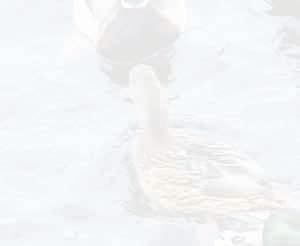
One Health: A New Approach, A New Opportunity


Nature does not exist in pieces but as an integrated entirety – comprised, interdependently, of humans, animals, and the wider environment. Seldom before in modern times has this point been more saliently driven home than during the past two years, as the world has battled a pandemic caused by a zoonotic disease.



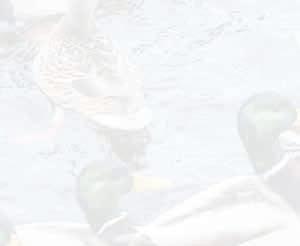
and because we understand it has defined our biological past. Thus, caring for nature and advocating for it has been at the heart of hunting cultures, Indigenous and otherwise, the world over.
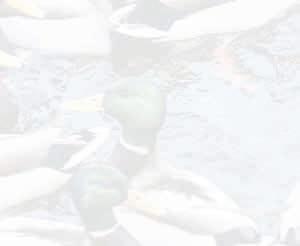

“It is time for us now as a nation to exercise the same reasonable foresight in dealing with our great natural resources that would be shown by any prudent man in conserving and wisely using the property which contains the assurance of well-being for himself and his children.” ~ President Theodore Roosevelt
COVID-19, which likely spread to humans through direct or indirect contact with wild bats, serves as a reminder to all of us that human and nonhuman health are inextricably linked. At the heart of this reality lies our close biological relationship with all other animal species. This is why we are physically able to inherit their diseases. Despite past instances of swine flu and avian flu, which were also significant zoonotic (animal to human) illnesses, it was the dramatic onset and tenacity of COVID that really captured the public’s attention. And little wonder that it did. This disease forcibly illustrated the serious social and economic consequences that may accompany public health crises. We all bore witness as hospitals filled beyond capacity, healthcare workers struggled, food shortages loomed, businesses closed, and friends and family suffered severe hardships and sometimes, incredibly, died alone.
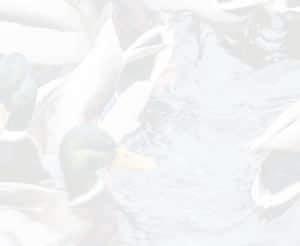
Our European forebears learned the hard way, having all but decimated North America’s wildlife by the late 19th century. Had there been anything like an Endangered Species Act at the time, elk, mule deer, wild turkeys, wood ducks, pronghorn antelope, and even white-tailed deer would likely have been listed. Unsurprisingly, given their physical and spiritual proximity to nature, hunters were among the first to realize that nature was not inexhaustible, that extractive engagements with it would need to be governed by personal responsibility and natural limits, that wise use and species and habitat conservation were not simply “nice-to-do,” but absolutely necessary in order to maintain the ecosystem services – like wild food and clean wateron which human communities have always depended for survival and comfort.
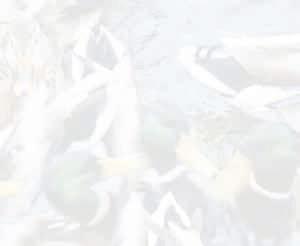
But, while the disease imparted many harsh lessons, it also reinforced truths that hunters have always known: We are not just a part of nature, but inextricably, and inevitably, linked with it. We are biologically connected to the land and to the wild others with whom we share space and which, in so many ways, we rely upon. Hunters understand this is also a reciprocal relationship because we have witnessed it through our direct experiences in nature

collaborative global approach to nature conservation – a “One Health” approach. Working at local, regional, national, and international levels to achieve optimal health and well-being outcomes for all of nature, One Health constitutes a proactive, rather than reactive, approach to environmental management and maintenance, to sustainable human health and livelihoods, and to wildlife conservation and natural resource use.
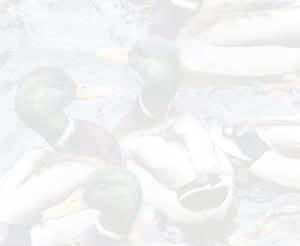

So perhaps now, in part because of Covid, society in general is catching up. Perhaps more of us are coming to realize that the connections hunters have always known to be integral to the human experience are also integral to human health and well-being, regardless of whether a person hunts or not.
Certainly, it is true that such broad concepts of interconnectedness are no longer the sole domain of Indigenous Peoples or recreational hunters, nor of philosophers and new-age thinkers. Accompanied and driven by both practical experience and accumulating scientific evidence, these ideas are forming the basis of a new


Endorsed by international organizations, world governments and global conventions, the One Health idea is not new. In fact, the term’s origins can be traced to a 19th-century German physician and anthropologist, Rudolf Virchow, who first proposed an interdependent relationship between human and animal health. It wasn’t until about 2004, however, that the modern concept gained popularity, spurred, in part, by a conference hosted by the Wildlife Conservation Society but more generally, by the accumulating global concerns over pandemics and zoonotic diseases.
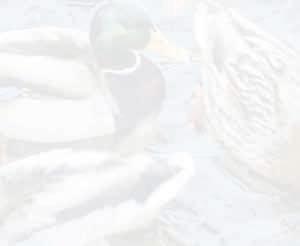
Up until quite recently, therefore, the One Health concept has been primarily applied to the surveillance and transmission of diseases between livestock, wildlife, and efforts by practitioners of veterinary medicine or physicians specializing in infectious diseases and public health. But the concept has much wider implications and, more recently, the scope of One Health has expanded to include not just the zoonotic diseases themselves and the veterinary and human healthcare systems required to monitor and react to them, but also the key drivers behind such health care issues, such as socio-political factors, economic


2024 • Summer
16



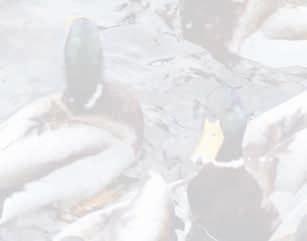

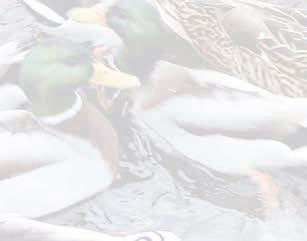


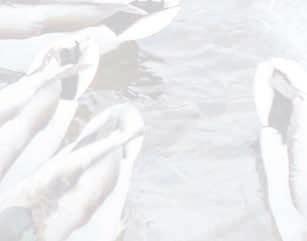
Summer • 2024 In 2014, an outbreak of avian influenza in commercial poultry farms sparked a recommendation to cull all wild birds in the surrounding area. Fortunately, hunters helped promote a One Health approach, allowing the wild birds to be tracked and monitored, rather than destroyed. 17 GEARHEADARCHERY.COM Advantage Gearhead. 10%OFF

Conservation Matters


considerations, and biodiversity conservation in general.
The interdependence between these factors is now recognized as central to maintaining biosecurity and sustainable co-existence on earth. Issues such as the global commercial production of meat, for example, may have a significant impact on the environment through the emission of greenhouse gasses, thereby impacting climate and environmental health as well as promoting deforestation to create space for increased grazing and farming. This may in turn contribute to human-wildlife conflict and livestock grazing in protected conservation areas, potentially enabling the spread of diseases from domestic cattle to wild ungulates and vice versa. Similarly,


examples such as accumulated humanproduced microplastics in our oceans
finding their way back into the human food chain are stark reminders of the impact of environmental degradation on human health, noting that it has been estimated that by 2050, there will be more plastic than fish in the sea!
As a result, One Health now encompasses food safety and security concerns, vector-borne diseases that come from insect bites, environmental contamination, antimicrobial resistance, climate change, illegal wildlife trade, and numerous other wellness and existential threats shared by people, animals, and the environment. The modern One Health approach encourages people to think globally and act locally. It






















necessitates direct involvement by multidisciplinary stakeholders beyond animal and human healthcare practitioners and requires traditional and scientific knowledge combined with informal networks of practitioners around a shared conservation vision. Engagement by the biodiversity conservation community is therefore considered essential to positive outcomes. This specifically includes hunters.































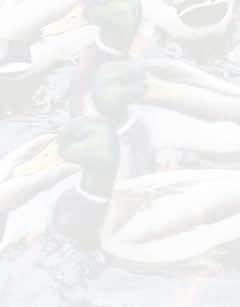



Hunters have close ties to rural America, which represents a One Health-intensive environment. Indeed, twenty percent of the USA’s population lives in 90% of the country’s landmass alongside one another, their pets, their livestock, and a huge variety of wildlife on or near agricultural land, ranch land, and protected environmental areas. Furthermore, nature is not abstract for hunters. It is not hypothetical or theoretical; it is visceral and real. As a result, hunters can contribute to early warning systems and risk reduction, not just for biodiversity loss but for biosecurity and human health as well. Living and/or hunting in these areas means that we, as hunters, engage directly with wild animals where they live, reproduce, and die. We know where to find wildlife. We know how wild animals should behave and when they are not behaving normally. We have the capacity to identify these abnormal patterns and to quickly recognize unusual mortality events.
An excellent example of hunter contributions to a One Health-based crisis intervention focuses on wild waterfowl and HPAI (highly pathogenic avian influenza). In 2014-2015, HPAI, a virus that infects wild birds, gained a point of entry to domestic species that threatened US food production. According to the US Department of Agriculture (USDA), more than 200 Midwest commercial farms and production sites confirmed reports of infected turkeys and chickens, making it the largest HPAI outbreak to date. The initial considered response was to simply cull the wild birds
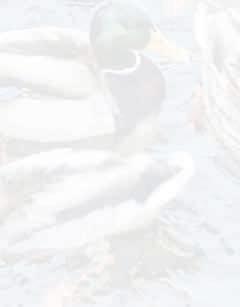



2024 • Summer continued 18
ATA 30” | Brace 6.25” IBO 352 FPS | Weight 3.6 X30 ATA 32.5” | Brace 6.5” IBO 350 FPS | Weight 3.7 X33 ATA 37.5” | Brace 7.5” IBO 334 FPS | Weight 3.9 X37 XPEDITIONARCHERY.COM | (844) 263-3665 XSERIES
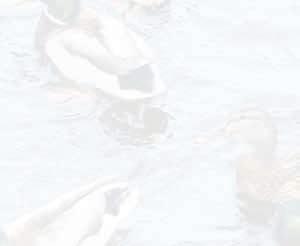

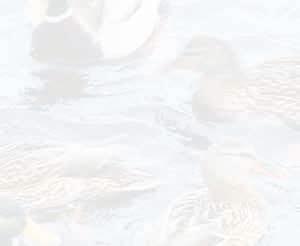
and destroy all wetland habitat around the poultry farms, a solution which might have solved the commercial food problem but might also have been devastating for the implicated wildlife and ecosystems. Instead, the crisis management committee, which included the Center for Disease Control (CDC) and the Department of Interior (DOI), in addition to USDA, brought in additional stakeholders, including hunters, to work on the problem.
This revised strategy for resolving the HPAI problem combined all inputs and shared knowledge. It proved far more balanced and effective than the earlier scorched earth approach. Massive wildlife culls were avoided, as was widespread habitat destruction, and new ideas for


monitoring, such as tracking wild birds’ proximity to poultry farms with radar, were introduced and implemented, while human health was protected. The end result has been described as a “win-win-win” – for people, for wild waterfowl and domestic species, and for the environment.
Engagement by hunters in such animal disease monitoring, prevention, and response efforts is a vital component of One Health and will effectively increase the success of such efforts. As a bonus, engagement with One Health is also likely to be viewed positively by the various decision-making authorities and institutions which determine environmental policy and legislation. This will positively influence peoples’ perceptions of hunters


and the value of hunting, helping to protect hunters’ rights in the long term, a goal we can all support.
Of course, the bottom line is this: without a healthy environment – without rich and vibrant lands and waters and the wildlife that fill them – there is no hunting. Fundamental connections must guide our natural engagements and hunters must seek opportunities to work collaboratively with other stakeholders to mitigate against future disease pandemics and to protect against the loss of our environment and all of nature. Hunters must come to recognize their roles and responsibilities as One Health Practitioners. It is a new opportunity for legitimacy and an old idea we ought to be comfortable with.





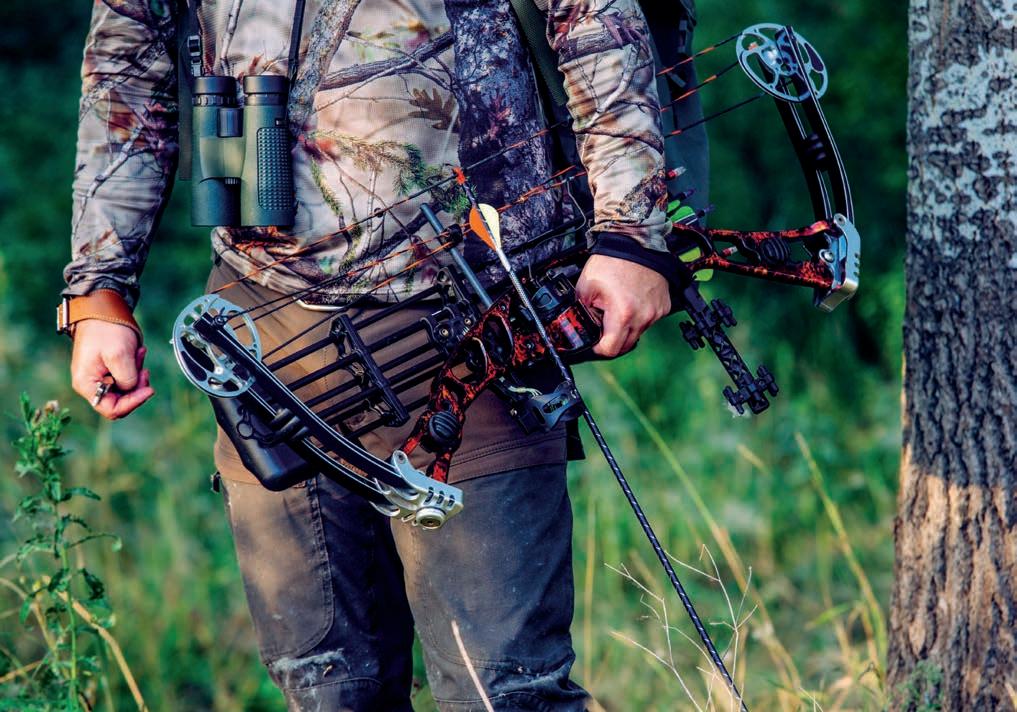
Hunters have a deep understanding of how humans are biologically connected to the land and to the wildlife with which we share the world.

Summer • 2024
19
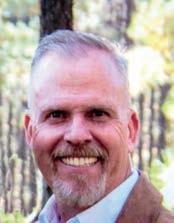
WBig Game Records
By Roy Grace
hat a wonderful afternoon here in the White Mountains of Arizona. As of this writing, the snow has receded, temperatures have reached the 60’s, reservoirs are filling to capacity from snowmelt, and I’m starting to see some greenish tint to the winter dormant grasses. Spring has finally arrived, and new things are about to appear.
Records Committee Members 2024-2026
Speaking of new things, I would like to introduce the Pope and Young Club’s Records Committee members for the 20242026 term. From the western portion of our country, we have Ed Fanchin (AZ), Gil




Hernandez (NV), Barry Smith (CO), Roger Atwood (ID), Jim Willems (NM), Tim Rozewski (OR), Mike Opitz (WA-B&C Records Chairman) and Drake Atwood (ID). From our central areas of the country we have Ricky Krueger (NE), Stan Zirbel (WI), and Doug Strecker (MN). Our eastern member and new committee member is Jack Fields II (IN). We have Frank Noska (AK) and Pat McKenzie (SASK-CAN) from the far north portion of North America. I want to thank all these well-qualified measurers for volunteering to serve on this committee. We have a lot of work to do, and their input is always valuable.
New Category Approved –
Non-typical Tule/Roosevelt’s Elk
I am happy to announce that the voting membership has approved (97%) that the Club adds a new category to our records program: non-typical Tule/Roosevelt’s elk. As I’ve reported in previous columns, this category will accept and document trophy non-typical elk that have the minimum required abnormal points (Tule-10” / Roosevelt’s-15’) BELOW the G4. They must meet the minimum non-typical score of 245” for Tule and 255” for Roosevelt’s, respectively. Those already in our records system that qualify for this category will be moved, and the trophy owner(s) will be notified.
The records committee is finalizing this



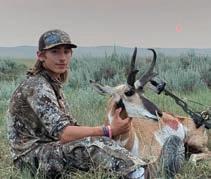













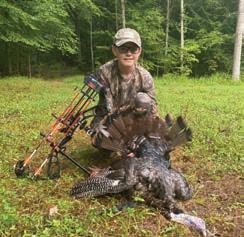













2024 • Summer
20
HUNTING IS CONSERVATION For more information on S3DA: visit www.S3DA.org or Email: infos3darchery@gmail.com

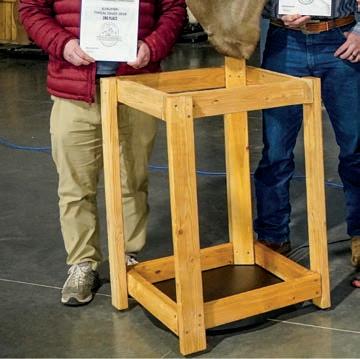
category's newly created score form. Once approved by the committee and the Board, it will be placed on our website for measurers to download. The committee is also writing an addendum for the joint measuring manual to reflect this addition. Once both of these tasks are completed, every measurer from both the Boone and Crocket Club (B&C) and our Club will receive a letter from me explaining this additional category, how to measure and document non-typical points, and a copy of the newly approved score form. Be patient, as this may take a little time.

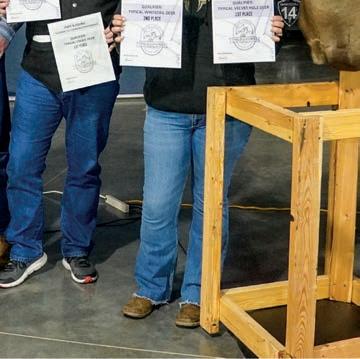
Records Committee Upcoming Discussions
The Board has asked the records committee to discuss two items and provide a recommendation on whether to revise and/ or keep our current policy(s) in place. The first discussion item involves using a light attached to the sight. Currently, using a battery-powered sight light is prohibited under our Fair Chase rules (#7) and our bylaws (Article VI, section C 2). As reported in the Spring 2024 Ethic, lights without the battery installed are allowed. However, the Board would like the committee to review


this policy and determine if we should consider allowing them completely (sight usable with the battery installed).
The second discussion concerns the required amount of non-typical points for the non-typical whitetail deer category. Currently, a non-typical whitetail deer must have 15” of abnormal points and meet the minimum score of 155”. Some of our Board members feel we need to review this number (15”) and determine if it is still applicable or too high. As such, the committee will complete the task of analyzing all of our records data to see if the current

Summer • 2024 21
Utah Bowhunters Bash Field Judging qualifiers
Big Game Records
continued



minimum amount of abnormal points and score is still reasonable today. I will keep our measurers and members updated on these topics as we finalize our data/review. Please note that the first item, not allowing lighted sights, is in our bylaws and can only be changed by the voting membership (regular and senior members).
New Records Coordinator


I would like to formally introduce and welcome Blake McPhaul to our records team. Blake was hired as our new records coordinator to handle all initial trophy entries and administrative duties pertaining




to records. So, your initial entry screenings, entry status checks, final certificates, etc., will be handled by him. Blake is an official measurer from Kingsville, Texas, where he will be working remotely from his home. Our Executive Director, Justin Spring, is working on a more reliable phone service for the office and remote staff, but if you need to contact Blake, contact Shelby at the main office and she can put you in phone touch with him. You can also email him (best) at Blake@pope-young.org. Welcome aboard, Blake!
Potential World Records
I want to remind our incredible volunteer measurers that if you measure a trophy animal that meets or exceeds the current world record, PLEASE email me and the Director of Records (Tim Rozewski) as soon as you submit the entry so we can review and determine if a special panel is needed. Please remember that no animal is an official world record until it has been accepted by the Club AND it has been verified by a panel. If you have any questions, feel free to contact me directly for further clarification.










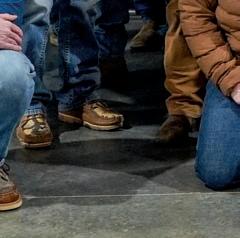


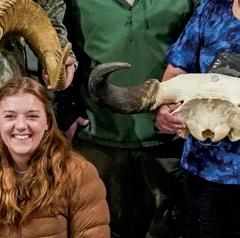



2024 • Summer
22
Utah Bowhunters Bash Official Measurer Class
2025 Convention
The 34th Biennial P&Y Convention will be here before you know it. Start saving money, securing your vacation requests, and planning your travel for an incredible time in Phoenix/Glendale from April 9-12, 2025. There will be lots to do for members and their spouses, and the weather should be incredible at that time of year. For you measurers that are only P&Y certified measurers, B&C will be offering a one-day overview course to certify you as an official measurer for




them as well. There will be more information to come.
Closing
I want to thank once again our volunteer measurers who strive to represent our Club at the highest level. Your work is not unnoticed by the board, our staff, and, most importantly, me. Keep up the good work, and I hope to see all of you at the 2025 convention in Phoenix. Until then, hunt ethically and within Fair Chase, as it is often contagious!

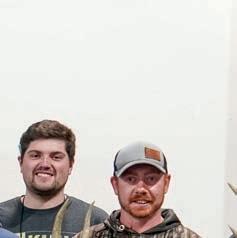
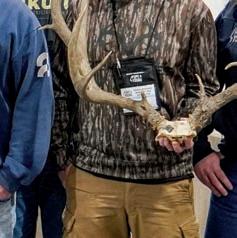


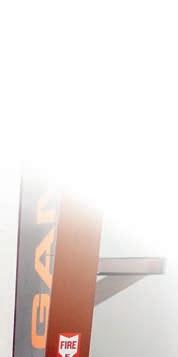

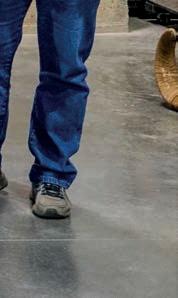


Summer • 2024 If It’s Crystal Clear... ...It’s Kowa #kowaoptics Kowa American Corporation 20001 South Vermont Avenue, Torrance, CA 90502 U.S.A. T: +1 (800) 966-5692 | E-mail: customerservice@kowa.com www.kowa-usa.com A range of sporting optics delivering one of the most immersive and detailed views of the natural world. Ultimate clarity with exquisite engineering. Built to last a lifetime. SERIES FOR THE PINNACLE OF OPTICAL PERFORMANCE 23
NEW MEMBER RECRUITMENT PROGRAM
NEW MEMBER RECRUITMENT PROGRAM

THIS APPLIES TO GENERAL MEMBERSHIPS ONLY
(no renewals, noyouth memberships)
THIS APPLIES TO GENERAL MEMBERSHIPS ONLY (no renewals, noyouth memberships)
Thediscounted membership,when submitting a record book entry, isstill in effect and DOES count toward this program!
Thediscounted membership,when submitting a record book entry, isstill in effect and DOES count toward this program!
SIGN UP NOW!
SIGN UP NOW!
Forupdatesabout this programand currentleaderboard, sign upfor our NEW Monthly O icial Measurer Newsletter (email address required). Email records@pope-young.orgor call our main office at 507-867-4144 to update your measurer contactinformation, or signinto our websiteand update it there!
Forupdatesabout this programand currentleaderboard, sign upfor our NEW Monthly O icial Measurer Newsletter (email address required). Email records@pope-young.orgor call our main office at 507-867-4144 to update your measurer contactinformation, or signinto our websiteand update it there!
DON’T FORGET!
DON’T FORGET!
All of our current Fair Chase Affidavits, Membership applications, online membership forms, and membership flyers have a space for “Referrer” or“Sponsor.”
Be sure to putyour name and OM ID in those fields in order toreceive credit. Find one online at https://pope-young.org/membership-options
All of our current Fair Chase Affidavits, Membership applications, online membership forms, and membership flyers have a space for “Referrer” or“Sponsor.” Be sure to putyour name and OM ID in those fields in order toreceive credit. Find one online at https://pope-young.org/membership-options
JOIN US ONLINE!
JOIN US ONLINE!
Besides our social media platforms for the club, we have a Facebook group for Official Measurers only,join the conversation and share your successes.
Besides our social media platforms for the club, we have a Facebook group for Official Measurers only,join the conversation and share your successes.




INCENTIVE PRIZES
INCENTIVE PRIZES
P&Y Logo KUIU cap
P&Y Logo KUIU cap
Official P&Y“OM Challenge Coin
Official P&Y“OM Challenge Coin
Ozonics Micro Scent Eliminating Car Charger
Ozonics Micro Scent Eliminating Car Charger
OMEmbroidered Vest
OMEmbroidered Vest
Clothing Package TBA(up to $350value)
Clothing Package TBA(up to $350value)
Dialed Archery Bow Sight
Dialed Archery Bow Sight
Compound Bow (Value up to $800)
Compound Bow (Value up to $800)
$ Gift Card to Bass Pro/Cabelas
$ Gift Card to Bass Pro/Cabelas Free Full Convention package for ($ value)
Free Full Convention package for ($ value)


NOTE: This program is for Official P&Y Measurerswho are active members. To participate, please make sureyour own membership is active!
NOTE: This program is for Official P&Y Measurerswho are active members. To participate, please make sureyour own membership is active!

This is as of 4/12/2024. There are 51 with memberships referred, and 139 with membership
This is as of 4/12/2024. There are 51 with memberships referred, and 139
For
informationvisit, pope-young.org/measurer-programs PRESERVE PROMOTE PROTECT.
more
Stan Zirbel WI 65 Ken Rimer WI 60 Matthew Olson OH 40 Steven Taylor IN 35 Tim Rozewski OR 20 William Bellman OH 20 Dale Weddle KY 13 Russ Spaulding WA 11 Philip Herrnberger PA 10 William Cooper GA 9 Lee Walt AR 9 Merritt Compton NY 8 Jerry Gander WI 8 Gerry Wegner WI 7 Jeff Best MI 6 James Dowd NY 6 Tony Heil WI 5 Bucky Ihlenfeldt WI 5 Douglas Erickson NY 5 LeRoy Hansen MI 5 John Gardner CO 4 Mark Miller WI 4 Gary Wegner WI 4 Stan Rauch SD 4 Jason Zins ND 4 Jason Converse SD 4 Steven Ashley WI 4 David Keene MT 4 Jack Fields II IN 4 Ben Bartlett TX 4 Robert Newton III MD 4 Kevin Krause WA 4 John Culpepper III TX 3 Gary Martin WI 3 Eric Stanosheck TX 3 Gary McCain CA 3 Lonnie Desmarais MA 3 Ricky Krueger NE 3 Sean Carls NY 3 Steve Cowles NY 3 Zack Walton CA 3 Lee Schiferl VA 3 Shannon Quinn GA 3 Roscoe Blaisdell NH 3 Donald Haseley NY 3 Mark Bara SC 3 Robert Tastsides IL 3 Jerry Lunde WI 3 Drake Atwood ID 3 Richard Pflanz IN 3 Jerad Langley OK 3
membership referred.
with
For more informationvisit, pope-young.org/measurer-programs PRESERVE PROMOTE PROTECT.
Stan Zirbel WI 65 Ken Rimer WI 60 Matthew Olson OH 40 Steven Taylor IN 35 Tim Rozewski OR 20 William Bellman OH 20
Weddle KY 13 Russ Spaulding WA 11 Philip Herrnberger PA 10 William Cooper GA 9 Lee Walt AR 9 Merritt Compton NY 8 Jerry Gander WI 8 Gerry Wegner WI 7 Jeff Best MI 6 James Dowd NY 6 Tony Heil WI 5 Bucky Ihlenfeldt WI 5 Douglas Erickson NY 5 LeRoy Hansen MI 5 John Gardner CO 4 Mark Miller WI 4 Gary Wegner WI 4 Stan Rauch SD 4 Jason Zins ND 4 Jason Converse SD 4 Steven Ashley WI 4 David Keene MT 4 Jack Fields II IN 4 Ben Bartlett TX 4 Robert Newton III MD 4 Kevin Krause WA 4 John Culpepper III TX 3 Gary Martin WI 3 Eric Stanosheck TX 3 Gary McCain CA 3 Lonnie Desmarais MA 3 Ricky Krueger NE 3 Sean Carls NY 3 Steve Cowles NY 3 Zack Walton CA 3 Lee Schiferl VA 3 Shannon Quinn GA 3 Roscoe Blaisdell NH 3 Donald Haseley NY 3 Mark Bara SC 3 Robert Tastsides IL 3 Jerry Lunde WI 3 Drake Atwood ID 3 Richard Pflanz IN 3 Jerad Langley OK 3
Dale
referred.



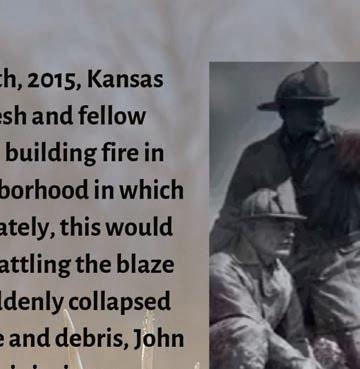



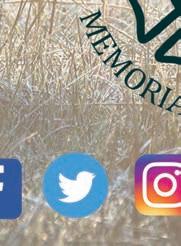
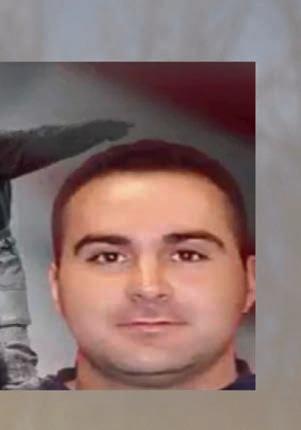
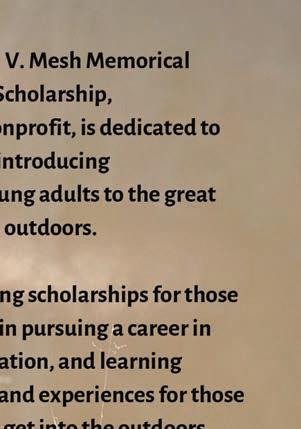


Figure 9-B
There are three separate spread measurements taken for whitetail deer: tip-to-tip spread (B), greatest spread (C), and inside spread (D). Use a wall and a carpenter’s level with a C-clamp to create the proper right-angle measurements necessary for the greatest spread (C) and the inside spread (D). The only spread measurement added to the final score is the inside spread (D), as long as it is not greater than the longer antler. If the inside spread is greater than the longer antler length, enter the longer antler length for the spread credit.
Measuring Techniques chapter of this book.
Point Determination and Count
The typical pattern of mature whitetail antler development is an unbranched main beam that normally develops from three to seven (or more), usually paired, unbranched points that arise off the top of the main beam in line with the outside edge of the main beam at spaced intervals (Figure 9-A).
Assuming these are paired, other than at the end of the beam, these are the normal points. Usually, a brow tine develops in this pattern as the first normal point, G-1, and
the second normal point, G-2, on each side is usually the longest of the sequence. As in other deer categories, the main beam tip is counted as a point but is not measured as a point as it is part of the main beam measurement. All points that come off points, burrs, and the bottoms and sides of the main beam are abnormal points. There are other abnormal points that are discussed in more detail in Chapter 3, General Measuring Techniques. The bottom line is that all normal points, other than brow points, arise off the top outside edge of the main beam.
As described in Chapter 3, a point is any
projection at least one inch long and longer than wide at some location at least one inch from the tip of the projection. Each projection should be measured to ascertain whether or not it is a point. Once it is determined that a projection is a point, the entire point length is measured from its tip down to its base. As illustrated on page 34, point base lines are established where the point joins either the main beam or another point. The base line should reflect the normal antler configuration as if the point was not present.

Summer • 2024 27
Whitetail Deer • Measuring and Scoring Antlers
The total number of points on an antler includes the number of normal points, plus the number of abnormal points, plus the beam tips. The total number of points for each antler is recorded in the appropriate box on Line A of the score chart. Point totals are supplementary data and do not add into the score.
When recording data or measurements on the score chart, note that the right and left antlers refer to the trophy’s right and left side, not the Measurer’s perspective when looking straight at the rack.
Typical or Non-Typical
The first thing to do when scoring a whitetail deer is determine whether it should be scored as a typical or non-typical. In most cases it will be quite obvious. If you are not positive, score the rack using a typical score chart to determine score. Then, double the total inches of abnormal points, and add that
What You'll Need to Score Deer
• Copy of the current score chart for typical and/or non-typical whitetail and Coues’ whitetail deer from the appropriate organization
• Pencil and pen
• Masking tape
• Quarter-inch-wide steel ring-end measuring tape
• 6-foot flexible cable with mini-hook clip or alligator clip
• Folding carpenter’s ruler with brass slide extension
• Carpenter’s level with C-clamps
You may also need:
• A quarter-inch wide-steel lip-end measuring tape
• Small carpenter’s square or credit card
• Colored tape (if abnormal points are present)

total to the final score. This will yield the non-typical score, and measurements can be easily transferred to the non-typical score chart. Pope and Young requires 15 inches of abnormal points for non-typical whitetail and 5 inches for non-typical Coues’ whitetail. Antlers meeting that threshold must be entered in the non-typical category. Boone and Crockett permits antlers with a qualifying score for both categories to be entered in either, but only one. There is absolutely no difference in how typical and non-typical whitetail deer are scored; all measurements are the same in both categories. The only difference between the two categories is how the final score is calculated. The total of the lengths of the abnormal points is deducted to arrive at the typical score and added in to arrive at the non-typical score.
Spread Measurements
Tip-to-tip and greatest-spread measurements (Figure 9-B) are supplementary data and not figured into the final score. They are recorded on the score chart to give a more complete picture of antler conformation for the trophy.
Tip-to-tip spread measurement (Figure 9-B, B) must be taken with a folding carpenter’s ruler or some other straightedge. Measure from the center of the tip of one antler to the center of the tip of the other. Tip-to-tip and inside spread measurements are very rarely the same. Tip-to-tip spread is recorded in the box on Line B of the score chart.
Greatest-spread measurement (Figure 9-B, C) is best taken by laying the rack on the floor against a vertical wall or some other perfectly vertical surface and sliding one of the antlers snugly against the wall so the skull’s length is parallel to the wall. Place a carpenter’s level, making sure it is plumb, against the outside edge (whether it is a point tip or the main beam) of the opposite antler at the greatest distance from the wall and measure the distance from the wall to the carpenter’s level with a folding carpenter’s ruler. In no case should the human eye be
2024 • Summer continued
28
2 3 1 4
Figure 9-C
Examples of abnormal points on whitetail deer (shaded orange).
relied upon for establishment of the second perpendicular line. The greatest spread is recorded in the box on Line C of the score chart.
The inside spread of main beams (Figure 9-B, D) must be taken with a folding carpenter’s ruler, using the brass extension, to complete the measurement. Care must be exercised to properly position the ruler for this measurement. The line of measurement must be at a right angle to the long axis of the skull. It must also be parallel to the skull cap (Figure 9-B, D). Thus, if one beam should be positioned appreciably higher than the other, it will be necessary to utilize a carpenter’s square or straightedge against the higher antler to properly locate the line. The actual measurement will reflect the greatest distance between the inside edges of the two main beams at their center. Make sure to keep the measurement oriented as illustrated.
If the main beams roll inwards or tilt outwards, the inside spread is taken to the centers of the main beams as illustrated. Inside spread is taken as described unless excessive divergence occurs on one or both antlers near the ends. On whitetail or Coues’ deer that flare out in a typical fashion (not excessively divergent), the inside spread may occur near the beam tips. Antlers will commonly gradually diverge in development but if an excessive/abnormal flare is present, the inside spread measurement cannot include spread caused by the excessive flaring of the antler beam. Measurement is then taken at the greatest inside spread from the location where the antler (or antlers) begins to diverge from the normal curvature. The inside spread of main beams is recorded in the box on Line D of the score chart.
Spread credit, also on Line D of the score chart, cannot exceed the length of the longer antler main beam. If the inside spread measurement does exceed the longer main beam, record the longer main beam length in the spread credit box on Line D of the score chart. Although the inside spread is frequently greater than the length of the longer antler on mule deer, this situation is rather
uncommon on whitetail deer.
Main Beam and Point Lengths
Length of beam and antler point length measurements are taken with a flexible steel cable or a quarter-inch-wide, flexible steel lipend tape. The use of a round, flexible steel cable (available from both organizations) greatly speeds up the measuring process while yielding an accurate measurement. However, only the quarter-inch-wide ringend tape can be used for circumference measurements. Before measuring, place masking tape on the intersection of the points and beam or other points, and draw base lines. Base lines are established to distinguish the main beam from a point or separate a point branch from
its parent point. A good method of marking base lines is to pull a measuring cable across the point base resting on top of the parent antler material. The base line is marked on the masking tape with a pencil along the lower edge of the cable. A natural bending or curving of the opposite edge of the point or beam should be reflected in the base line. Drawing a straight base line when the tine or beam is actually bending will incorrectly increase point length. These base lines are necessary reference points to ensure the line of measurement stays in the center of the beam.
Antler points are then measured
If a single point comes off the top inside edge of the main beam and is not in line with the outside edge of the main beam, it is considered an abnormal point (shaded orange).

Summer • 2024 29
G-1
G-2
G-3
G-4 F
Figure 9-D
Whitetail Deer • Measuring and Scoring Antlers
Figure 9-E
Extra unmatched points at the end of the main beam (shaded green) are counted as normal and measured accordingly. The opposite antler will have a zero measurement for that point.
along the outside of their curve in the center of the tine. In almost every case, the points G-2, G-3, G-4, G-5, etc., curve inward. If a point curves outward, measure it on the inside to reflect the outer curve of the point. In the case where it is not obvious which direction the point curves, measure both sides and record the longer measurement as the point length. It is never correct to measure along the front or back edge of a point to determine its length. The same procedure applies to abnormal points as well.
To measure any beam or tine length, place the cable along the outer curve of the beam or point. Attach a mini-hook clip or an alligator clip to the cable to indicate the end of the main beam or tine. Then hold the cable straight against a folding carpenter’s ruler or straight edge as illustrated in the General Measuring Techniques chapter to record the length measurement. On antler points that are generally straight, the lip end can easily be hooked on the end of the antler point and the tape stretched across to the point’s base line.
When using a quarter-inch-wide tape on

a curved point or antler beam, mark locations and pivot the tape along the line of measurement. Before marking locations, however, put masking tape where it is necessary to make marks. Never place pencil or other marks directly on the antler itself.
The length of antler main beam measurement (F) is illustrated in Figure 9-A. Measurement begins at the point where the center line of the antler along the outer side intersects the bottom edge of the burr. To determine this starting point, view the antlers from the side, lining up the far side with the near side. Find the middle of the burr as the antlers are viewed from this angle (i.e., the center of the burr on the outer side).
Once the starting location on the burr is noted, hook the cable or lip-end tape under the edge of the burr, and measure along the outer side of the beam toward the middle of the antler beam below the G-2 point as illustrated in Figure 9-A. From there, proceed out to the beam tip over the outer curve of the antler. This line should stay in the middle of the beam on the outer side. Measurement can be taken from either the bottom edge of the burr to the tip or from the tip to the bottom edge of the burr.
Before measuring the length of beam by either method, hold the rack in a normal, upright position at arm’s length. This will show whether or not the chosen line properly
follows the outer curve of the main beam. If the antler beam rolls inward or outward, keep the cable or tape in the middle of the beam even though the middle may not seem to be on the true outer side surface of the antler. If the beam hooks upward, stay on the outer side of the antler in the middle (not over the curve of the upper hook, which would place the measurement line along the bottom of the beam). If an abnormal point (or projection) is in the line of measurement, find the shortest path around the point above or below the projection.
In rare instances where a large abnormal growth covers the entire outside of the beam or tine, it may be necessary to use calipers to determine length. Start by making tick marks on masking tape affixed to the antler before and after the obstruction to mark the path of the length measurement through it. Then, with a cable, measure the distance from the bottom edge of the burr or base line to the first tick mark before the obstruction. Use calipers to measure the distance between the two tick marks through the obstruction. Finish by measuring the distance from the tick mark on the opposite side of the obstruction to the end of the beam or point. Add all three measurements to get total length.
In the case of webbed antlers, imagine the normal main beam as if there was no webbing. The length measurement is then taken through the center of the projected main beam. This technique applies to any webbed antler, whether the webbing occurs on one or both antlers.
Points
Next, measure lengths (Figure 9-C), of normal and abnormal points. Bear in mind:
1) Burr tines or beauty points (points arising from the antler burr) are abnormal (Figure 9-C-1)
2) Only one projection of multiple or split brow tines can be measured as the normal brow point G-1. If one of these is a clear-cut branch of the other, the branch is designated as abnormal
continued 2024 • Summer
30
G-1 F F G-2 G-1 G-3 G-2 G-3
(Figure 9-C-2). If both are separate points, choose as the normal G-1 point the one that best matches in shape and location of usual G-1 points. Generally, this will be the longer point.
3) Points arising from the sides, top inside edge, or bottom of the main beam are abnormal (Figure 9-C-3)
4) Point branches (those arising from points rather than the main beam) on whitetail deer are abnormal (Figure 9-C-4)
5) Extra points occurring below the brow tine are abnormal points, even when paired.
6) If two points (other than brow points) have a common base origin on the top outside edge of the main beam, and one is not a branch of the other, and both pair with points on the opposite antler, both are considered normal.
7) Normal points arise from the top of the main beam, in line with the outside edge of the main beam, at roughly spaced intervals and are usually paired with similar length points on the other antler.
8) Paired points arising from the top of the main beam, in line with the outside edge of the main beam, are treated as normal points even though they may be shorter (or longer) than adjacent points and have slightly different spacing than other paired points. Thus, a pair of short points occurring between G-1 and the next set of taller points would be treated as G-2 points.
9) If a rack has two rows of side-byside points coming off the top of each antler, one row must be treated as abnormal points. As normal points must come off the top outside edge of the main beam, the outer row points are measured as the normal points, and the inner row points off the top inside edge of the main beam are the abnormal points.
A single point—paired or not with
a similar point on the opposite antler—that comes off the top or the top inside edge of the main beam but not in line with the outer edge of the main beam is considered an abnormal point. Such an offset point most commonly occurs between the normal G-2 and G-3 points . If such an offset abnormal point (Figure 9-D) is matched with a normal point on the opposite antler, the matching point on the opposite side is also abnormal because it is a non-symmetry point. If there is a shelf at the base of an otherwise normal-looking point, that point is an
abnormal point. However, if the shelf is caused by an abnormal growth or point, it may be a normal point.
10) Extra, unpaired points at the end of the beam that project upward along the outside edge of the main beam (and generally in the usual spacing pattern) are treated as normal points (Figure 9-E). Enter a zero for the missing point(s) on the other side. Since these unmatched points at the end of the beam are matched against a zero value, their lengths will be subtracted in the Difference Column, essentially negating their presence. The determination of these as normal points should be the same whether the trophy is entered in the typical or nontypical category.
11) If an extra point (unpaired, and not one of the normal pattern of
There is no limit to the number of normal points on whitetail deer antlers.

Summer • 2024 31
G-1 F G-2 G-3 G-4 G-5 G-6
G-7 G-8
Figure 9-F
Whitetail Deer • Measuring and Scoring Antlers
Figure 9-G
The most common unmatched point is between the G-2 and G-3 points. The point shaded in orange is an abnormal point.
points) arises from the top of the main beam, is in line with the outside edge of the main beam and upsets the interval spacing/pairing, it should be counted as abnormal (even though it is normal in origin other than being paired) to avoid the artificial penalty for lack of symmetry between points that would occur if it were counted as a normal point. Such points are referred to as non-symmetry points and will be discussed in more detail in the material that follows.
12) There is no upper limit to how many normal points might occur on a whitetail rack (Figure 9-F), but the usual pattern is seven or fewer (plus beam tip) per antler, and the score chart reflects this pattern. In the extreme rarity that more than seven normal points occur, measurements of the extra point(s) could be included as additional line(s) on the score chart and explained in the Remarks section.
13) If a G-1 point (brow tine) is missing on one antler, treat the existing brow tine on the opposite antler as a normal point, and match it against a zero value

for the missing G-1.
14) An unmatched normal point is treated as a normal point if it is: 1) a point opposite a missing brow tine that never grew or 2) a point opposite a broken normal point less than an inch long or 3) an unmatched point at the end of the main beam. Keep in mind one side of the rack may exhibit two or more unmatched points at the end of the beam. If no matched set of points exist further on the beam, there is no maximum number of tines that can exist at the
end of the beam. Certain special cases are covered in General Measuring Techniques, Chapter 3. The lengths of the individual normal points (G-1, G-2, etc.) and abnormal points are recorded in the proper boxes on the score chart. If a normal point has been broken off to less than an inch long, record a zero to indicate its condition and note the action in the Remarks section. Such action preserves the sequence and avoids any artificial penalty for non-symmetry.
Additional Comments
If an extra unmatched point, that is a normal point by definition, occurs at some position other than at the end of the beam, it is treated as an abnormal point. Such points are referred to as non-symmetry points. If this point were paired on the opposite beam, it would be treated as a normal point. Thus, a rack must display more normal points on one side than the other to even be considered as one that has a non-symmetry point. While these unmatched points can occur at any location, they are most common between G-2 and G-3 as illustrated in Figure 9-G. One specific example that may
continued 2024 • Summer
32
F F
G-1
G-2 G-3 G-1 G-2 G-3 G-4 G-4
give rise to this situation is the presence of a common base point with G-2 on one side and a forked G-2 on the other. In such cases, it is likely the point sharing the common base with G-2 is extra as it may be matched against the fork, which is an abnormal point on the other side.
If the point is unmatched at the end of the main beam, it is normal. If it is unmatched between normal points, it is abnormal. The determination is the same whether or not the deer is being measured as a typical or nontypical entry. In cases where a point is ruled a non-symmetry point, please use the Remarks section to highlight this decision. Points are measured either from the base lines established on the main beam to the tip of each point or from point tip to the base line. Generally, points end in a sharp cone shape with the measurement being to the tip of this cone. Should the point end in a noticeably blunted condition, like a human thumb, the measurement line can be continued to the midpoint of the rounding. If a point (or beam) is broken and not a round blunt end, use a credit card to square off the end of the point. If a rack has numerous points and/or many abnormal points to keep track of, mark each with colored tape. Varying colors can be used to denote typical, abnormal, and non-qualifying points. As each qualifying point is measured to its proper base line and recorded on the score chart, remove the colored tape to show it has been measured. Remember, a main beam tip is not measured as an individual point because its length is recorded as length of main beam. When measuring non-typical entries, record the abnormal points in a systematic fashion. Start at the burr and measure each abnormal point along the main beam and off each normal point. If you inadvertently fail to measure one point, it will be far easier to determine which point is missing if you have proceeded in this manner.
Establish base lines for individual points to distinguish and differentiate the material from the main beam or separate a point branch from its parent point. Before marking
base lines, place masking tape over areas where the bases will be drawn. Properly drawn, the base line should delineate the same amount of beam (or parent) material below the point’s center as can be ascertained on either side of the point being measured. A good method of marking base lines is to pull a measuring cable across the point base resting on top of the parent structure antler material. Then mark the base line on the masking tape with a pencil along the lower edge of the cable.
Antler points are measured along the outside of their curve. In almost every case, the points G-2, G-3, G-4, and others in the sequence curve inward and not outward. If a point should curve outward,














measure it on the inside of the rack (the outer curve) of the point. When it is not obvious which direction the point curves, measure both sides and record the longer measurement as the point length. It is never correct to measure along the front or back edges of a point to determine its length. This procedure of measuring points on the outside of their curve applies to abnormal points as well. The brow tines, although usually straight, may be curved either backward or forward. If they are curved forward, they are measured on the backside in order to reflect the outer curve of the point. If they are curved backward, they are measured on the front side, again to reflect the outer curve. Note such actions in the Remarks section.























Figure 9-H

































If the G-4 point is missing, locate the H-4 circumference by extending the G-3 point length line from the center of the point base to the bottom edge of the main beam, then measuring from the midpoint of that line (A) to the main beam tip (B), dividing that distance in half and marking the location for the H-4 circumference at C.

Circumferences




Four and only four circumferences are always taken on whitetails regardless of the number of










































































Summer • 2024 33
G-1 H-1 F H-2 H-3 G-2 G-3 back mea B C A
Whitetail Deer • Measuring and Scoring Antlers
normal points. The four circumferences locations (H-1, H-2, H-3, and H-4, illustrated in Figure 9-A) should be taken only with a ringend measuring tape. Loop the tape around the main beam. Then pull the tape together and gently slide it back and forth along the beam until the smallest circumference measurement is obtained. If you use a lip-end tape to measure circumferences, overlap the tape at a full 10-inch increment to simplify the procedure. Be sure to subtract the 10-inch overlap before recording the measurement.
The H-1 circumference is taken at the narrowest place between the burr and the G-1
(brow tine); the H-2 circumference is taken at the narrowest place between the G-1 and G-2 points; the H-3 circumference is taken at the narrowest place between the G-2 and G-3 points; and the H-4 circumference is taken at the narrowest place between the G-3 and G-4 points.
points beyond the G-2 point are present, both H-3 and H-4 would be taken at the midpoint from the center of the G-2 point to the beam tip again at the center point.
9-I



Measurers may encounter a whitetail deer rack that didn’t grow a G-1 point on one or both antlers. If the G-1 point is missing (didn’t grow), H-1 and H-2 are taken at the same location (Figure 9-I), the smallest circumference between the burr and the G-2 point. However, if there is a projection in place of the G-1 point (bump) that does not qualify as a point, H-1 and H-2 measurements are taken on either side of the projection, as would normally be done

If there are fewer than four measured normal points per antler, the H-4 circumference is taken on the main beam halfway between a point in the center of the beam, directly in the center of the G-3 point base and the beam tip (Figure 9-H). To make this measurement, determine the center of the base of the G-3 point where it meets the main beam, extend a line from the center point of the base to the center of the beam and then measure from this center point to the beam tip. The halfway point of this line is the correct location for the H-4 circumference. But if there is an indication of the presence (bump) of the G-4 point, even though the projection does not qualify as a G-4 point, it is proper to take the H-4 circumference between the G-3 point and the bump. If no normal




If the G-1 is missing, take both the H-1 and H-2 circumference measurements in the same location.


















continued 2024 • Summer
34
G-1 F G-2 G-2 G-3 G-4 G-5 G-3 G-4 G-5 F H-1 H-2 H-1 H-2
Figure

Big Game Species Profile White-tailed Deer
By Mike Schlegel

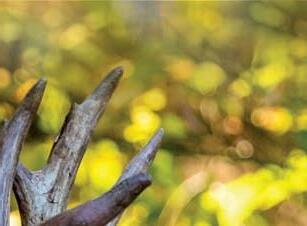


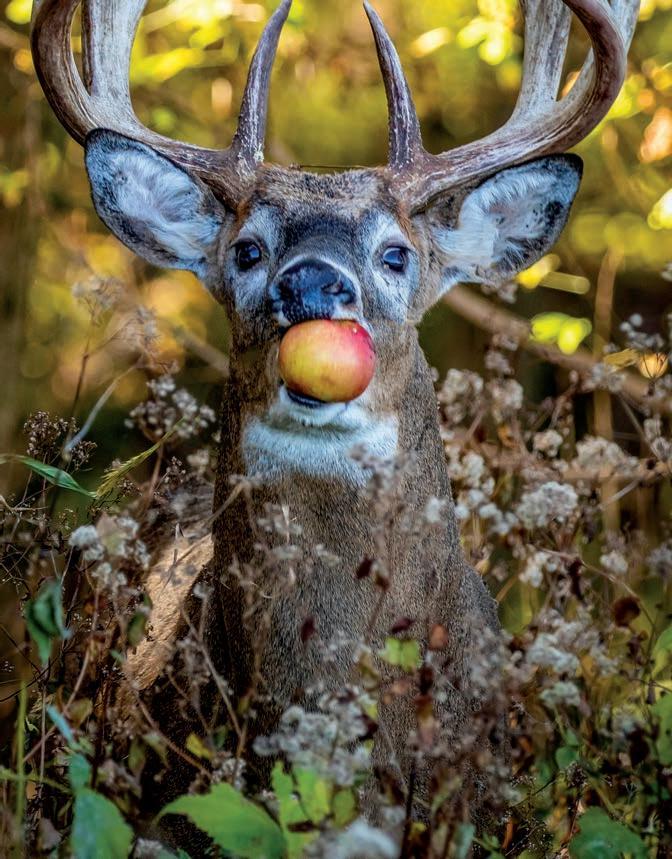



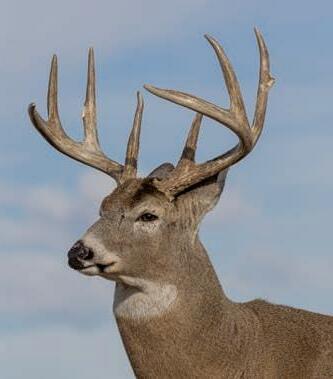
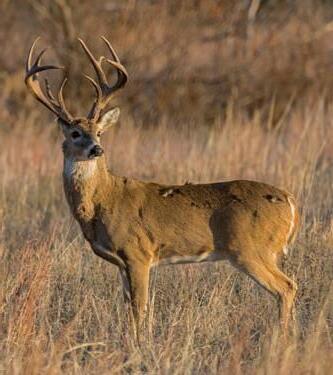
2024 • Summer
36
PHOTO COURTESY OF PAUL BURTON






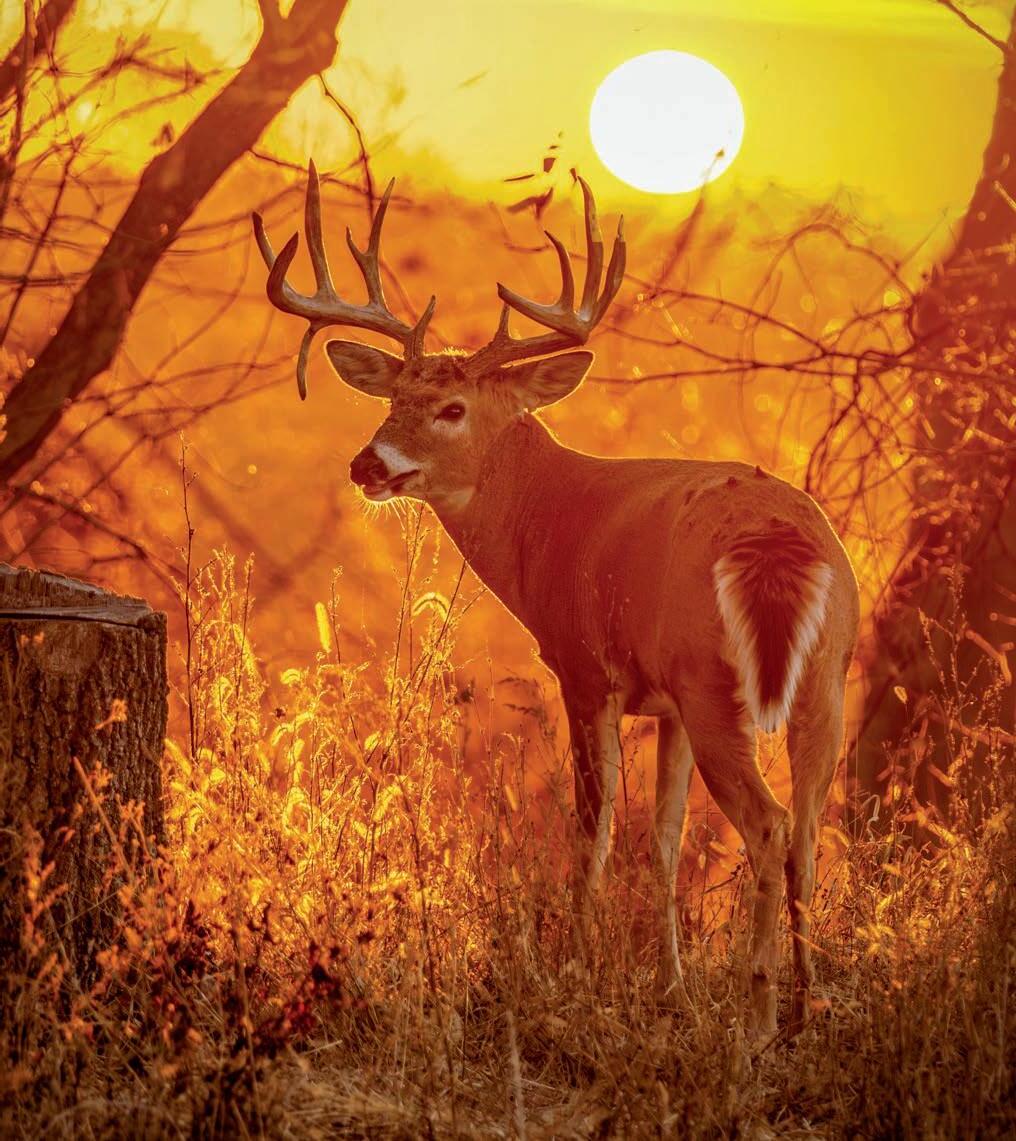
Summer • 2024
COURTESY OF PAUL BURTON 37
PHOTO

Big Game Species Profile White-tailed Deer

Scientific Classification
Class: Mammalia - milk-producing mammary glands for feeding young, neocortex region of the brain, have fur or hair, and three bones in the middle ear.
Order: Artiodactyla - even-toed animals
Subfamily: Capreolinae - “new world deer”; moose, caribou, Roe deer, and deer
Genus: Odocoileus“hollow-tooth”
Species: virginanus - white-tailed deer
Subspecies: Currently there are 38 Figures 1, 2, and 3 display the distribution for the 38 currently recognized subspecies of white-tailed deer. The subspecies information and distribution maps are courtesy of Dr. Jim Heffelfinger, author of Chapter 1, Biology and Management of White-tailed Deer, edited by David G Hewitt. Despite the advancements in DNA technology, several factors complicate DNA testing for specific subspecies delineation—specifically historic translocations of white-tailed deer. For example, the current white-tailed deer population in Virginia is the cumulation of translocations from 11 different states; whitetails from Mexico have been introduced in Mississippi and Florida has received whitetails from Wisconsin and Texas (Heffelfinger). These are just a few of the translocations that complicate DNA subspecies identification. Regardless of whether you are a lumper or splitter when it comes to scientific classification, whitetailed deer is the most widely distributed and numerous of the deer species. Changes to habitat conditions, mainly by wildfire, timber harvest, and agricultural activities, have resulted in white-tailed deer populations moving northward into the Yukon and North West Territories. The furthest north was a doe taken about 65 miles south of the Arctic Circle (Heffelfinger).







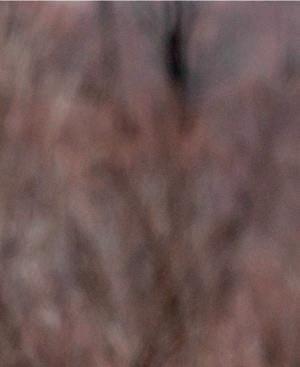

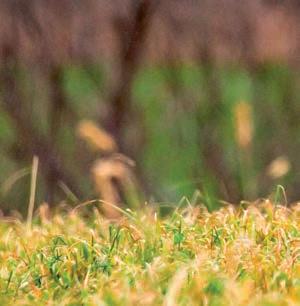
2024 • Summer
North American Subspecies FIGURE 1 Central America Subspecies
2 38
continued
FIGURE


The coat of the white-tailed deer, as with other deer species, varies seasonally. The gray-brown fall-winter coat sheds to a reddish-brown-gray coat for the springsummer months. The under-body is white, plus a white throat patch. Often, there is a white ring around the nose. As the name implies, they are most noted for their white tail. It is gray-brown on the surface, often with a little black on the dorsal surface near the tip. All who have hunted these deer are very familiar with the white underside of the tail (Figure 4)!
All deer species have several scent glands. The function of scent glands varies; however, most commonly, they are used to communicate visually, vocally, and by smell. The scent glands deer hunters need to





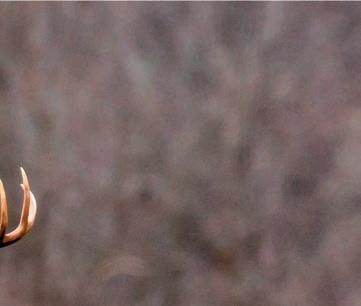


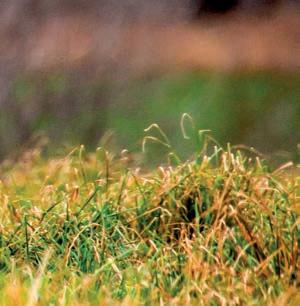

Summer • 2024
South America Subspecies
39
FIGURE 3
FIGURE 4

Big Game Species Profile White-tailed Deer





know and understand are tarsal (Figure 5), metatarsal (Figure 6), interdigital (Figure 7), forehead (Figure 8), preorbital (Figure 9), nasal, and salivary. Scent-glands-101making-sense-of-whitetails-scent-glands., with text and photos by Tes Randle Jolly was originally published in GameKeepers: Farming for Wildlife Magazine and reprinted by Mossy Oak, September 19, 2019, is a great source for understanding the function of each of the glands.

In addition to the functions mentioned above, the metatarsal gland can be used to differentiate white-tailed, mule, and black-tailed deer. This gland on a whitetailed deer is circular and approximately an
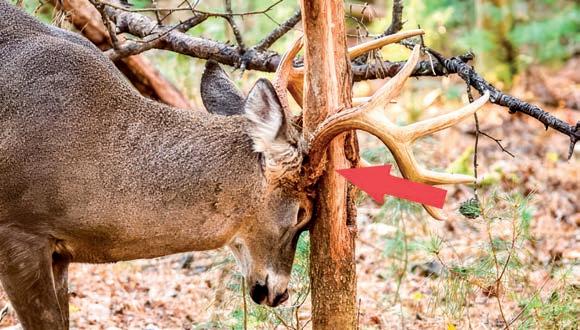



2024 • Summer continued PHOTO COURTESY OF JON HEALE 40
Tarsal Gland
FIGURE 5
Orbital Gland
FIGURE 9
Interdigital Gland
FIGURE 7
Forehead Gland
FIGURE 8
Metatarsal Gland
FIGURE 6
Metatarsal Gland
FIGURE 10


inch in circumference, whereas it ranges in length from 5”-6” for mule deer and 3” to 5” for black-tailed deer (Figure 10)
All deer have great eyesight and a tremendous ability to detect movement. They can also see colors, with blue and yellow being the primary colors they detect. Therefore, the use of ‘hunter red’ does not make the hunter more likely to be spotted by deer; it’s their movement that gives them away.
The body weight of white-tailed deer varies greatly. Populations in the northeast, central, southcentral states, and southern
Canadian provinces have greater body weight, with confirmed buck weights in the 400-pound range. However, the norm for field-dressed mature bucks is 200-225. In general, mature bucks in the fall will range between 150-300 pounds, and adult females weigh 80-150 pounds, with 200 pounds recorded. The western and southern populations will average less.
White-tailed buck antlers are grown and shed annually. Male deer in the deer species have a pedicle, the base of the antler, on the frontal bone. The female caribou is the exception and grows antlers.


The size and structure of the antler varies between individuals and from year to year. Three main ingredients determine antler development in bucks; age, genetics, plus the quality and quantity of their nutrition. In addition, antler growth is linked to hormones, which in turn, is associated with daylight – photoperiod. The “rack” of a white-tailed buck consists of a main beam on each side, beginning at the pedicle/burr connection. All points project off of this main beam, with 4-5 points as the norm (Figure 11).
The new-growth antler is covered with a

References
deerassociation.com/10-weird-parasites-live-inside-deer/ deerassociation.com/ndas-deer-report
Biology and Management of White-tailed Deer by D. G. Hewitt
John C. Kilgo, et. al. 2019. Coyotes and white-tailed deer populations in the east: A comment on Bragina et al. (2019) JMW: 83,8, p: 1636-1640
Adam C. Edge, et. al. 2023. White-tailed deer (Odocoileus virginianus) fawn survival and the influence of landscape characteristics on fawn predation risk in the Southern Appalachian Mountains, USA. PLoS One. 2023; 18(8): e0288449
extension.missouri.edu/publications/g9486 www.inaturalist.org
www.wikipedia.org
www.extension.missouri.edu/publications/g9489 www.purdue.edu/fnr/extension/deer-vehicle-collisions AHEIA-Deer-Workbook.pdf
www.legacywildlife.comMossy Oak, September 11, 2019. Scent-glands-101-making-sense-of-whitetails-scentglands. Text and photos by Tes Randle Jolly | Originally published in GameKeepers: Farming for Wildlife Magazine https://www.ifish.net/threads/black-tailed-deer-ineastern-wa.518681

Summer • 2024
41
FIGURE 11
WT buck antler structure

Big Game Species Profile White-tailed Deer

hair-like ‘velvet’ membrane (Figure 12). The velvet provides blood for antler growth. This velvet stage of antler growth is late spring through late August. During the majority of antler growth, the antler is sensitive and susceptible to injury. Deformed or unnatural antler growth normally happens when an antler is injured. However, body injury during antler growth may also result in a deformed antler. Research has documented some interesting facts regarding deformed antlers. Interestingly, injuries to either front leg will result in a deformed antler on the same side as the front leg injury, while injuries to either rear leg result in a deformed antler on the opposite side of the injured leg. In addition, an injury to the pedicle will result in a deformed antler. The antler begins to mineralize (harden) late in

the summer. After growth, the velvet dries. Over time, the velvet will fall off on its own. However, bucks speed up the process by rubbing on trees and shrubs. Rubbing is also carried on during the rut period; however, during that time, it’s to display and scentmark. Shortly after the rut, usually from late December and through late winter, there is a cellular change between the pedicle and the antler that results in the pedicle-antler bond degenerating, allowing the antler to detach from the pedicle and drop off.
The rut occurs from late October through November; however, the peak of the rut varies regionally. Population density, plus quality and quantity of forage, may also influence the rut sequence. Female whitetailed deer normally breed first at 1 ½ years of age. The gestation period flocculates


around 200 days with fawn-drop from the last of May through early June. Does isolate themselves to give birth, keeping the newborn hidden for 2-4 weeks. Twinning is very common. Fawns weigh 6-8 pounds at birth and are spotted (Figure 13). By early fall, the spots have disappeared. As in many species, male newborns tend to weigh more than females. The fawn(s) nurse 4-5 times per day. The doe licks the anus to stimulate urination and defecation, consuming the waste to eliminate scent in the area. Weaning usually occurs within 8-10 weeks. Fawns stay with their mother through the winter. Normally, female yearlings stay with their mother, whereas males strike off on their own.
Bucks sexually mature at 1 ½ years. Their success in breeding is dependent upon the age structure of the population; the older bucks are, the less they breed.
The life expectancy for both females and males is dependent upon several factors, but the most important is the structure of the local hunting season. Either-sex seasons and/or buck-only with liberal antlerless harvest reduce the life expectancy for females.
White-tailed deer are ruminants; their digestive system is compatible with a variety of food items. They are also very adaptable; thus, they thrive in a variety of habitats. They do best when cover is interspersed with adjacent forage areas. Their preferred forge items are determined by their geographic distribution. Regardless, their diet consists of a variety of grasses, forbs, shrubs, and conifers. They are specifically attracted to cultivated crops. Ornamental plants are also a favorite of “town deer” populations cropping up across their range.
Ruminants have a four-chambered stomach, the rumen, reticulum, omasum, and abomasum; each chamber serving a specific

2024 • Summer continued 42
Buck in velvet
FIGURE 12



function. These chambers have specific microbes that aid in digestion. The first chamber, the largest, is the rumen, where microbes ‘digest’ or ferment food items and produce volatile fatty acids, a major source of energy. The reticulum allows small food particles to pass to the omasum. The larger particles are ‘squeezed’ into a ”cud” and regurgitated to be chewed to further reduce food particles for digestion. The omasum is important for the absorption of water, electrolytes, volatile fatty acids, minerals and the fermentation of food. In the abomasum, hydrochloric acid is produced, and digestive enzymes break down proteins. Also, digestive enzymes secreted from the pancreas break down fats. These secretions help prepare proteins for absorption in the intestines. The small and large intestine complete the rumen digestive system. Most of the digestion and nutrient absorption occurs in the small intestine where villi provide for nutrients to enter the blood and lymphatic systems. In the large intestine water and electrolytes are absorbed, vitamins are produced and absorbed, and lastly, undigested food particles are passed
This complicated rumination process is why winter feeding of wild ruminates is discouraged. Granted, microbes change seasonally; however, the process is gradual and occurs over a three to four-week period, whereas an abrupt change from a winter diet to a high-protein artificial diet doesn’t allow for the change in microbes needed for thorough digestion.
White-tailed deer populations, in general, are more ‘rural’ in distribution than the mule deer and black-tailed deer. Thus, non-hunting mortality is quite different. For example, according to the Insurance Institute of Highway Safety, there are approximately one and a half million deervehicle accidents per year, most of which result in dead deer. Although there was no data regarding deer species, white-tailed deer were the only species mentioned in the article. There are ongoing programs to reduce deer-vehicle accidents; specialized roadside reflectors, over and underpasses, signing, etc.
Considering their broadscale distribution, there are a variety of predators that
prey on them. The impact of predation will vary, depending upon the population status of the deer population and the predator. Although cougar predation is possible, the overall impact is low due to low cougar density across their range. Coyote predation, especially on fawns, is a different situation. Numerous field studies have unanimously concluded that coyote predation on whitetailed deer new-born fawns can significantly influence deer population dynamics.
The most recent research, 2023, reported on a fawn survival study in the Southern Appalachian Mountains. The conclusions are as follows: “Coyote-caused mortality occurred over a longer period at a consistently higher magnitude than all other forms of mortality, indicating possible delayed preyswitching behavior and coyote predation as an important factor of fawn survival. The low recruitment of fawns influenced by high predation rates and homogenous habitat conditions is likely the cause of deer population declines in the region.”
“Fawn survival studies completed in the southeastern U.S. have found predation to be the main cause of death for fawns,

Summer • 2024 43
via the rectum.
Spotted fawns
FIGURE 13

Big Game Species Profile White-tailed Deer

with coyotes acting as the primary source of mortality. The only exception occurred in another 3-predator system in Louisiana where black bear predation was the greatest source of fawn mortality at 33%”
Although the coyote is documented as the main predator of white-tailed deer, many other critters try to eat them. The most common are cougar, wolf, bobcat, black bear, and wild hogs. The impact of predation as it relates to wildlife management is a contentious issue. As seen above, there are conditions where predation is significant; however, it is just one of a variety of factors that impact wildlife populations. Regardless, in situations in which there is low recruitment in ungulate populations, predation is
Disease
Infectious diseases and parasites can significantly reduce white-tailed populations. In most instances, the impact is limited to a specific geographic location. The most significant diseases are Chronic Wasting Disease (CWD) and epizootic Hemorrhagic Disease (EHD).
Chronic Wasting Disease (CWD) is caused by a mutated protein called a prion. The prions accumulate in the nervous system, eventually causing a loss of coordination and severe weight loss. Symptoms, in addition to lack of coordination and weight loss, include drooping head and ears, drooling,


and excessive drinking and urination. ICWD has been confirmed in most all deer species These symptoms don’t occur until one and a half to two years after exposure. CWD is spread by direct contact with an infected animal, including all body fluids, and contaminated plants and soil. To date, CWD has not been documented in humans, however, hunters are advised to have deer meat tested before consumption. For the most complete and updated information contact the CWD Alliance website: cwd-info.org. Incidentally, the Pope and Young Club is one of the sponsors of the Alliance. Also, hunters need to consult their respective state CWD rules and regulations to help contain this disease.
Epizootic Hemorrhagic Disease (EHD)






The world’s largest selection of traditional
PROMO CODE: PYCLUB10 GET $10 OFF YOUR NEXT ORDER OF $100 OR MORE A Pope & Young Member Exclusive Offer. Call for details. 3RiversArchery.com • 260-587-9501 The world’s largest selection of traditional and primitive archery supplies. Everything you need, with expert advice, to get you shooting a traditional bow. PROMO CODE: PYCLUB10 A Pope & Young Member Exclusive Offer. Cannot combine offers. Call for details. 3RiversArchery.com • 260-587-9501 2024 • Summer continued 44
and primitive archery supplies. Everything you need, with expert advice, to get you
one of the main factors to evaluate.


is a viral disease transmitted to deer by biting gnats. White-tailed deer, mule deer, and antelope are susceptible. It has been documented in bighorn sheep. EHD is transmitted by biting gnats. Prolonged hot, dry weather late in the summer is a common factor in EHD outbreaks. Water levels in water sources, primarily ponds, shrink, exposing moist dirt, the breeding site for gnats. Due to the water shortage, deer congregate near the water sources, exposing them to infection. The onset of EHD is very rapid, and infected deer can begin dying within eight hours. Dead deer are frequently found near water. Unfortunately, there is no treatment. EHD doesn’t affect humans.
Blue Tongue (BT) is a virus very similar to EHD; the infection source and symptoms are the same. Although BT is transmitted to deer, it most commonly occurs in domestic animals, primarily sheep.
Parasites
White-tailed deer are susceptible to a variety of internal parasites. Rarely are internal parasite infestations a source of significant population-level declines, although local impacts may occur. Hunters most commonly encounter liver fluke, lungworm, tapeworms, and protozoan. Of most importance to hunters are a tapeworm and protozoan that encyst in muscle tissue. They appear as a grain of rice scattered throughout muscle tissue. Although unsightly, cooking temperatures kill the parasite.
The main external parasites of concern to hunters are tick species, many of which harbor and transmit disease. The most notable diseases are Lyme disease and Rocky Mountain Spotted Fever. For specific information regarding these diseases, contact the following websites: www. mayoclinic.org/diseases-conditions/lymedisease/symptoms-causes/syc-20374651
and www.hopkinsmedicine.org/health/ conditions-and-diseases/rocky-mountainspotted-fever.
Hunting
White-tailed deer and the most sought-after big game animal in North America. According

to the National Deer Association’s 2023 report, 5.9 million deer were harvested during the 2021-2022 season, 88% of which were taken on private land. The harvest was split almost equally between antlered and antlerless, 2.97 million vs 2.96 million (Table 1). Table 2 displays the trend in the
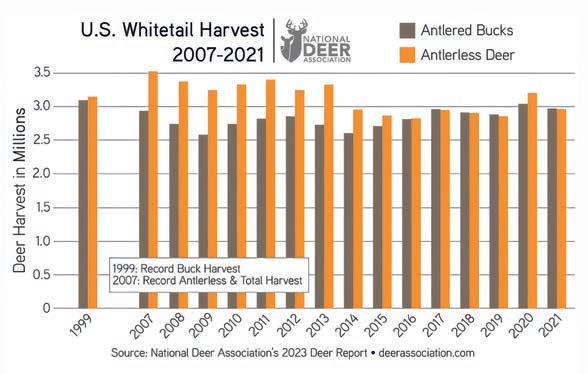



Summer • 2024 45
Table 1. US WT Harvest 2007-2021
Table 2. US Buck Harvest Age Structure

Big Game Species Profile White-tailed Deer

percentage of 3 ½ and older bucks harvested. The report also had a couple of other interesting facts: “66% of deer taken in the 2020-21 season were killed with a firearm compared to 25% with archery equipment and 9% with a muzzleloader.” And “74% of Illinois deer hunters hunt with archery equipment, the highest rate in the nation. Massachusetts has the most muzzleloader deer hunters at 70%.”
According to Club statistics, 85%+ hunt whitetails from tree stands with ground blinds a far distant second. In addition, hunters stalk, still-hunt, call, and where
legal bait and use dogs. Most are taken at less than 30 yards and the recovery distance is predominately less than 100 yards. Compound bows, in the 60–70-pound range, and expandable broadheads are the norm.
Pope and Young Club Record Statistics
There are four categories for white-tailed deer; typical, non-typical, typical velvet, and non-typical velvet. Collectively, there are 73,756 entries; 67,367 (91%) are in the typical category, 5,739 (8%) are non-typical, with typical velvet (557) and non-typical

velvet (73) comprising 1% (Table 3). In the typical category, 55,770 (83%) score less than 150, and in the non-typical group, 94% score less than 210. This trend is the same for the last 10-year entries.

Table 3. White-Tailed Deer Score Breakdown All-Time & Last 10 Years by Category
Typical All-Time ScoreNumber
200+ 2
190 - 190 7/833
180 - 189 7/8215
170 - 179 7/8996
160 - 169 7/92,892
150 - 159 7/87,459
140 - 149 7/815,137
130 - 139 7/824,902
125 - 129 7/815,731
Total 67,367
Typical Velvet All-Time ScoreNumber
180+ 2
170 - 179 7/816
160 - 169 7/932
150 - 159 7/878
140 - 149 7/8122
130 - 139 7/8185
125 - 129 7/8122
Total 557

Last 10 Years
ScoreNumber
200+ 0
190 - 190 7/811
180 - 189 7/872
170 - 179 7/8 254
160 - 169 7/9669
150 - 159 7/82,015
140 - 149 7/83,893
130 - 139 7/85,887
125 - 129 7/83,754
Total 16,555
Last 10 Years
ScoreNumber
180+2
170 - 179 7/810
160 - 169 7/916
150 - 159 7/829
140 - 149 7/8 54
130 - 139 7/873
125 - 129 7/840
Total 224
Non-Typical All-Time ScoreNumber
300+ 2
280 - 299 7/82
250 - 279 7/815
230 - 249 7/8 77
210 - 229 7/9238
190 - 209 7/81,005
170 - 189 7/82,260
155 - 169 7/82,140
Total 5,739
Non-Typical Velvet All-Time ScoreNumber
250+ 2
220 - 249 7/84
200 - 219 7/910
180 - 199 7/817
160 - 179 7/831
155 - 159 7/89
Total 73
Table 4 displays the all-time top 10 locations and those of the last 10 years for each of the four white-tailed deer categories. In the typical category, Wisconsin accounts for 17 counties in the all-time and last 10 years and 13 counties in the last 10-year group. Also, seven of the all-time top 10 counties in the typical category are in the all-time top 10 in the non-typical category. In the velvet category, 50% of the entries are from Kentucky. Also, 16% of the non-typical velvet category comes from Canada.
Last 10 Years
ScoreNumber
300+2
280 - 299 7/81
250 - 279 7/84
230 - 249 7/834
210 - 229 7/994
190 - 209 7/8 341
170 - 189 7/8661
155 - 169 7/8993 —————————
Total 2,130
Last 10 Years
ScoreNumber
250+2
220 - 249 7/82
200 - 219 7/95
180 - 199 7/89
160 - 179 7/813
155 - 159 7/87
Total 38
The top 10 entries for each of the white-tailed deer categories are displayed in Table 5. In the typical category, 50% of the entries were taken during the past 23 years; however, only one has been added since the 2017 whitetail profile. For the typical velvet category, nine of the ten have been taken since 2000. The majority in both velvet categories have been taken since 2000. Also, the velvet entries come from 10 states and three Canadian provinces. Whitetail Entries All-Time
2024 • Summer
46
continued
CategoryPercentEntries Typical91% 67,367 Non-Typical8%5,739 Typical Velvet1% 577 Non-Typical Velvet›1%73 73,756
——————————
——————————
—————————
—————————


Table 4. Top 10 Locations, All-Time, and Last 10 Years by Category
All-Time Top 10 Locations, Non-Typical White-Tailed Deer State CountyEntries
WIBUFFALO79
ILPIKE56
ILFULTON 41 WIDANE40
WICOLUMBIA33
WITREMPEALEAU33
WIWARREN33
ilLAKE IL31
WISCHUYER30
NYSUFFOLK30
4,976
Last 10 Years State CountyEntries
WIBUFFALO238
WITREMPEALEAU170 WIRICHLAND 142 WIPOLK109
WIMARQUETTE103 WISAUK102
WICOLUMBIA102
WICRAWFORD91
WIIOWA90
WIDANE90
Total 1,237
Country All-Time CountryPercentEntries
US98%66,267 CANADA / MEXICO 2%1,100
67,367
Total 376
Last 10 Years State CountyEntries
WIVERNON16
MNHOUSTON15
WIIOWA13
WIMARQUETTE13
WIRICHLAND13
WIDANE12
OHLKICKIN11
WICRAWFORD10
WIPOLK10
WITREMPEALEAU10
Total 123
Country All-Time CountryPercentEntries
US98%5,636 CANADA2%103
Total 5,739
All-Time Top 6 Non-Typical Velvet White-Tailed Deer State CountyEntries
KYBracken2
MT Cascade2 KYChristian2

Typical White-Tailed Deer
ScoreHunter Name AreaKill Date
204 4/8Melvin J. JohnsonPeoria County, IL10/29/65
203 3/8Hubert "Tiggy" CollinsSturgeon River, SAS10/25/03
State CountyEntries
KYGreen2 KYRowan2 WASpokane2
All-Time Top 10 Locations, Typical Velvet White-Tailed Deer State CountyEntries
GA DOUGHERTY 16
KYALLEN10
KYEdmonson10
NDCavalier9
WYCROOK8
KYOHIO7
NDRAMSEY7
NDBURLIEGH6
KYNELSON6
DESUSSEX5
Total 84
Last 10 Years
State CountyEntries
GA DOUGHERTY 7
KYALLEN6
WYCROOK4
NDEMMONS4
NDFOSTER4
KYHARRISON4
KYNELSON4
KYPULASKI4
KYJEFFERSON3
WASTEVENS3
Total 43
Country All-Time CountryPercentEntries
US91%504
CANADA9% 51
Total 555
Table 5. Top 10 White-Tailed Deer Harvest by Category Country
198 3/8Tim ReedMuskingum Co, OH11/10/04
197 6/8Lloyd GoadMonroe County, IA12/2/62
197 6/8Curt Van LithWright County, MN9/28/86
197 3/8Don R. HigginsShelby County, IL10/30/20
197 1/8Don McGarveyEdmonton, ALB9/20/91
196 6/8Justin Lee MetznerAdams County, OH10/21/06
195 7/8Barry PetersonAnoka County, MN9/16/95
195 5/8Curtis McCarty IIIDallas County, IA10/13/22
Typical Velvet White-Tailed Deer
ScoreHunter Name AreaKill Date
181 6/8Jack McNaughtonSmoky River, ALB8/31/13
181 3/8Marlin McGinnisMercer County, KY9/9/21
179 2/8David TvaitPorcupine Plain, SAS8/27/99
178 4/8Jason HouseDebolt, ALB8/28/09
176 3/8Gavin BlackFoster County, ND9/4/17
173 2/8Don EricksonStutsman County, ND9/1/17
172 7/8Gavin BlackEddy County, ND9/2/22
172 2/8Jason MillerHardin County, KY9/4/21
171 6/8Andrew SeagrenMorton County, ND8/31/19
171Nicholas BrownCampbell County, KY9/9/13
Non-Typical White-Tailed Deer
ScoreHunter Name AreaKill Date
327 7/8Luke Hunter BrewsterEdgar County, IL11/2/18
321 3/8Brian ButcherChase County, KS10/11/19
294Michael BeattyGreene County, OH11/8/00
288 4/8Deric SieckFayette County, IA11/21/16
279 7/8Del AustinHall County, NE11/1/62
269 7/8Randy SimonitchPike County, MO10/3/00
267 1/8David H. JonesMason County, IL11/5/03
264 6/8Kyle SimmonsJackson County, IA10/16/08
264 1/8Dale R. LarsonPottawatomie Co, KS11/7/98
259 2/8Rex A. MillspaughDelaware County, IN10/25/20
Non-Typical White-Tailed Deer
ScoreHunter Name AreaKill Date
271 Dallas HeinrichsHillmond, SAS9/3/12
252 2/8Weston Thad CartwrightMuhlenberg Co, KY9/3/12
236 1/8Benny OverholtMacon County, GA9/13/21
228 2/8Tom MillerWells County, ND9/2/05
222 7/8Andrew BumphreyMoose Jaw, SAS9/1/09
221 6/8Chris WarrenWinona County, MN9/17/14
219 1/8Billy HustedTensas Parish, LA10/2/07
214Jim KostroskiOlmsted County, MN9/13/03
212 2/8Troy N. RockersAnderson County, KS10/26/01
207 4/8Andrew HalliwellRed Deer, ALB9/5/20

Summer • 2024 47
All-Time CountryEntriesPercent US6184% CANADA1216% —————————— Total 73
ILPIKE590 WITREMPEALEAU
WIDANE49 WICOLUMBIA401 WISAUK390 WIWAUPACA363 WIPOLK 347 WIMARQUETTE333 WIWAUKESHA 307 —————————— Total
All-Time Top 10 Locations, Typical White-Tailed Deer State CountyEntries WIBUFFALO1,225
571
——————————
Total
——————————
——————————
——————————
——————————
——————————
——————————
—————————— Total
12


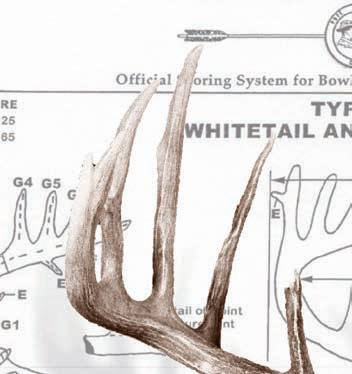
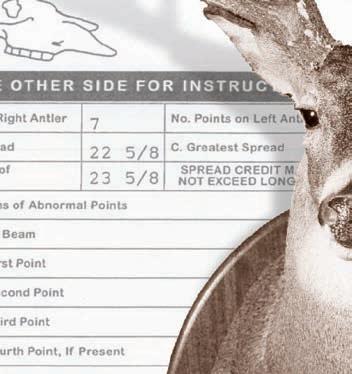


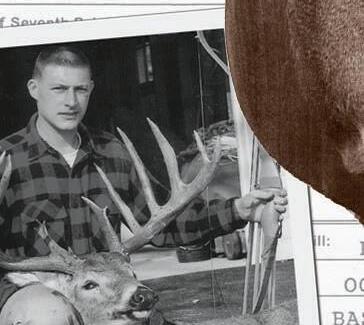
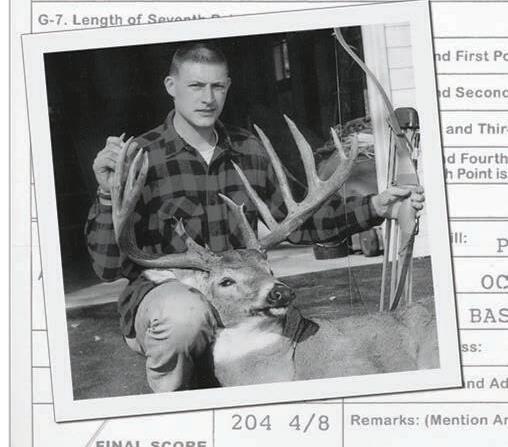

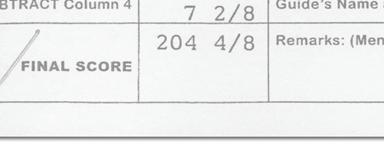










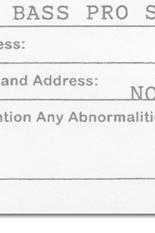
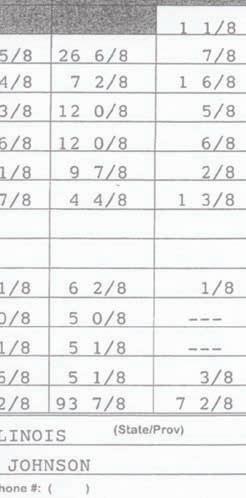
WORLD RECORD WHITETAIL DEER
Typical Antlers Score: 204 4/8
Location: Peoria County, Illinois
Date: 1965
Hunter: Mel Johnson







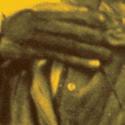

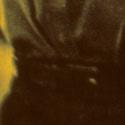
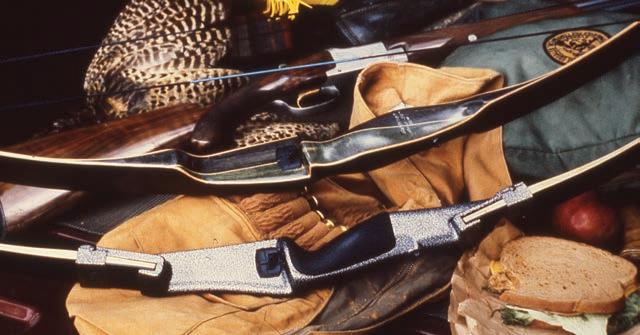

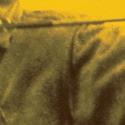





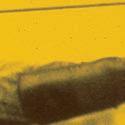

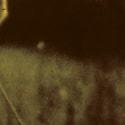
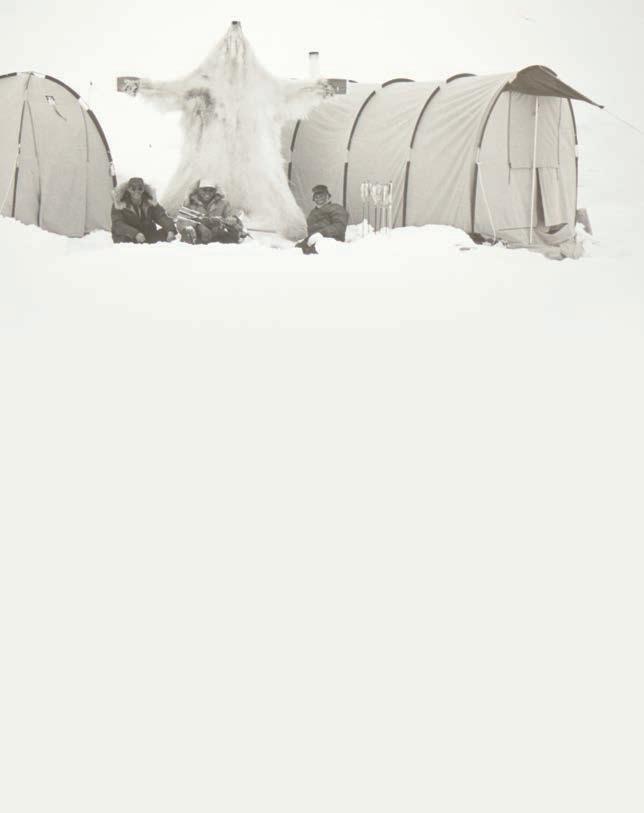
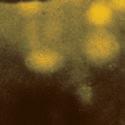

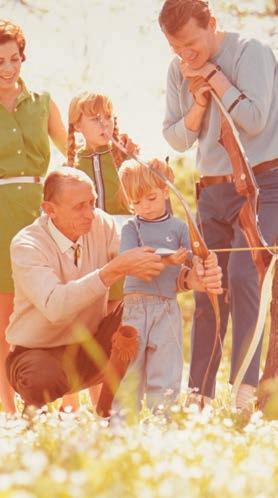





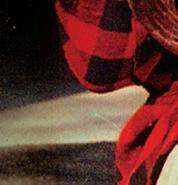
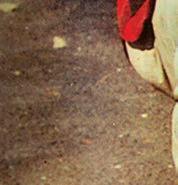



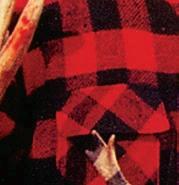

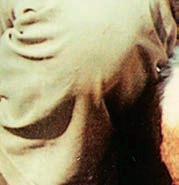





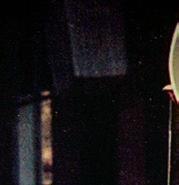





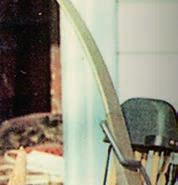

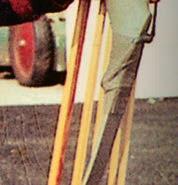

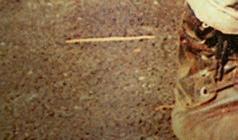
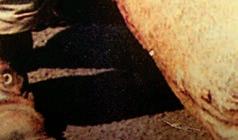





50 2024 • Summer


“Mel, it’s all your fault.”
“What?”
AN ENDURING RELATIONSHIP MEL JOHNSON AND HIS BUCK
BY CURT WELLS
Four-plus decades have passed since “The Beanfield Buck” fell, but the legend lives on and continues to grow season after passing bow season.

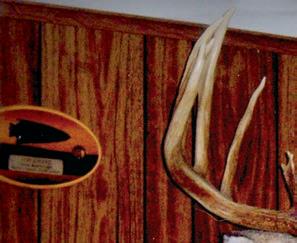
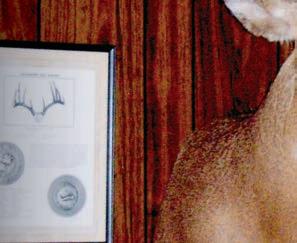
“The high price of deer hunting these days,” explained a friend, only half-joking.
“Ever since you killed that monster buck back in ’65, the cost of hunting whitetail deer has skyrocketed.”
Mel Johnson shrugged off the comment. He knew his buddy was just giving him a hard time. When you hold a world record for 43 years, a record the continent’s entire bowhunting community aims for every fall, you simply endure the ribbing and smile. At



least that’s Johnson’s approach. He knows the record will fall – someday.
The reality is almost too incredible to comprehend. Since that 29th day of October, 1965, when Mel Johnson knelt at the edge of an Illinois beanfield and encountered the buck of a thousand lifetimes, optimistic bowhunters all across North America have sought a buck with a larger set of typical antlers.
They, or shall I say we, have all failed.
Many have practiced self-restraint, letting the good bucks walk. Some employ









51
Summer • 2024



AN ENDURING RELATIONSHIP MEL JOHNSON AND HIS BUCK
other quality deer management strategies, culling genetically inferior bucks and restricting access to their property so their efforts are maximized.
Others rely on cash, throwing buckets of it into the wind, chasing rumors of monster racks, hoping to arrow the next buck of a thousand lifetimes. Those efforts, by millions of bowhunters over millions of hours spent in treestands and ground blinds, have been unsuccessful.

Yes, there have been some monstrous whitetail bucks taken since 1965, but none with the magical combination of symmetry, beam and tine length and overall mass to unseat “The Beanfield Buck,” a term synonymous with the name Mel Johnson.
or fiberglass arrows tipped with broadheads sharpened by their own hand.
It was a different time, a low-tech era compared to today. Most modern bowhunters are thoroughly familiar with whitetail biology, wear high-tech clothing, are equipped with all the latest gear and most can shoot fast bows with accuracy well beyond the effective bow range of 1965. Today’s bowhunter is certainly more efficient than his predecessor. That makes the longevity of The Beanfield Buck’s number one ranking far more astonishing than if technology had remained stagnant. What’s even more incredible is only two bucks with higher-scoring typical antlers have been taken over the past 43 years – and both were taken with firearms.


The story has been told countless times but one never tires of it. It takes place in Peoria County, Illinois. Lyndon B. Johnson was President at the time and a gallon of gasoline cost thirty-two cents. It was before the days of fancy camouflage patterns and treestands were just piquing the interest of those who hunted with bow and arrow. There were few archery magazines and fewer books to learn from. The body of biological research done on white-tailed deer at the time was scant and what there was wasn’t readily available to hunters. There was no such thing as estrus urine in a bottle, grunt calls, trail cameras, rangefinders or pop-up ground blinds. Bowhunters like Mel Johnson mostly spent their time on the ground, dressed in plaid wool, carrying recurve bows with wooden

Mel Johnson knew of the monster buck, having spotted it three times previous to that fateful late-October day when he fashioned a grass blind along the edge of a standing beanfield. On his knees, dressed in a plaid wool shirt, Johnson propped his 72 pound recurve in a forked stick, pulled down his headnet and waited.

“When the buck walked into the beanfield I knew it was him right away,” recalls Johnson. “He went around a point of trees and disappeared for a few minutes then walked right toward me. He had that swaggering walk big bucks have, as though it’s a chore just to walk. We didn’t care much about yardage in those days so I don’t know how far away he was. I do remember he was only about four rows of beans away when he stopped and looked straight at me. After a few seconds he turned his head and took three more steps. That’s when I drew back and sent a fiberglass arrow tipped with a hand-honed broadhead right through both lungs.”
The massive buck, which later weighed
240 pounds field dressed, never made it out of the beanfield. Johnson walked up to what would ultimately prove to be at least forty-three years of whitetail bowhunting history. The antlers were framed by main beams over twenty-seven inches long and there were thirteen points in all, three measuring over a foot in length. The buck’s rack had every quality a typical whitetail should possess, but it wasn’t like score was the first thing that came to mind. Neither was world record status.
“There was only one official scorer in the entire region and he measured the buck at 194 4/8,” remembered Johnson. “However, we learned later he’d made a mistake and forgot an even 10 inches in his calculations. That put the score at 204 4/8 after it was panel scored by the Boone and Crockett Club.”

Panel scoring is a critical element to the longevity of The Beanfield Buck’s reign as the top typical bow-killed whitetail. Nearly every fall, particularly in the past decade or so, some bowhunter takes a buck that appears to challenge the number one spot. Word spreads like wildfire and the deer hunting community gets all worked up over the rumors. And 2008 was no exception. A huge Wisconsin buck was rumored to be a challenger, but upon official scoring was found to be classified in the non-typical category. So the parade of challengers, or at least rumors of such, will continue next fall and beyond. But Mel Johnson is used to hearing the rumors, too.

“I get calls almost every year and the caller asks me what it feels like to see my record broken,” says Johnson. “I always tell them the same thing. Call me back after it has been panel scored. I haven’t heard back from any of them yet.”


52
2024 • Summer


Taking a buck of that caliber today would be worth more than notoriety to any hunter seeking to cash in on his success. At the time, Mel Johnson’s remuneration was a dozen poor quality arrows won in a local big buck contest.

“It just wasn’t as big a deal in those days as it would be today,” said Johnson, somewhat validating the aforementioned comment from his buddy. “Whitetail hunting has changed ever since the first deer classic was held.”
Johnson retired years ago from a job at Caterpillar Co. but is still an avid bowhunter even at the age of 74. In 2007 Johnson arrowed five


deer but 2008 wasn’t as generous.
“I’ve had one of my worst years ever,” said Johnson in late November, 2008. “I use a compound these days but I still get out bowhunting almost every day of the season, and I hunt in Missouri every year as well. Once the gun season is over I shut it down. It gets a bit too cold for this old bowhunter.”
After each bowhunt Johnson sits in his den and gazes up at a replica of his buck. The real antlers are owned by Bass Pro Shops in Springfield, Missouri, now, but the memories flood back with every glance.
“I gave my arrow and broadhead to Jack Zwickey and Gail Martin has my old recurve


bow,” reflected Johnson. “I wanted others to be able to share in my memory of a great buck that has held his place at the top for so long. It is, after all, the buck that’s special, not the hunter.” Wise words from an appreciative bowhunter.
No matter how long The Beanfield Buck’s reign endures, it will always be one of the greatest whitetails of all time. Bowhunter Mel Johnson has also stood the test of time, still bowhunting after all these years.
The two are sort of like lifelong hunting buddies. Their beanfield meeting of destiny so many years ago was a fortunate thing –for all of us.
Reprinted from the Club’s Bowhunting Records of North American Whitetail Deer 3 rd edition 2009.
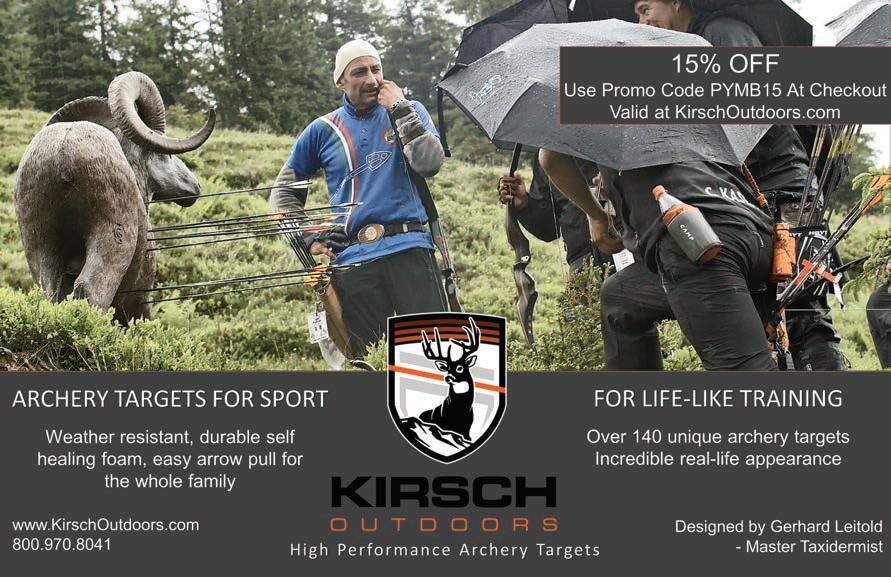




53
Summer • 2024
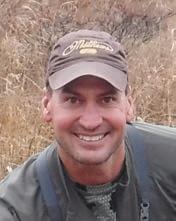
Noska’s Notes
By Frank Noska
The Whitetail Wins
“You never know whether whitetail bucks will come hard or easy, and that’s the fun part.”
Climbing up into the treestand in Kansas, the smile on my face was already there because of how excited I still get hunting whitetails. It’s no secret that I began my bowhunting obsession in Texas, where I grew up and started shooting a bow and bowhunting while still in high school. It was in Texas that I started hunting my first big-game animal— whitetails. Bowhunting has been a major part of my life ever since.
Three years ago in Kansas, I hunted for well over two weeks in a row during some of the best November conditions and did not harvest a deer. As good as Kansas is, and the ground I hunt also being primo property, it’s still hard to believe I did not put my tag on a buck. I wasn’t even after a particular target buck that I had on camera — I was hunting for a good, mature buck. Yes, there were multiple opportunities to shoot bucks, but never the “right” buck.
One morning, a 150-class buck came into a decoy and stayed under 20 yards for several minutes. He had a G-2 broken off at the main beam, and I didn’t want to shoot him with a broken rack. A few days later, on a foggy early morning, on the other side of the farm, the same brokenracked buck lingered less than 20 yards from my ground blind, tempting me again. The fun I had hunting and watching deer that year was awesome. All that I learned about the farm and deer movement made that hunt a success in its own way, even though I never tagged a buck.
Then, in 2021, I pulled into my Kansas farm with the same whitetail excitement and anticipation that I look forward to every fall. Having several days to hunt and work on the farm, I would not have wanted to be anywhere else.
Not having unpacked my hunting clothes yet and wanting to get into a stand quickly, I grabbed my bow and headed to my favorite elevated perch wearing my green Carhartt work jeans. I barely got my bow pulled up into the tree and my headnet on when I saw movement through the woods. Seeing flashes of antlers through the trees, I knew it was a buck. He has not been getting a good look just yet, and I could not tell exactly how big he was or how many points he had.
As the buck made his way closer to me, he appeared to be a typical 10-pointer. With a short window of shooting opportunity about
my previous “deer-less” year in the back of my mind, I was ready when the buck stepped into my shooting lane, broadside at 22 yards.
Soon, my arrow was on its way. When I saw him go down, I couldn’t help but chuckle that my 2021 Kansas deer hunt was already over. He wasn’t a giant by any means, but a buck I would have been happy to shoot the year before after the countless hours and days I spent on stand. My 2021 Kansas whitetail buck scored 131 1/8 inches.
As anyone who has bowhunted whitetails knows, arrowing a mature whitetail is never easy. There are deer seasons when everything seems to work perfectly, and a deer is taken in almost textbook fashion. Then there are deer seasons when you can’t catch a break, and everything that can go wrong does.
In 2022, it was the same scenario. I couldn’t wait to rere
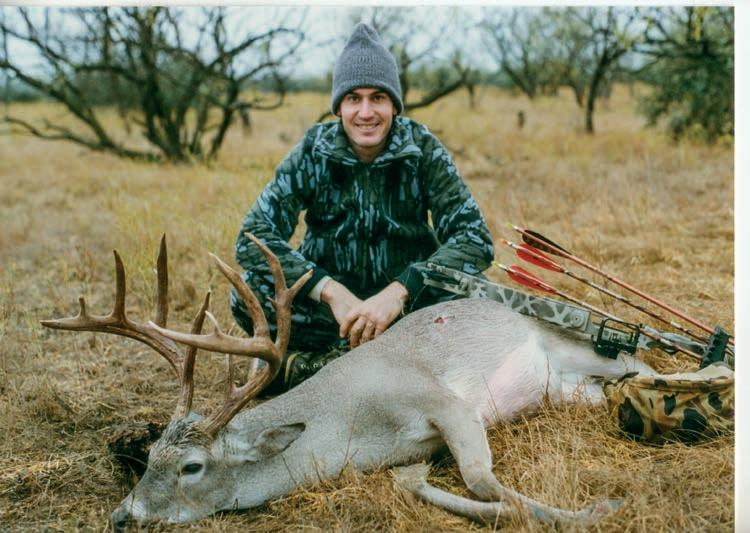



54
2024 • Summer
This is my first P&Y Whitetail. It scored 127 6/8”.
to Kansas to hunt those Midwest whitetails in November.
Having planned my whitetail schedule months prior, I had ample days ahead of me to enjoy this special time of year. After arriving at the farm, the wind wasn’t right for me to slip into my favorite stand that evening, so I hunted a different spot and saw a few deer but no mature bucks.
Looking at the weather that night, the wind was forecasted to be what I needed to hunt my favorite treestand the next morning.
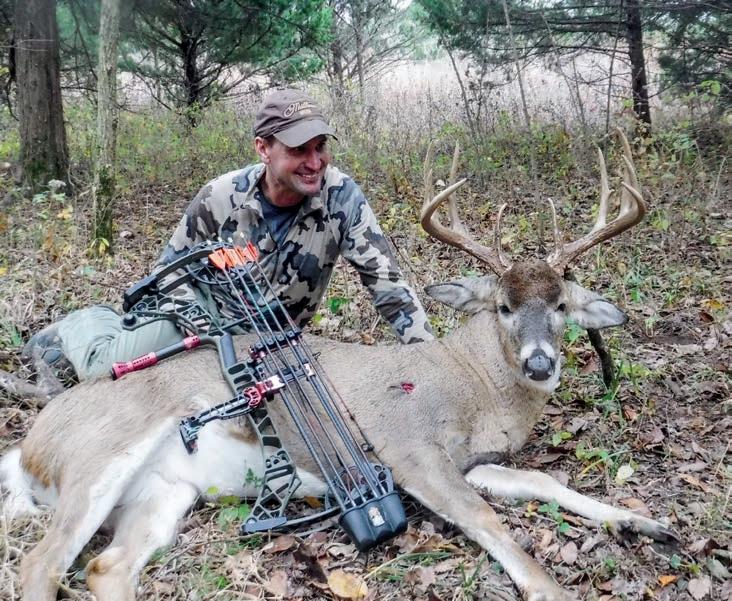
same stand as my 2021 buck, and on both hunts, it was the first time I sat in that tree. He is my largest whitetail to date and will be hard to beat.
I got up extra early the next day, and the wind appeared perfect for where I wanted to hunt. It was a particularly quiet and still morning, and something told me to grab my rattling antlers and take them to the tree with me.
Using my headlamp to walk along the edge of the beanfield toward my stand, I was at the base of my big cedar tree in no time. This was going to be my first time hunting this great stand this year. After I got settled in, I slowly pulled my bow up with a rope, nocked an arrow, and hung my bow on a hook.
I could already see a doe about 100 yards away through the woods. She was feeding and appeared to be alone, so I reached around and got my rattling antlers off the top of my backpack and then hit them together as loud as I could to start.
When I finished my rattling sequence, I hung up my antlers. Facing uphill and into the wind,

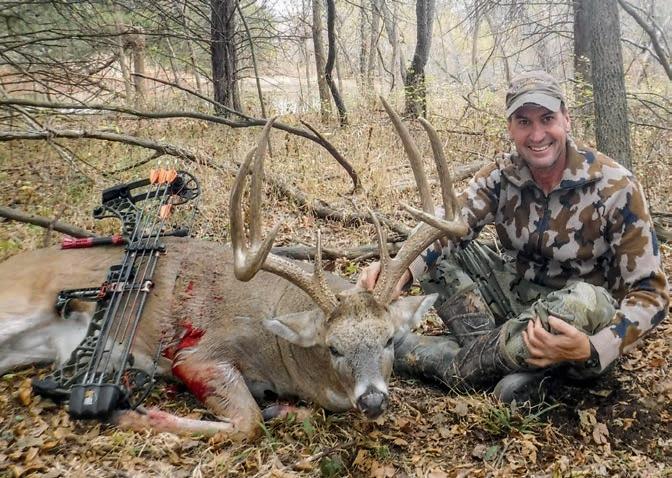


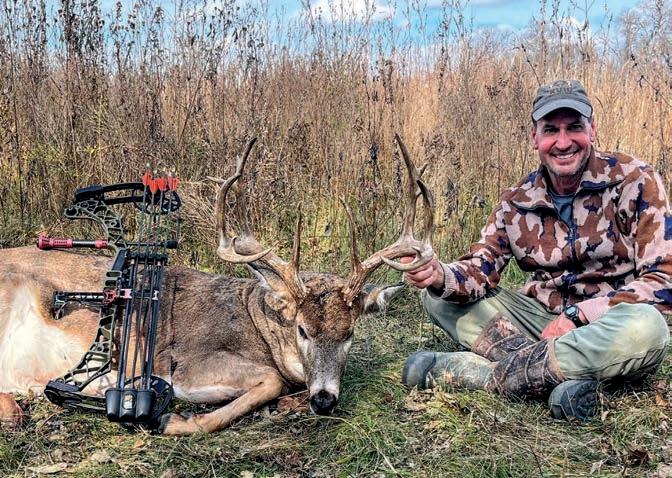




55 Summer • 2024
This is my 2021 Kansas “quick” buck, a 131 1/8” net 10-point.
My 2023 Kansas buck with some handsome G1s.
Noska’s Notes
continued
concentrating on the main deer trail, I heard some leaves rustling behind me. Looking over my left shoulder, I spotted a nice young 10-pointer standing 25 yards away. Appearing to have no idea I was perched in the treestand above him, he stood statue still, keenly focused, and staring down through the woods. It was at about this time that I saw more movement off to my left and in the direction that the young 10-point was staring.
The first instant that I saw the antlers on the other buck slowly walking my way, I took my eyes off him and started trying to get my bow into position to shoot. I had no idea how many points this second buck had; I just knew automatically that he was a shooter!
Both bucks stood and stared at each other. I needed the bigger buck to take just a few
more steps so I would have a clear shot. Unfortunately, this would also take him almost directly downwind of me…and that made me nervous. My heart was about to beat out of my chest.
Finally, the big buck took the necessary steps. I concentrated and, as slowly as I could, squeezed the trigger on my release. The sound of the hit and the way he ran off gave me a positive indication of a good hit. I heard some branches breaking very nearby, and the woods went utterly silent.
Sitting there, I was in some sort of whitetail shock. I had only been in the treestand maybe 10 minutes! Both of those bucks had responded and came to the rattling antlers at about the same time. They came from downwind, and when they saw each other, they evidently thought the other one was responsible for the

fighting noises they had heard.
Then, I began pondering just how often bowhunting action like that happens so quickly. I still didn’t know exactly what kind of buck I had shot, as I had no time to look him over with my binoculars or use my rangefinder before I released my arrow. At first glance, I just knew he was a good one.
Slowly, I climbed down the cedar tree, and when I got to where the deer had been standing, I immediately found blood. Then, I found a piece of my arrow. Following the blood trail another 15 yards or so, I looked ahead and could see the deer lying dead just 50 yards away.
It is difficult to describe my feelings when I walked up to this buck. I have arrowed many whitetails in my life, but nothing like the one lying on the ground before me.
I sat down, stared at the buck, and soaked up the entire experience for a long time that morning. It will be a long time, if ever, before I arrow a buck better than this one — he later scored 166 2/8 net as a typical eight-pointer.
People have heard me say hunting whitetails is sort of a gentleman’s type of hunt for me. Unlike some extra-tough, life-threatening situations and hunts, I get myself into bowhunting here in my home state of Alaska.
Even after completing two archery Super Slams—I’m getting close to my third one— whitetails are still near the top of my list of favorite animals to bowhunt. I have an addiction to bowhunting and to whitetails.
OVER-BUILT & UNAPOLOGETIC.
Yes, the new Carbon RX-5 is built to bully nature and there’s not another bow out there that comes close. For that, we’re not sorry. We over-engineer our REDWRX bows so you can fill tags when everything else goes to hell. This is the crossroads between the path you know and the path being engineered by progress. This is the new Carbon RX-5.
My late friend and whitetail-bowhunting guru, Roger Rothaar, titled one of his books, “Whitetail Magic.” It cannot be said any better. The experience and feeling of being in the whitetail woods with a bow in hand is just magical. If you bowhunt whitetails, and most of you do, you truly understand what I am saying.
I also think that the majority of you will agree with me that the whitetail wins more often than not!
I wrote this article for Bowhunter Magazine, and it first appeared in the October 2023 issue.

56
REDWRX_Kuiu ad_P&Y.indd 1 2/22/21 4:01 PM 2024 • Summer

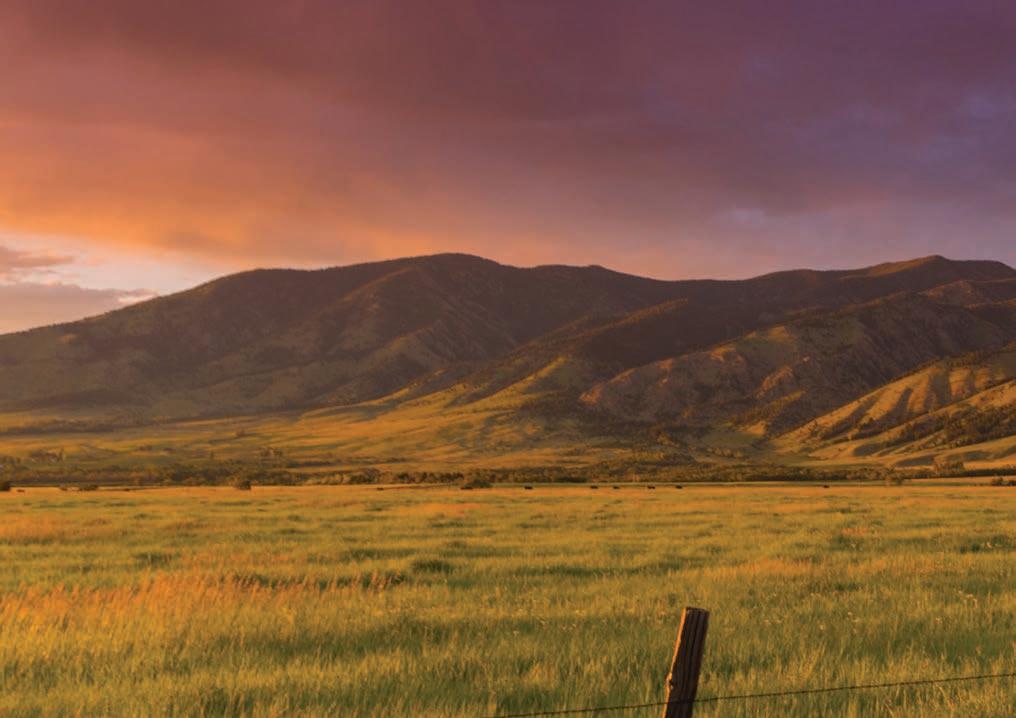












Hunters and hikers can’t get over how tough and featherlight these boots are and how they practically float over trails. You’ll wear them from your hunting adventure straight to a town run because you won’t want to change into anything else. Our breathable, waterproof 7-inch model gives you a “rooted to the shoe” foundation, thanks to our ankle-securing Kenetrek K-Straps and a super-padded ankle collar that wraps you in complete support and comfort.











57 Summer • 2024 VISIT US ON SOCIAL WWW.KENETREK.COM 800-232-6064
NEW!
34 th Recording Period Partial Listing
SKULLS
ALASKA BROWN BEAR

WORLD RECORD 29 4/16
27 3/16James C. Newton Kodiak Island, AK5/15/2022B. Harriman
BLACK BEAR
WORLD RECORD 23 5/16 SCOREHUNTER/OUTFITTER AREA/ST/PROV DATEMEASURER
19 12/16Logan Johnson Clearwater River, SAS6/15/2023D. Bromberger
19 10/16Kurt Keskimaki Clearwater, BC5/8/2023A. Tisdale
19 8/16Christopher D. McVay Catron County, NM9/6/2020L. Wood
19 7/16Dustin Roesler Kabinakagami Lake, ONT8/23/2023W. Pettett Jr
18 13/16Ed Ponzini / Rob Karpiak Lake Winnipeg, MAN6/8/2022M. Kronyak
18 10/16Kurt Keskimaki Adam’s Lake, BC5/25/2021A. Tisdale
18 7/16Brian T. Dalzell / Steve Kovack Madawaska County, ALB9/9/2022M. Kramer
18 7/16Brady Kidd Dauphin, MAN9/29/2023S. Holman
18 3/16Clayton Kucklick Jefferson County, CO10/12/2023M. Arnold
GRIZZLY BEAR WORLD RECORD 27 1/16
SCOREHUNTER/OUTFITTER
AREA/ST/PROV DATEMEASURER
26 6/16Ted Carlson / John Wilson Unalakleet River, AK8/5/2023J. Squires
COUGAR WORLD RECORD 16 1/16
SCOREHUNTER/OUTFITTER
14 14/16Michael Prater Fergus County, MT12/10/2022S. LePage
14 2/16Danny Nye Cowlitz County, WA2/14/2023R. Stahl
13 14/16Rob Stout Elko County, NV1/22/2016A. Cramer
13 14/16Jason Allen Lake County, OR9/24/2022D. Heffner
ANTLERS

MOUNTAIN CARIBOU WORLD RECORD 416 4/8
SCOREGROSSHUNTER/OUTFITTER AREA/ST/PROV DATEMEASURER
358 3/8362 3/8Tom Edgington / Clayton HoodPalmer Lake, NWT8/26/2019J. Kennedy
WOODLAND CARIBOU WORLD RECORD 375 0/8
SCOREGROSSHUNTER/OUTFITTER AREA/ST/PROV DATEMEASURER
296 6/8315 6/8Michael J Coppens Deer Lake, NFL10/3/2022S. Zirbel
TYPICAL COLUMBIAN BLACKTAIL DEER WORLD RECORD 172 2/8
SCOREGROSSHUNTER/OUTFITTER AREA/ST/PROV DATEMEASURER
129 5/8148 1/8Flint Jensen Clark County, WA11/22/2023R. Spaulding 119 1/8125 2/8Eddie J Rieger Sonoma County, CA7/10/2022J. Martin
118 0/8123 3/8Barett Meisenheimer Linn County, OR12/9/2023D. Sanford
115 3/8125 0/8Timothy Vance / Golden RamMendocino County, CA11/2/2023D. Allen
107 2/8119 5/8Brent Kropf Linn County, OR11/9/2023J. Knoebel
96 3/8 99 5/8Philip D. Miller Linn County, OR11/27/2013T. Rozewski
95 1/8 98 4/8James Walton Mendocino County, CA8/17/2023Z. Walton
TYPICAL COLUMBIAN BLACKTAIL DEER VELVET WORLD RECORD 148 5/8
SCOREGROSSHUNTER/OUTFITTER AREA/ST/PROV DATEMEASURER
130 0/8137 4/8Wayne Vinton Linn County, OR9/2/2023T. Rozewski
NON-TYPICAL COLUMBIAN BLACKTAIL DEER WORLD RECORD 194 4/8
SCOREGROSSHUNTER/OUTFITTER AREA/ST/PROV DATEMEASURER
184 2/8192 1/8Nathan Munro Ft. Maciedo, ALB10/21/2023B. Capes
129 1/8135 2/8Robert Rodriguez Trinity County, CA8/28/2023G. Hooper
TYPICAL SITKA BLACKTAIL DEER WORLD RECORD 116 3/8
SCOREGROSSHUNTER/OUTFITTER AREA/ST/PROV DATEMEASURER
89 2/894 1/8Chad Aldridge Kodiak, AK10/31/2015D. Poole
TYPICAL COUES’ DEER WORLD RECORD 130 1/8
SCOREGROSSHUNTER/OUTFITTER AREA/ST/PROV DATEMEASURER
88 5/890 5/8Steve King Sonora, MEX1/15/2024J. Willems
TYPICAL COUES’ DEER VELVET WORLD RECORD 115 4/8
SCOREGROSSHUNTER/OUTFITTER AREA/ST/PROV DATEMEASURE
93 2/896 0/8Rex Jensen Cochise County, AZ9/20/2019J. Gardner
TYPICAL MULE DEER WORLD RECORD 205 6/8
SCOREGROSSHUNTER/OUTFITTER AREA/ST/PROV DATEMEASURER
153 3/8157 6/8Tom Edgington / Jesus FimbresSonora, MEX1/23/2020J. Kennedy
147 1/8152 2/8Sheri McDaniel Yavapai County, AZ12/20/2022E. Fanchin 146 0/8154 5/8Frederick J Sweisthal Jr.Las Animas County, CO11/21/2020J. Gardner
TYPICAL MULE DEER VELVET WORLD RECORD 218 2/8
SCOREGROSSHUNTER/OUTFITTER AREA/ST/PROV DATEMEASURER
200 1/8201 5/8Duane Escher Laplata County, CO9/10/2023J. Gardner
154 0/8157 5/8Dylan Bauer Bowman County, ND9/10/2023C. Richardson
145 6/8149 0/8Zack Walton Coconino County, AZ8/30/2023J. Walton
NON-TYPICAL MULE DEER
WORLD RECORD 291 1/8
SCOREGROSSHUNTER/OUTFITTER AREA/ST/PROV DATEMEASURER
184 2/8192 1/8Kyle T Bradshaw Salt Lake County, UT11/11/2023B. Capes
TYPICAL WHITETAIL DEER WORLD RECORD 204 4/8
SCOREGROSSHUNTER/OUTFITTER AREA/ST/PROV DATEMEASURER
164 3/8164 4/8Hayden Boas Webster County, IA10/28/2022G. Dowell
149 7/8170 0/8Colton Scoggins Mayes County, OK11/7/2022W. Ledbetter
146 5/8172 0/8Jeffery Evenhouse Ogle County, IL10/29/2022J. Fechner
146 4/8174 0/8Travis Eckman Trempealeau County, WI11/2/2019T. Toraason
143 7/8148 0/8Keith Bierschbach Stearns County, MN10/8/2016R. Rocheleau
137 7/8141 3/8Austin Wolfe Trempealeau County, WI10/22/2021M. Sedelbauer
134 5/8150 5/8Quinn Larson Barron County, WI11/5/2022D. O’Brien
134 2/8140 7/8Scott Lamarche Hillsborough County, NH12/5/2021R. Blaisdell
134 0/8141 4/8Yvonne Halfmann Dodge County, WI10/29/2019M. Sedelbauer
133 7/8136 0/8Nicholas Stolzenberg Sussey County, NJ11/11/2022W. McNamara
132 6/8145 2/8Nick Brust Fond du Lac County, WI10/21/2021B. Laufenberg
127 7/8130 6/8Scott Lamarche Hillsborough County, NH10/24/2021R. Blaisdell
NON-TYPICAL WHITETAIL DEER WORLD RECORD 327 7/8
223 3/8227 1/8Jesse Hurley Dane County, WI11/7/2021C. Coble
199 5/8206 1/8Larry Knight III Parke County, IN11/16/2023J. Fields II
190 7/8198 6/8Michael Edge Panola County, TX10/29/2023R. Wood

2024 • Summer 58
SCOREHUNTER/OUTFITTER AREA/ST/PROV
DATEMEASURER
AREA/ST/PROV DATEMEASURER
SCOREGROSSHUNTER/OUTFITTER AREA/ST/PROV DATEMEASURER
publication of the last quarterly journal.
Entries that have been accepted into the Records Program since the


WORLD RECORD 327 7/8
SCOREGROSSHUNTER/OUTFITTER AREA/ST/PROV DATEMEASURER
188 2/8192 2/8Jeff Ankley McHenry County, IL11/18/2023R. Tastsides
186 4/8194 7/8Aiden Ruble Warren County, IA10/8/2021R. Bergloff
183 1/8190 5/8Michael K Graham La Porte County, IN11/5/2023B. Dye
178 5/8185 5/8Jeff Longest Iroquois County, IL11/13/2022R. Graber
178 2/8182 3/8Ryan Lenz Waushara County, WI10/28/2023M. Miller
173 7/8180 6/8Joseph H Cantrell Jr. Hancock County, IL11/5/2023K. Rose
170 1/8175 7/8Shane M Pionkowski Portage County, WI11/6/2023T. Heil
168 5/8171 7/8Don Alumbaugh Gentry County, MO10/29/2023N. Woodland
165 4/8171 5/8Jason Walker New Castle County, DE10/31/2023J. Melvin
157 5/8159 2/8Ryan Fett Marathon County, WI11/13/2023T. Heil TYPICAL AMERICAN ELK
392 2/8403 4/8Nathan Sisam / Craig HubbardWhite Pine County, NV9/4/2023K. Lepard
392 0/8403 5/8Kaden Titus Union County, OR9/16/2022D. Morris
375 2/8388 6/8Rhett R Smith Beaver County, UT9/14/2023S. Flinders
373 0/8383 2/8Randy Giesey Park County, WY9/19/2023R. Niziolek
345 4/8359 7/8Cody Dettmann Sierra County, NM9/6/2023D. Doerr
343 0/8349 2/8Tom Edgington / Shawn LytleLincoln County, NV8/30/2022J. Kennedy
330 4/8356 1/8Evangelyn Willrodt Saguache County, CO9/26/2023C. Clark
301 6/8309 6/8Stephen C Roehm / Rand FrenchLincoln County, NM9/20/2015T. Yetter
300 5/8307 4/8Aleishia Cortell Williams County, ND9/17/2023R. Niziolek
ROOSEVELT’S ELK
RECORD 398 1/8
290 2/8296 2/8Cody M Herzog Columbia County, OR9/13/2023R. Spaulding
TULE ELK
RECORD 336 1/8
234 0/8241 2/8Frederick J Sweisthal Jr.Mendocino County, CA9/6/2021J. Gardner

Species:Typical American Elk
Score:352 0/8
Hunter:Alex Spahn
Location:Coconino Cty, Az.
Date:09/25/2023


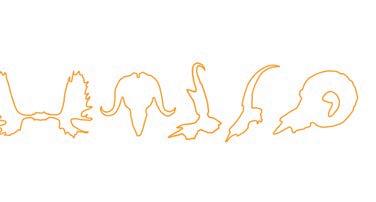
HORNS

MUSKOX WORLD RECORD 127 2/8
SCOREGROSSHUNTER/OUTFITTER
110 6/8113 5/8Evan Worsley Ataniriik Lake, NUN3/30/2023D. Bromberger
100 2/8101 0/8Gary Colbath Arsuck Fjord, GRN8/1/2015N. Muche
PRONGHORN ANTELOPE WORLD RECORD 91 4/8
SCOREGROSSHUNTER/OUTFITTER AREA/ST/PROV DATEMEASURER
84 6/885 5/8Katlin Bell Emery County, UT8/27/2023D. Leo
80 1/881 0/8Joe Fry Beaverhead County, MT9/17/2023F. King
73 6/874 7/8Mark Hendrix Lander County, NV8/3/2023D. Pochant
73 2/874 3/8Steven Fossel Pueblo County, CO8/16/2023M. Trujillo
72 2/873 1/8Logan S. Tyson Liberty County, MT8/20/2023D. Keene
71 0/871 6/8Cain Rinehart Park County, MT8/23/2020F. King
69 6/870 3/8Stefan Stefanovich Converse County, WY8/30/2023J. Borlang
69 2/870 1/8Kimber Gillespie Weld County, CO9/6/2023R. Burtis
69 0/869 7/8Edward Lamb Park County, MT8/27/2022F. King
68 4/869 1/8Michael A. Baronyak Converse County, WY8/29/2023D. Razza
68 0/868 5/8David McCain Lemhi County, ID8/21/2019R. Atwood
67 4/867 6/8Joshua Konen Las Animas County, CO8/17/2023J. Gardner
ROCKY MOUNTAIN GOAT WORLD RECORD 53 4/8 SCOREGROSSHUNTER/OUTFITTER AREA/ST/PROV DATEMEASURER
40 6/840 6/8Lisa Thompson Clear Creek County, CO10/9/2023M. Arnold
BIGHORN SHEEP WORLD RECORD 209 1/8 SCOREGROSSHUNTER/OUTFITTER AREA/ST/PROV DATEMEASURER
163 4/8163 6/8Brad Jones Park County, WY10/20/2023R. Niziolek
151 7/8152 4/8Anthony Glasso Pigeon Mountain, ALB11/11/2017J. Kennedy
142 1/8142 1/8DJ Stinchcomb Clear Creek County, CO8/19/2023E. Feron
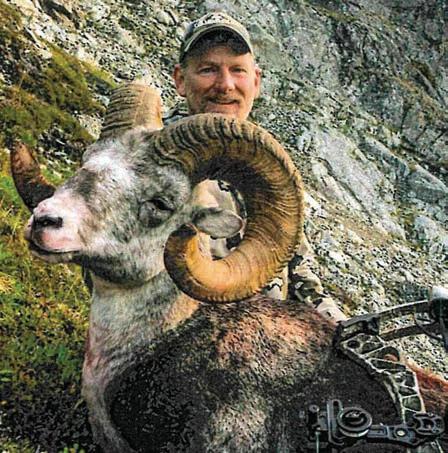
Species:Stone’s Sheep Score:158 4/8

Hunter:Preston Farrior
Location:Big Horn Creek,BC,CAN.
Date:08/18/2021

Summer • 2024 59
WORLD RECORD 430 0/8 SCOREGROSSHUNTER/OUTFITTER AREA/ST/PROV DATEMEASURER
WORLD
SCOREGROSSHUNTER/OUTFITTER AREA/ST/PROV DATEMEASURER
WORLD
SCOREGROSSHUNTER/OUTFITTER AREA/ST/PROV DATEMEASURER
AREA/ST/PROV DATEMEASURER
34 th Recording Period Partial Listing
Entries that have been accepted into the Records Program since the publication of the last quarterly journal.
DALL’S SHEEP WORLD RECORD 174 0/8 SCOREGROSSHUNTER/OUTFITTER AREA/ST/PROV DATEMEASURER
150 5/8151 2/8Michael J. Coppens Mackenzie Mountains, NWT8/1/2023S. Zirbel
141 7/8142 4/8Timothy Vance Brooks Range, AK9/8/2013D. Allen
DESERT BIGHORN SHEEP WORLD RECORD 186 4/8 SCOREGROSSHUNTER/OUTFITTER AREA/ST/PROV DATEMEASURER
161 6/8162 2/8Anthony Glasso Carmen Island, MEX1/20/2022J. Kennedy 151 7/8152 2/8Michael Haack Sonora, MEX1/14/2023E. Stanosheck


Species:Alaska Yukon Moose
Score:192 2/8
Hunter:Ray Pastway
Location: Tuck Creek Drainage, AK
Date:09/09/2022

2024 • Summer
60



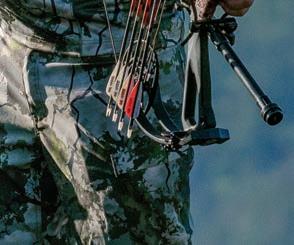

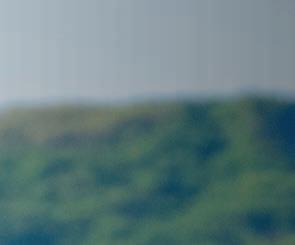





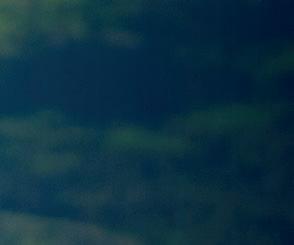


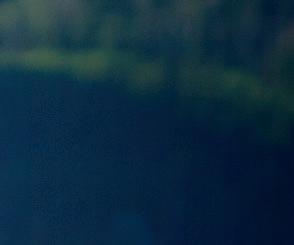


SUMMER 2024 CLOTHING & GEAR FOR WHEN, WHERE, AND HOW YOU HUNT. Kings leads the way in hunter-designed, high-tech, proprietary patterns that blend into terrains from the desert plains to the snowy peaks. No matter the season, the weather, or where you hunt, Kings keeps you concealed. kingscamo.com
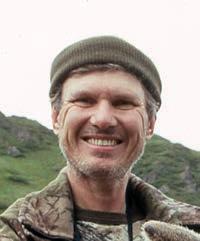
Super Slam Hunting
 By Kurt Ebers
Chuck Adams
By Kurt Ebers
Chuck Adams
Beware of Crooked Arrows
Do you realize just how dramatically a crooked arrow can affect accuracy? In the old days, when wooden arrows were king, archers often numbered their shafts so they knew where to aim with each one. Tipped by fixed-blade broadheads, less-than-perfect wooden shafts would consistently fly to different places. A savvy bowhunter tested this before big game season so he knew to aim high, low, left, or right with every projectile.
Saxton Pope and Art Young routinely numbered their hunting arrows 100 years ago to ensure accuracy on game. I own several arrows used by those iconic archers; all numbered just in front of the fletching.
Today, archers are often lulled into a false sense of security because they use aluminum, carbon, or carbon/aluminum composite arrows. But the truth is, shafts made of high-tech materials are often still crooked. For example, I recently checked a dozen different carbon shaft models for straightness. The

Hunting arrows used by Pope and Young were usually numbered so those iconic bowhunters knew where they would hit. This Saxton Pope shaft is typical, with the number 28 marked just ahead of the fletching.
average arrow from this sample of more than 100 shafts was out of straight a full .010-inch (ten one-thousandths of an inch). Some shafts were more dramatically crooked than that, nearly jumping off my commercial arrow rollers as they were spun.
Mechanical broadheads are popular these days because they tend to fly better with fast arrows than more traditional fixed-blade heads. Most bowhunters attribute this need for mechanicals to higher arrow speed alone. But I believe another real, sneaky culprit is crooked shafts. Only straight shafts launch consistently from a bow…particularly with broadheads attached. Straight nocks and straight broadhead attachment are
Fast modern cam-bows like Chuck’s Bear Alaskan XT require ultra-straight shafts to ensure pinpoint accuracy.


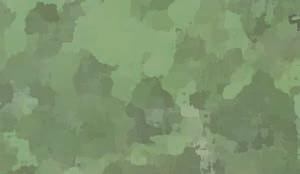
especially crucial to accuracy. Some companies publish reliable straightness tolerances for their shafts. In general, accurate arrows are straight within +/- .003-inch over their entire length. The very best is guaranteed straight within +/- .001-inch. Shooting machine tests by arrow companies have proven time and time again that very straight arrows produce the best accuracy…especially with broadheads. As a safeguard, you should spin-check your hunting shafts over commercial arrow rollers. If an arrow even slightly wobbles anywhere along the shaft, it should not be used for serious hunting. You might be surprised how crooked some supposedly straight shafts really are.


2024 • Summer
62


For example, I bowhunted Columbian blacktail deer last year with a 50-pound Bear Mag-Riser takedown recurve bow. I matched it with shafts that were advertised to be straight within .003-inch. But more than half were more crooked than that when checked with my precise arrow straightening device. Truth in advertising is sometimes an iffy thing, with manufacturer claims sometimes failing to match the true quality of products.
I selected the straightest shafts for my hunt and bagged two nice blacktails with two precise shots. No matter what kind of bow you shoot, your arrows must be straight for consistent accuracy. Do not take shaft straightness for granted. Check every hunting arrow with rollers or a straightener to make sure your ammo is true!

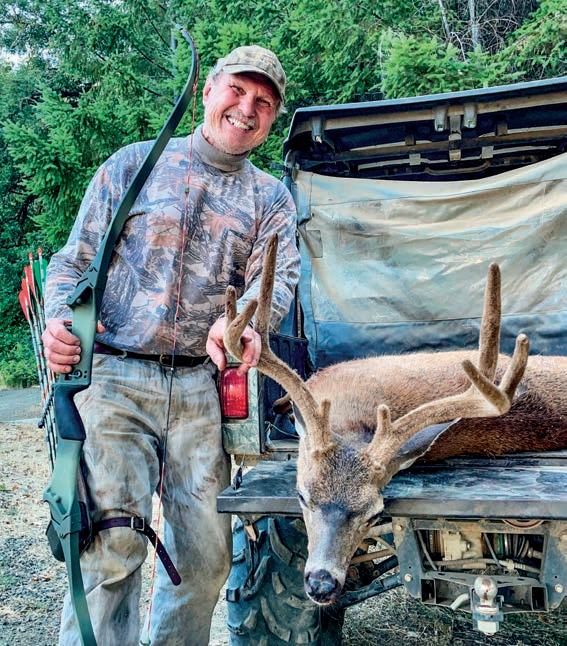


Summer • 2024 63
Chuck took this record-sized Columbian blacktail deer in 2023 with a Bear Mag-Riser takedown recurve bow. He sorted a batch of shafts and only carried the straightest ones on the hunt.
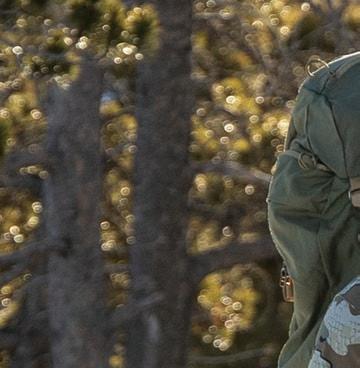
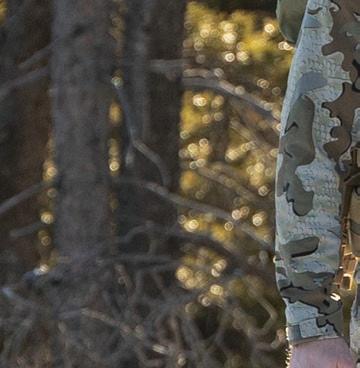
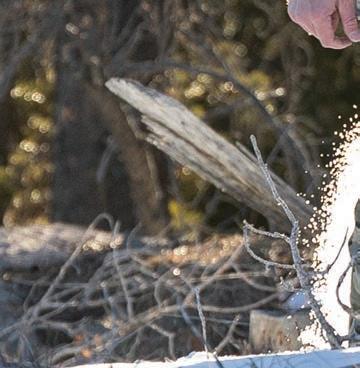
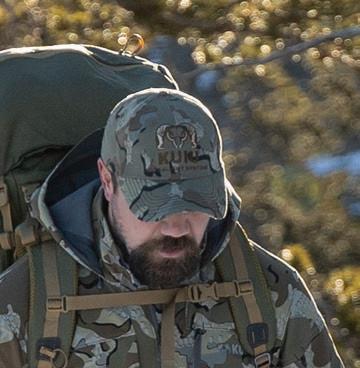


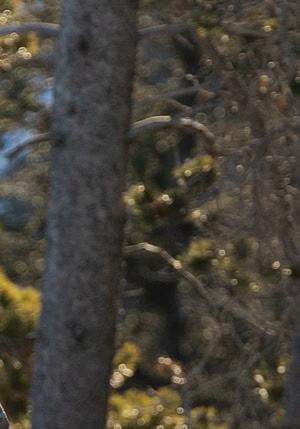

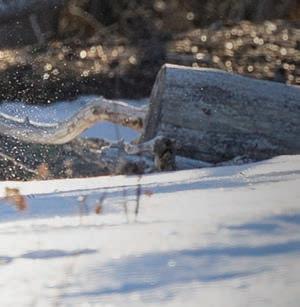
Only at KUIU.COM LIFETIME WARRANTY ON ALL OUR GEAR BASE LAYERS | INSULATION | OUTERWEAR | PACKS | SLEEP SYSTEMS | FOOTWEAR | ACCESSORIES

FEATURING THE LATEST ADVANCEMENTS IN SOFT-SHELL TECHNOLOGY

K-DWR Water Resistance beads and resists water from penetration.
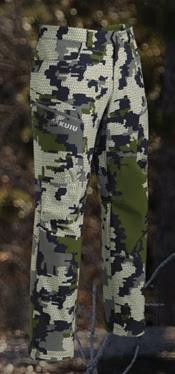
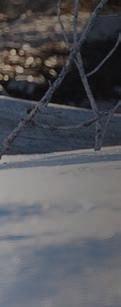
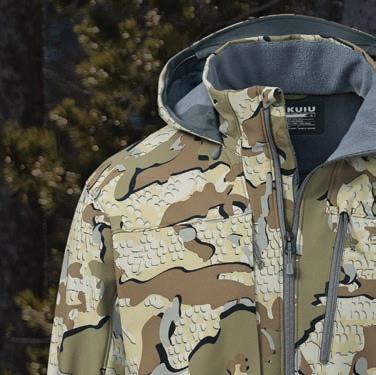
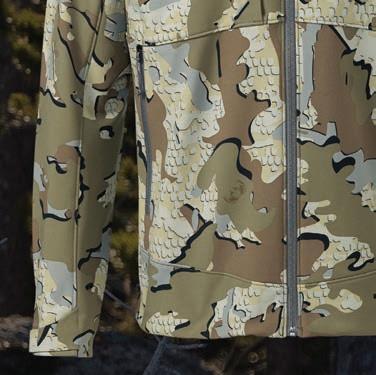


4-way Stretch Toray Primeflex Nylon with an ultra-soft and comfortable micro-fleece interior.
Proprietary lamination process adds superior wind protection.
Proprietary Nylon Fabric provides added durability.
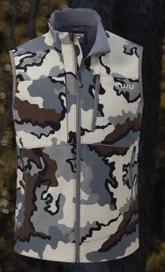
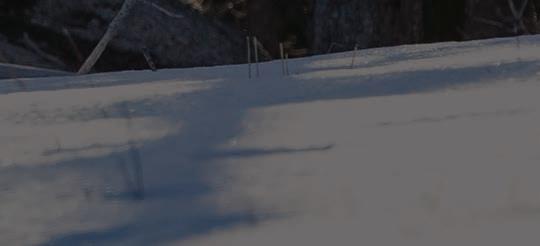
The ALL-NEW Guide Pro series provides superior performance, durability, and fit, all at a reduced weight. Designed for when heavily insulated layers and 100% waterproof protection are not necessary, this series is ideal for mountain hunting in cool, dry conditions.
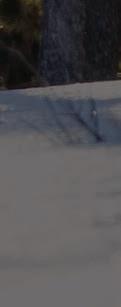
WT: 11.9 oz / 337 g I $189.00
PRO PANT WT: 17.5 oz / 496 g I $219.00 Available in Men’s and Women’s
PRO
WT: 22.0 oz / 624 g I $299.00 Available in Men’s and Women’s
GUIDE
PRO VEST
GUIDE
GUIDE
HOODED JACKET
Pricing subject to change without notice.
Quiet for Archery Hunting.
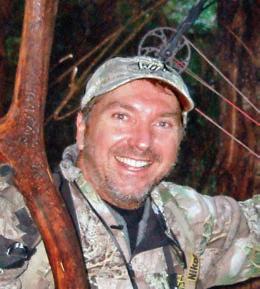
Himba
FAdventure Bowhunter
By Tom Miranda
Ram
ew places are as wild, arid, or remote as Namibia. It is flanked by two of the oldest deserts on the planet. Namibia’s wildlife is on the constant hunt for water. As the sun beats down on southern Africa, the heat is intense…. roasting sand and rock…. cooking the hooves of oryx and springbok who are relentlessly searching for shade and moisture. With the ancient Namib Desert stretching up the Atlantic coast and the parched Kalahari Desert covering the remainder of the country……rain is scarce, and what water is available comes from
spring seeps and but a few aquifer-fed lakes.
The Himba
I have traveled to Northern Namibia and the Cunene River to pursue the elusive black-faced impala. Shy and rarely seen, the black-face lives on the remote tribal lands of the Himba. The Himba are indigenous peoples found in the upper reaches of northern Namibia and southern Angola. While some Himba today remain huntergatherers…. most raise livestock in their
small circular homesteads… built with materials at hand and constructed to protect the animals from predation by lions, leopards, and hyenas.
The Himba people live now as they did 500 years ago, with the married women wearing an ornate headpiece called the Erembe— which is sculptured from sheepskin, with many streams of braided hair, colored and put in shape with a special otjize paste… a mixture of milk fat and red clay. This mixture also detours insects. Thus, married women shave their heads


2024 • Summer
66
Tom Miranda poses with his Himba ram, the black-faced impala.
and wear these homemade wigs. Himba men are known to have more than one wife, each living in a separate house within the perimeter of his homestead.
Permits to hunt black-faced impala must be obtained from the Namibian Government. Permission to hunt the lands of the Himba must be gained from the tribal elders themselves. One of the Namibian wildlife officials spoke English and was able to interpret for me as we visited the tribe and secured permission to hunt. If I succeeded, the tribe would receive all the
meat and hide.
The Plan
The Himba elders told us of a spring seep in the mountain where animals would drink; thus, our goal was to locate it and set up a pop-up blind. Stalking the impala was another option, yet Impala are typically found in small herds, making closing the distance on a ram difficult. Also, my goal was to make a television episode, and often, the video footage on stalks can be shaky at best. The desert floor was also scattered
with gravel, making for noisy approaches.
Locating the spring was relatively easy with the guidance of the elders. The spring was no more than a trickle and beat down with tracks. There were two main areas where the water pooled enough for animals to drink— one near the source and another 30 yards downhill. I selected the source as the likely driving area as it was the largest and set up & brushed in the blind about 25 yards away from the oasis. This side of the mountain was forested, and the blind placed up & underbrush for added shade. Temperatures
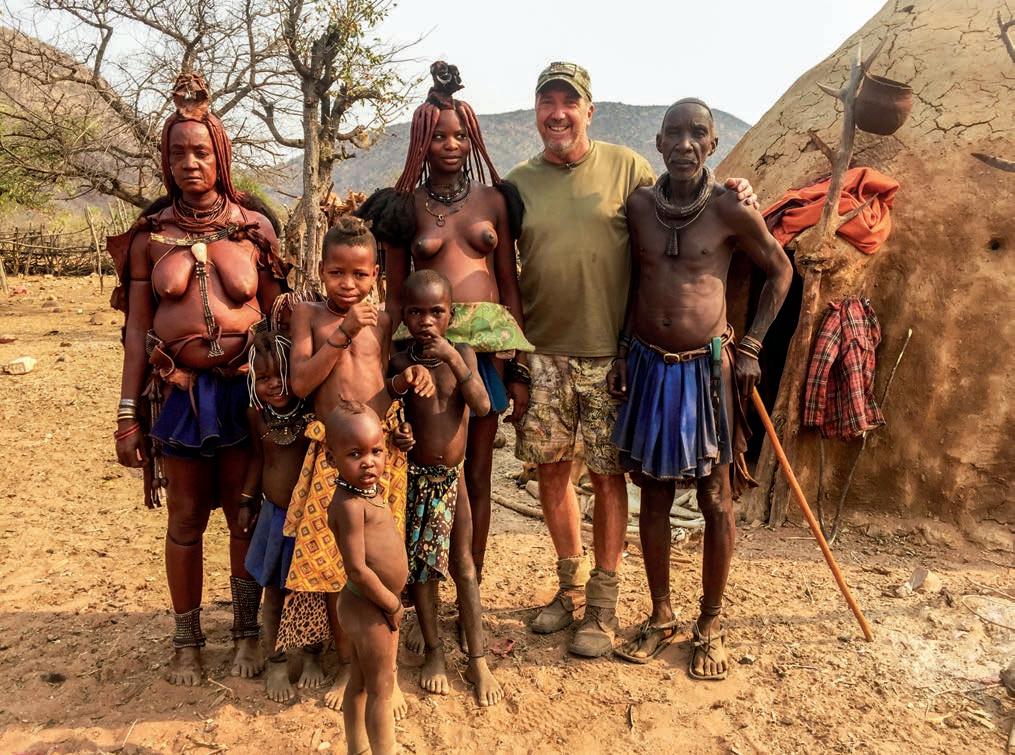

Summer • 2024
67
Himba elders and family take a photo with Tom.
Adventure Bowhunter








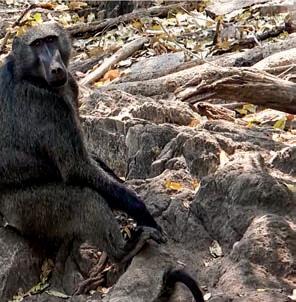

would climb into the 90-degree range, and the pop-up would be uncomfortable in the heat of the day… which was likely when the animals would drink.
In a perfect world, we would have liked to rest the blind for at least a few days. But as it is on safari, time is always of the essence. I have five days to hunt in this area, and that’s not very long when you are waiting on “animal time.” Sure, the animals must drink, yet getting a shot and taking a black-faced impala is never a sure thing. Like any bowhunt, variables are many and opportunities few. Any blind or stand hunt inevitably becomes a waiting game. It would likely be only one chance if I were to get a chance.
The Hunt
On the first day, many birds hit the spring. Flocks of 50 parrots at a time would thunder into the spring and roost above while 20 or more birds would take turns descending on the water. It was fascinating to watch. Tiny mongoose also drank. But no Impala. In fact, no big game drank on day one.
Day two started much like day one, with parrots everywhere and then two hours of silence. Nothing hit the water. Then, in the distance, baboons could be heard barking. Closer and closer until one walked into the seep. Then another, and soon a whole troop. Twenty-five plus big baboons had surrounded the blind. — Now, anyone familiar with safari hunting knows that baboons are very alert, inquisitive, and noisy. Once a baboon discovers a hunter, the gig is up, and likely, the ruckus scares the hell out of everything for miles. Yet, for whatever reason, these baboons never caught on to the blind being a danger. And right in the middle of all this activity, a lone black-faced impala ram walks in.
I was dumbfounded at first and afraid to move... let alone draw my bow with all the baboons so close. As if anyone even catches a glimpse of movement, the hunt is over,
2024 • Summer
Drone shot of the Himba’s circular homestead. The fence is made of woven, thorny branches.
Parrots at the spring seep.
68 continued
A baboon stares at my blind.



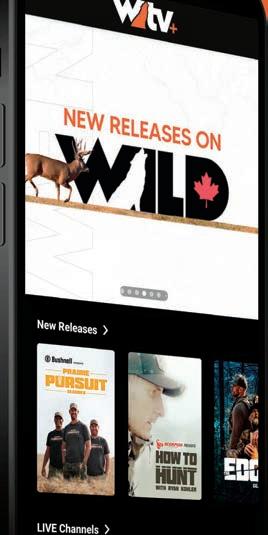





PURCHASE WILD TV+ AND RECEIVE FREE ACCESS TO ONX HUNT ELITE MEMBERSHIP










onX Hunt App is now available in Canada! Subscribe to Wild TV+ today for only $39.99 & you will receive a FREE 3 month subscription to onX Hunt Elite Membership, valued at $99.99. Current subscribers - check your email to download! Still using the free version of Wild TV+? Scan the QR code to subscribe today & this BOGO offer will be delivered straight to your inbox. Seize the day & start prepping for your next adventure.
EMBRACE
WILD, NAVIGATE WITH PRECISION. wildtvplus .ca
THE
Adventure Bowhunter
By Kurt Ebers
and everything spooks. It was obvious that the ram was traveling with these baboons and comfortable with so many big males around him. The ram walked in purposefully and approached the secondary watering spot instead of hitting the source water. With the blind facing the source, the ram was at a steep angle to my left. And with the camera on my right, panning left to capture the shot, left no room in the blind hole to shoot from. I had left a small slit in the blind window to watch the secondary spring hole but hadn’t even considered shooting in that direction.
The analogy is simple… This was like having 25 mature doe’s descending under and around your tree stand for 15 minutes, and then the target buck walks in. Number 1— you’re not ready. Number 2— you’re pinned down. Number 3— the buck is at a wild angle and maybe just out of reach.
With the camera rolling on the ram, I eased up my bow and quietly repositioned to draw thru the slit in the blind. My shot was at a very steep quartering away angle,

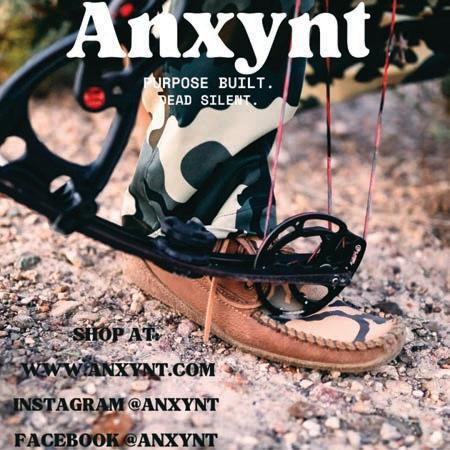

and as I lined it up, the pin was just to the right of the ram’s right hip, aiming toward the opposite (left) front leg. I pulled my head away from the string to match the broadhead trajectory visually, and the slit in the blind window quickly reset and shot. This entire sequence took 30 seconds. All of which the ram was drinking. As the bow fired, the baboons screamed. The arrow covered the 30-plus yards and impacted slightly left and a touch low as the shot was farther than I had thought. But the arrow zipped through the ham, into the body cavity, and out behind the left front leg. The impala jumped over the seep and ran 80 yards to
his resting place, in sight of the blind. The hunt was over, my nerves were shot, and the deal was done.
Word travels fast in the land of the Himba. After the TV video shots were complete, ten tribesmen arrived to help skin and care for the meat. The entire hunt was an adventure, but it didn’t end there. Upon phoning home after the hunt, I learned of a big hurricane heading toward the Florida coast. I quickly made arrangements and drove south many hours to Windhoek, then flew to Johannesburg, then to Atlanta, and finally, I was on the last flight to Sarasota, FL, before the big storm hit. The whole night I spent readying my home and library for the Category 5 storm. It hit as a Cat 5 south at Marco Island and was a Cat 3 when it went over my house. I lost some pool cages and all the trees in my yard— but my castle house stayed strong. Such is the life of an Adventure Bowhunter.
Editor’s Note: You can watch Tom Miranda’s solo video hunt of his Sonora Mule deer on his Facebook page or website. https://www.facebook.com/ AdventureBowhunter https://www.tommiranda.com/
••••••••••••••••••••••••••••
2024 • Summer
Tom Miranda’s rare book library.
70 continued


Hello, P&Y Members!
Membership Column
By Stephen LePage
As Membership Chair, it is my responsibility to ensure that all new applications are processed promptly, that all applicants for General, Regular, and Senior membership are reviewed, that applicants are notified if there are any deficiencies, voted on, welcome packets sent out, and then congratulated in a reasonable timeframe. It would seem that this is a straightforward process and that once in a rhythm, there would be no surprises. In contrast to this concept, our membership reminds me more of a colony of bats leaving one of those giant caves in Mexico. Please indulge me as I explain it in more detail. One of the first challenges is that we do not have consistent

numbers of new General applicants. Oh sure, we have a basal number of people that join every month, but our General membership applicant numbers SURGE two months after September. This coincides with the 60-day drying period and runs through the remainder of the fall. In addition, show season, typically the early spring, result in a greater number of General applicants.
Our fantastic convention is another event that directly affects membership numbers and fluctuations. During this event, which happens every other year, we have a glut of members advancing to Regular or Senior member status. We also have many people who decide to upgrade to Lifetime memberships. All the while,
YOURONESTOPSHOP FORTIRE&WHEELS


the office is working their butts off at the convention and unable to process the applications. So, we play catch-up every other year for a few months. To add to this, a couple of times a year, we try to send out a notice when people have met the time requirements for advancing to Regular or Senior membership, which increases applicants. Throw in a membership drive or promotion or two; the result is that the office has to keep up with an ebb and flow of membership throughout the year.
P&Y has outstanding employees, and your Board of Directors is second to none, so this well-oiled machine is very adept at handling these challenges and has developed a system that works well. That is until we have a break in the system.
Unfortunately, we have had a break in the system. Due to computer stuff that I am incapable of fully explaining or understanding, I fear that we may have allowed some applications for General membership, advancements to Regular or Senior levels, and even upgrades to Lifetime membership to go unanswered or perhaps even lost.
I have fielded several phone calls and emails from members who brought this to my attention, but I do not know how many others are out there simply waiting for a response.
I need your help. If you have submitted an application for General membership or know of someone who has submitted an application to advance to Regular or Senior membership levels or upgraded to Lifetime membership and have not heard from the Club in a couple of months, please contact me, and we will try to figure this out together. Thank you for your cooperation and your continued support of P&Y.
Sincerely, Stephen

2024 • Summer
72
BROWSE AND BUY FROM YOUR OWN HOME
WWW.BOSLEYTIRES.COM

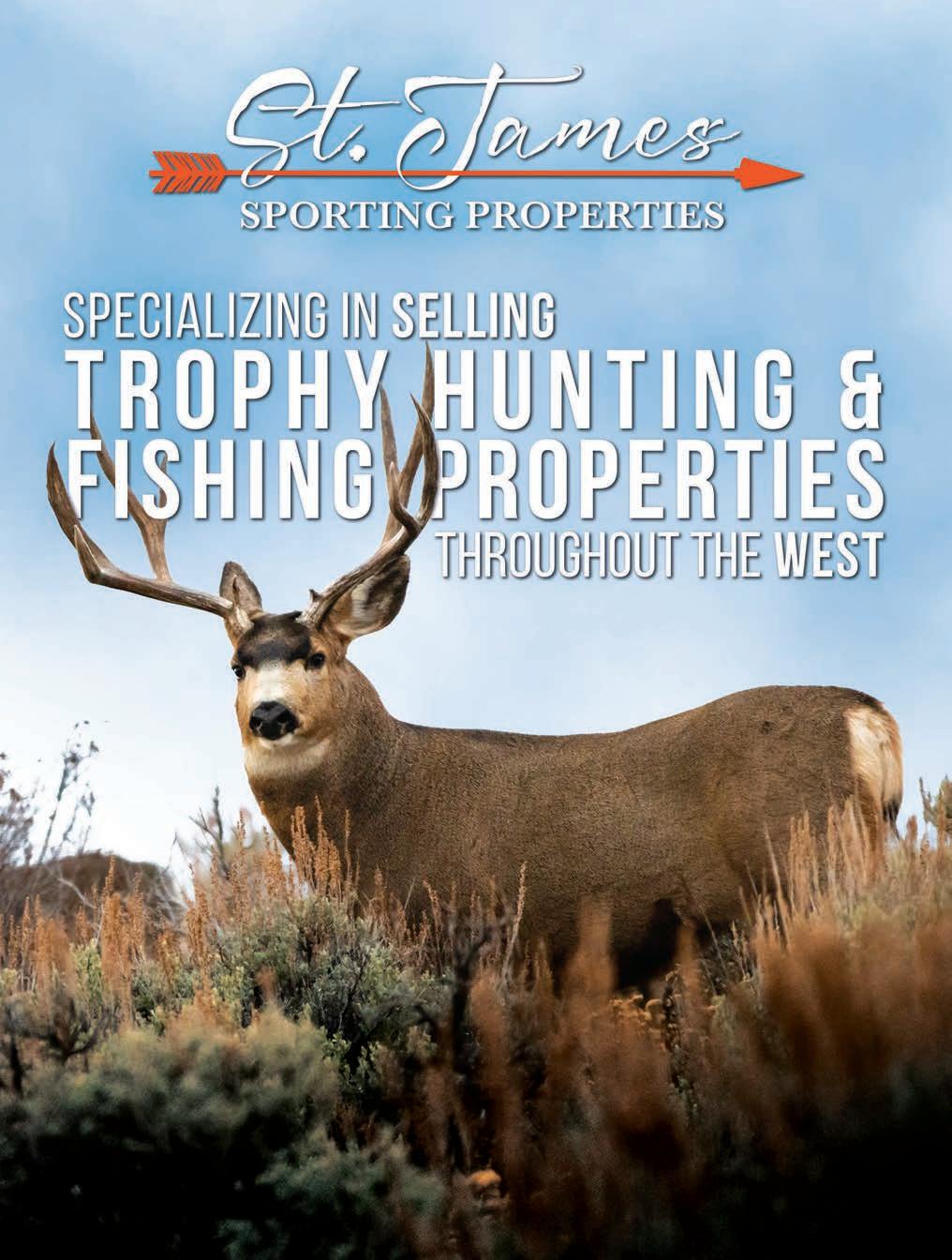


Colorado, Idaho, Kansas, Montana, Nebraska, New Mexico, Utah, & Wyoming LICENSED IN: WWW.SJSPORTINGPROPERTIES.COM 855-711-SJSP | INFO@SJSPORTINGPROPERTIES.COM | PO Box 700 Windsor, CO 80550 scan to learn more
client’s property
OWNER/BROKER, BLAYNE ST.
Photo taken on
BY
JAMES

New General Members
Carlissa Abernathy ID
Jon Nickerson .AZ
Cody Covey .CO
Bandi Henke .WI
Eric Kiefer IN
Denise Fleming NM
Richard Evans .OR
Tim Taylor MO
Jon Washburn ........ FL
Matthew Schuster ... MS
Adam Harris .OH
Alexa Rimer .WI
Patrick Meitin ID
Steve McMichael .KY
Brandon Simpson .KY
Mark Lee Ryan .MI
Justin Smith FL
Chicago Archery .IL
Bernie Barringer MN
Hershberger .OH
Timothy Talley........IN
Ronald J Pockl .OH
Eric Brcok .NY
Michael Davis .TX
Adam Spies .SD
Kurt Shroyer ........ .OH
Michael G. Sheruda ... .PA
J. Ammon McKinney AL
Curtis Lord MT
Ava Longshore .TX
Nathan Munro .AB
Evan Worsley .CO
William Clark Hussung.IN
Jason Sweere .WI
Eric Arnold .PA
Scott Weber .WI
Justin Weber .WI
Anthony Visco........NY
Douglas James .MI
Elijah Ostwald .WI
Chad Wilkens .WI
Austin Waniger .WI
Membership
Dennis Stockmann .WI
Matthew Radomski .NY
Ronald Miguel SantillanAZ
Christopher Greiman .MI
Marvin Ray Gibson .KY
Lucas Maben ........ .PA
Cody Fleming ........ .PA
Christopher Dellger....WI
Dan Hassemer .WI
Nick Berg .WI
Todd M Seymanski MT
Collin Sager .WI
Riley Knapp .WI
Sophia Waszak .WI
Matthew P Feivor .WI
Dennis W Flynn .WI
Peter Amaral MA
Charlie Booher MT
Donnie Stinson .KY
Wesley Crider WV
Michael Engram .GA
Chandler Jones .WI
Jesse R Knifley ....... IN
Jarin Lawson Wilbourn . AK
Seth Myers WV
Brad Golden MN
John Santamaria .NY
Collin Mathews .TX
Brandon Welker .KY
Justin Sowell .TX
Jacob Jones .TN
Samuel Mateer .MI
Joshua Foster .OH
Mike Lynch MO
Harold Lincks .AR
Aaron Rugowski .WI
Matthew Blake Hunter TX
Kyle Friend IN
Waylon Kincaid WV
Douglas B Seibert .NY
Greg Johnson ......... IA
Jamie Lane IA

Gary J Ladner.........SD
Trevor Wittwer .CO
Don Todd ............ .UT
David Dresen ........ .WI
Randy Quayle .UT
Derek Donohue .WI
Robert Thennis MT
Michael A Baronyak .PA
Jarrett Bo Mattingly .KY
Brett Derrman IA
Lance Huber .MI
Nate Lauerman ID
Stephen C Crossway .NY
Floyd S Farr .NY
Jesse T Williams .NY
Zachary Zombek .NY
Ryan Roderick Engel MN
Michael Samoil .AB
Jonathon Richter........
Matthew Scott Shenk..KS
Karen L Raasch ...... .WI
Jesse Hefty .WI
Charlie Tholl WY
Nicholas E Lord ID
Josh Farnworth ID
Mike Bushfield ID
Ben Adams ID
Courtney Hinson ID
Jonathan Shocy .ND
RachelRichard Daigle .NH
Kaleb Cowart .GA
Cody Foster .TX
Sam Matteson .NY
Scott Bengston .WI
Andrew Kleehamer IN
Brooke Arnold .PA
Marcia Kohl MN
William Parry ........ .CO
Collin Carpenter .SD
Warren Parker........AR
Karl J Vanderhoef .MI
Logan Wiesman .WI
Jason Miller ......... .AB
Conner Tubbs AL
David Matthew Allen .TX
Paul C Brott IA
Kenny Smith .OK
Louis William Irrer .MI
Rodney D Smith Jr .MI
Calvin Irrer MI
Thomas Joseph Irrer .. .MI
Cameron Taylor ...... .NC
Robert Barlau MN
Jacob Van Frachen .WI
Josh Branch .WI
Brandon Hockenberry..CO
Keith Bryan Aikens .TX
Brenda Hudson MO
Michael L Mosley .AR
Knneth Memmelaar .NY
Jason Craig .MI
Luke Wolfert .MI
Mitchell Simonar .WI
Omar F Fisher MT
Mitchell Fucile .WI
Steve Ravet .WI
Lucas Karls .WI
Scott Lee ........... .WI
Samuel Helmuth ...... IA
Jeffrey Spatzer .PA
Jordan Hurlburt .WI
Mitchell S Pilat .MI
Jessie Mourer .PA
Ryan Hammond AL
Joseph Hallum .CO
Alton Funk .OR
Danny Farris .TN
Aaron Louks MN
Jake Arnold .TX
Keith Charmasson .AZ
Brian Marable .CA
Elizabeth Thomas AL
Ryan Freeman IA
Tim Tewksbury .PA
Matt Gilbreth .CO
Michael Elsbury .WI
Clayton Griffin .GA
Jon Gebauer .NY
Ryan Patterson MN
Brandon Swisher IA
Mathew Kenward .... .NY
Charles Pace .NY
Jordon P Allen .NY
Stan Pfingsten IA
Linda K Sipe .AZ
Blake Mallory .MI
John Wuest .TX
James T Severson .WI
Josh Davis .CO
Witold Migala .TX
Autumn Pratt .MI
Alden J Bosben .WI
Michael Lee Graves .TN
Timothy Chmielewski..WI
Elijah T Edwards .CA
Michael Wellman .OH
Logan Blaut .KY
Johnathan Bloomberg..OH
David Petrie ......... .OH
Aaron Easterling .OH
Nicholas Batchelder .MI
Sean Stephens .OH
Nathan LeMieux .OH
Cayden Bateman .OH
Mark McClasey Jr .OH
Andrew “AJ”
Kazmierczak .OH
John P Morris IN
Brandon Shedal .WI
Derek Sortland .AB
Shawn Vander Schaaf..WI
George F Raymond II .NY
John Richter .CO
2024 • Summer 74
J Camp Newton
Ben May
Robert Fulcher
Scott Smith
John Flies
Butch Parker
Kevin Harms
Robert Harms
James M. Fitzgerald
Justin D. Jackson
Jack Ward Thomas
Kirk Sharp
Naomi Anglin
Nate Sharp
J. A. Tyburczy
Dick Titterington
Jack Reneau
Duane Hicks
David Allen
Linda Leake
Richard C. Hampe
Mark McQueen
Aimee Koepke
Donald Lee Francis
David N. Wildenstein
Darryl Kublik
Gary Joseph
Lisa M. Ameen
Brian Dolobacs
Richard Healey
Robert S. Miller
Ashley Strickland
Kenneth E. Davis
Robert James Staab
James E. Staab
Chris Partridge
Allyn Ladd
Rick Duggan
Bill Bridges
Bruce L. Palmer
Bradley W. Mongold
Edward A. Brown
Cameron Landherr
Jason Schrock
M. Lloyd Hood, Jr.
Al Baldwin
Bryan Piper
Dennis Burnett
Don Erbert
Shon Conine
Kevin Hetrick
James “Jim” Twamley
Ted Archibeque
Dennis L. Jones
Matthew C. Rehor
Jess Clifton
Mark S. Wood
Jason Gregg
Tod Graham
Larry Pulkrabek
Adam Bartsch
Randy Cooling
Butch Carley
Eric E. Moore
Michael G. Jahnke
Robert Jasinski
Louie Adams, Jr.
Rocco Verelli
Raynald Groleau
Randall J. Clark
Dick Driscoll

William Gartland
Pax Prentiss
Kenneth P. Shemonski
Richard Dean Damerau
Jason Bowman
Tim Malay
Johnny Watson
John M. Knevel
Jimmie R. Ryan
Ginger Brockman
Timothy W. Stanosheck
Steven B. Pitsch
Michael Stanley
Mark Turner
Keith Johnson
Fred Biasiello
Larry M. Leake
John A. Busic
Chris Barker
Charles E. Nichol
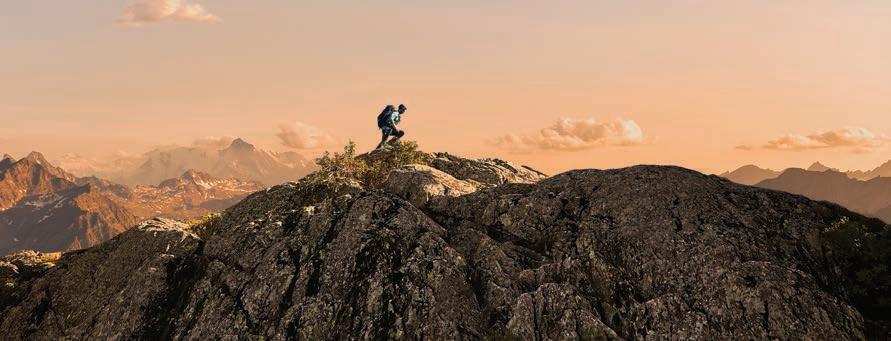



















MANAGE RISK FROM YOUR WRIST

INREACH® AND INSTINCT®






Summer • 2024 75 All Lifetime Members continued Lifetime General Members
Stay connected and informed with inReach satellite communicators. Pair any Instinct GPS watch with an inReach device (sold separately; active satellite subscription required) to view and send messages, get weather alerts on your wrist and trigger an SOS to the GEOS 24/7 emergency response team. ©2020 Garmin Ltd. or its subsidiaries. Some jurisdictions regulate or prohibit the use of satellite communication devices. It is your responsibility to know and follow all applicable laws in the jurisdictions where the the satellite communication device is intended to be used.
.........Senior Life
........General Life
All Lifetime Members

All Lifetime Members
Collen L. Steffen
Tony Heil
Anton Hruby
Gary Gillett
Kelly Ison
Douglas Hill
Richard Montarbo
Bud Aultman
Jimmy Padgett
Jason W. Cross
Cory Smith
Jeffrey S. Nibbelink
Steve L. Rueck
Jerome Guyant
Terry Ermel
Dale Heinz
John Chinuntdet
Todd Donald Hansen
Cameron Johnson
Keith Balfourd
Bruce R. Schoeneweis
Randy Liljenquist
Darrel Shea
John Burick
Steve Shore
Michael V. Scott, DVM
Mark Spoto
Sylvester Baier
Tom Miranda
Thomas Grainger
Darryl Williams
Kurt DeLucero
Rosalyn Malinoski
Jayson Arnold
Gary H. Martinez
Timothy J. Morgus
Thomas J. Udovic
Peter Ceponis
Ryan Johnson
Ted Carlson
Paul C. MacCarty
Blayne St. James
Charles A. Young
David Sachs
David Bradbury
Thanos Natras
Thomas “Tom” Dickerson
Al Kalnicki
Buck Hagy
Dan Stillwell
Tom Foss
Cameron Foss
Membership
Adam Foss
James Cron
Richard LaCaze
Adam Kilgore
Shelley Plymale, Jr.
M. Harmon
Julie Cordes
Douglas Brown
Arthur H. Young
James R. Simons
Mike Heeg
Michael C. Kreig
Timothy B. Fisk
Jonathan Blanchette
Robert E. Brush
Randy John Babey
Scott Heinrichs
Patrick Butler
Ken Radach
Charles W. Young
Larry Phillips
Carson Eddie
Chandler Eddie
Robert Gerstner
Chipper Dippel
Juan S. Rodriguez Cerrillo
Christie Taylor
Kyle Flom
Thomas Mason
David Gochenaur
Robert Bergquist
John Clark Fisher
James Conover
Andrew R. Abbring
Brad Parkhill
Brian Toalson
William Mettler
Loren Schiera
Gregg Bekelja
Earl Smith
Kyle Frederick Klammer
Paul Hardiek
Denise Hoffman
John D. Bazey
Leon R. Meidam
Scott E. Meredith
Bill Obeid
Joseph Leroy Linder
Reno Carifa
Robert R. White
Dr. Anthony K. Kraft, DDS
Jim Elder

David Paul Weber
Brent Bartsch
Michael F. Joseph
Bret Guin
John Tuchscherer
Sherwin Van Kooten
Matthew C. Pyle
Brett Search
Thomas P. Freiberger
Rob Stockett III
Jon Syverson
Robert Crocker
Tyler Henriksen
Marc E. Bunting
Kelly Hall
Lou Milanesi
Edward Kearney
Stacy Morton
Robert M. Daggett
Jamie Allen
Leonard Verbaas
Dean Schober
John Greaney, Jr.
David M. Kramer
Esh Gearhart
Roger Trudell
Mike Schmid
Henry E. Crosby, Jr.
Kenneth D. Asbury
John D. Chalk III
Richard Frank Mowery
Mark Cuppetilli
Thad Trujillo
Steven Holt
Roy David Banaszak
Robert A. Narotzky
Emma Narotzky
Wayne F. Farnsworth, Jr.
Daniel D. Countiss
Kathleen Countiss
Dr. Edward P. Greer
Stacy Hoeme
Joshua Hoeme
Chaston Hoeme
Antonio Semiao
Bradley L. Wiese
John Plesuk
Jim Boyer
Zachary Randall
Ben Wallace, Jr.
John Glassman
Kevin Johnston
Bruce Baird
Robert L. Burke
Remi Laprise
Bruce Mabrey
Robert G. Skinner
William F. Smith II
John Robert Ohmer
Michael Garrett Davenport
Rhonda L. Walton
Jay Tarble
David A. Bender, Jr.
Gary R. McCain
Chace Lamb
Joel Adam
Mark Headen
Chuck Brewer
Ryan Ladner
Don Morris
John Detjen
Peter Holt
Curt Joslin
William M. Johnson
Lee Rankin
Paul S. Unger
Jeffrey Becker
Michael P. Morton
Charles Booth
Kyle Wait
Wayne Duddlesten, Jr.
Tom Ferris
Jonathan Preston
Thomas Edgington
Mark G. Worischeck
Daniel E. Rudy
Larry Bley
Terry M. Kasper
Perry L. Jensen
Hunter Duggan
Vincent R. Hart
Clark A. Schmitz
Jared W. Cardon
Jerry V. Miller
Martin E. Storfa, Jr.
Daniel C. Hurd
Robert Hudman
Randy Hough
Brian G. Yurkovich
Daniel Dean Young
Brandon Scott Goodwin
Michael McCormack
Steve DeWitt
Joel Dupre
Don Sciumbato
David Benitz
David Piatz
Ronald Grenadier
Justin R. D’Avy
James V. Barwick
Murray Fain
Mike Carruth
Rockie L. Bliss
Michael L. Friedland
Michael R. Zirbel
Lloyd Murphy
Craig Rossman
Brian Stephens
Lawrence Martin Peeples
Johnny Drake
Bret Heckenberger
Marcus Wayne Hanson
Dale Johnson
Michael DiPalantino
Leigh Hauck
Karl R. Spaeth
Monte McDowell
Marc Freese
John P. Newton
James Burton
Martin E. Cain
Eric Hassall
Matt Moen
Errol Jones
Douglas Correll
Brian Rudyk
Warren Ritchie
Mike Ellsworth
L. Preston Crabtree
Jason J. Hesselberg
Ronald Morgan
Renny Wylie
John Benike
Wayne Jensen
Bill Van Buskirk
Brent Day
Brad Jannenga
Andy Lee Dirks
Michelle Margaret Traub
Jared Hook
Crockett Jones
Colby John Rehak
Steve Osminski
John Holt
Chris Albrecht
Mark Beeler
2024 • Summer continued 76
continued

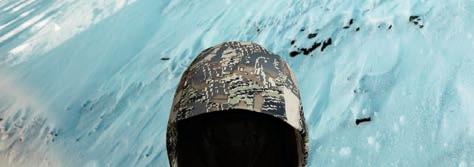

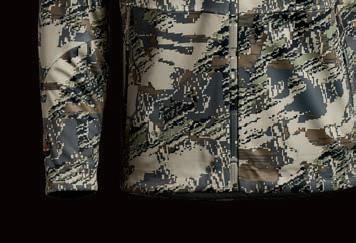

SITKAGEAR.COM
THE
WIND. STOPPED.
See
JETSTREAM JACKET
MOST ESSENTIAL WINDSTOPPER ® JACKET.
Built with WINDSTOPPER® by GORE-TEX-LABS, this feature rich soft shell jacket will shield you from stiff North winds through the mid and late season. A micro-grid interior fleece provides critical warmth and pit zips dump heat during high exertion vertical climbs. The fit and finish keeps you comfortable and a DWR treated face fabric helps shed light rain and snow. If you can only grab one jacket to bolster your system - make it this one.
the Jetstream collection at sitkagear.com

Keith Joel Beam
Steve Schultz
Donnie Vincent
Steve Morisse
Kiviok Hight
Alan Brimacombe
Loren Paul Ameen
Brock Graziadei
Zach Pallister
James E. Balise
M. Bruce Chernoff
Wes James Cammack
Bernie Weisgerber
David Rausher
Thomas Horne
Nick Brown
Eric Bachofner
Chris Ryckman
Brandon Lovegrove
Derek Berry
Gregory Powell
Ryan M. Roberts
David Holder
Karin Holder
Barry Minshull
John Edgar Bowman
Mike A. Lutt
Phillip J. Roti
Raymond “Trey” Pecor III
Mike Castillo
Ryan Hugelen
Charles Thomas
David E. Evanow
Anthony D. Mazzarella
Gregory A. May
Travis Wuest
Edward A. Petersen
Ronald Johnson
John O.”Buzzi” Cook III
T. Parten Wakefield
Jim Kennedy
Brad Wuest
John Lee
Carey Ferrell
Alan Brock
Kevin Haber
Richard Hale
Peter Quinn
Amos B. Britenstine
Bill Latronica
Ted Arnold
Russell Branum
Joshua David Smalling
Matt Serwa
Howard W. Burns
Denny Sturgis, Jr.
Will Garroutte
Tom Moleski
Mark Wayne Smith
Dale F. Good
Loran E. “Gene” Davis
Jim Bachle
Christopher D. Smith
Martin Giunta
Eugene Wesley Schmidt
Todd Grimm
Stephen Carl Breininger
Erick Glass
Lannie B. Philley
Matthew Donald Boisen
Adam Pegg
Dr. Allen I. Jacobs
Wayne L. Olson
Gary S. Walters
Lincoln Tapp
Jim Tapp
Daryl L. Belik
Edward C. Smith
Phillip Smith
John D. Patrick
Jason Meyer
Mark Allen Watkins
William B. Colwell
Guy H. Hempey
Ronald J. Fremin II
Deborah Kay DeValcourt
Garrett Gordy
Clay Harden
Lee M. Wahlund
Mike Gleason
Don Ledbetter
Gary H. Helgerson
Robert Green


Dr. William H. Basil
S. Aaron Jones
John Barton, II
Jon Sanborn
Ralph “Buddy” Klinkers IV
Jerry L. Hawrylak
Brian Joel Pickering
Josh Roberts
Ms. Charlie White
Dick Serdoz
Tim Bottari
Tate Bestor
Jeremy Pechtel
Tyler Samuel Schofield
Charles Tripp
Chris Bobo
Robert Warner
Brian Davis
Rand J. Kramer
Dean Bromberger
David Duane Knecht
Stephen Ambrose Updegraff
Collier Pennington
Beau Thomas Burrough
Rich Cochran
Forest Keith
Kerwin Tad Farmer
William C. Davis
Rick Schikora
Greg Duncan
Greg Baisden
Brett Hughes
James Domaskin
Lloyd Z. Crow
Allen Casto
Joshua Boyd
Luke D. Thorell
Melissa Bachman
Michael L. Jacobs
Scott Zipprich
Joan Holland Bottari
Tom Conlee
Melissa Gillott-Egyed
Charlie V. DeBose
William Pavone
Douglas Dick
Teri Quinn
Carter Medalen
Edward D. Whitmore
Francisco G. Noriega, Jr.
Rudolph S. Miller
Dan P. Hollingsworth
Donald W. Bohlken
Gerard P. Devine
Jeffery Mark Livingston
Keith R. Eason
Michael Harrison Shupe
Thomas Jenkins
Paul G. Leeberg
Gabe Laber
Harold Hugelen
I. Patrick Bischoff
Steven E. Shoemaker
Tom L. Ronchetti
Kevin Bowden
David N. Andersen
Jerry Thorson
Craig W. Myron
John B. Bowman
Stan Goodin
Dwight Jones
Kevin Rich
Michael Reed
John Blackall
Glen Bullard
Robert V. Keith
Mark Stinebrink
George Williams
Adam Wenzel
John Remien
Debbie Hernandez
Joseph A. McEver
Luis H. Salinas V
Varavoot Nedtranon
Ralph Soltys
Ben Bush
Steve Cowles
David E. Moore
Steve Neuberger
Timothy J. Cobin
William Curlis
Barry R. Sopher
Erik Bedard
Gene Smith
Cole Kramer
James M. Frank
Gerald Shane Anderson
Miles Brisco Mankins
Jack Potts
Austin Bradford Schofield
Leon Somsen
Mike Lembke
Brad Fielder
Tommy Coy Jones
2024 • Summer continued Membership 78 All Lifetime Members continued



Save $300 Enter promo code: P&Y and save $300 on your next purchase! Visit us at bakcou.com

All Lifetime Members
Brendan Bersey
Daniel J. Erickstad
Mike T. Thrasher
Floyd Goytowski
Thomas J. Hipskind
Tim Buffington
Steve A. Rehak
Robert Webster
Chris Cammack
Robert Dean Sylvester
Jeff Frey
Ken Lemberger
Michael McDonald
Glenn Thurman
James G. Reischel
John “Jack” Kleinsmith
Greg Glesinger
Mark J. Kramer
Gary G. Colbath
Donald Trump, Jr
Darrell Palmer
John Schreiner
Sidney Dean Kelly
Randy De Biasio
Troy Parten Wakefield III
Kevin D. Clark
Mike Opitz
Richard Lowe
Jerry Bridgewater, Jr.
James M. DeSpain
Gary Zalatan
MSG (R) Martha Lou Mace
Richard W. Wahl
Stephen Oliver Wade
Brad Sparks
Michael D. Luter
Shawn Wood
Mirko Rainer
Jonathan W. Fossel
Roger Peltier
Spencer Wallace
Robert Haney
Terry Patterson
Jae A. Koletzky
Thomas M. Streich
Jonah Stewart
Brent DeCook
Daniel C. Enger
Daniel Yoder
Jeff Melillo
Frank Feldmann
Scott Stirling
Ryan Kohler
Chris Caton
Steve Raymond
Timothy Walsh
Carole Hunter


Remi Warren
Nick Hoffman
Paul Bovee
Seth Rozeboom
Frederick E. Popovitch Jr.
David W. Reese
Marilyn Bentz
Brian Stiff
Joseph “Kyle” Tumlinson
Jim VandeHey
George Gregory Smith, Jr.
Terry Marcum
Doug Elliott
Andrew Van Den Heuvel
Hayden M. Lindquist
Stephen Masiello
Donald E. Yarger
Robb Facer
Wayne Rodd
Charlie W. Green
Richard E. Robards
Chase Wennersten
David C. Bastow
Blake Mitchell Hokamp
Don Bell
Steve Bruggeman
Robert Morton
Matthew Muehlstein
Eric Ahlgren
Lou Foehrkolb
Justin Rankin
DuWayne Larson
Clenon A. “Andy” Cox, Jr.
Randy R. Ferry
Reed Burres
Henry Scott Darr
Mike Walkley
Michael W. Cassiday
Paul Teska
Steve Larsen
Tim Carpenter
Ken Sargeant
Brian Keith Bell
Tim Pickering
Thomas Rand
Terry Ciechomski
Patrick McKenzie
Cody Robling
Charles Odell Fuller
Michael Wolff
Scott Brian Fullerton
John Dudley
Riley Savage
Lawrence B. Avison III
Gary Lynn Fischer
Mike Ukrainetz
Douglas P. Reichel
Michael Haack
Fred J Fanizzi
Thomas Canon
James E McQueen
Beau Rattigan
Adam Sapp
Michael Nikolai
Daniel Curtis Wiser
Carter Kerns
Bobby D. Benison
Mark A. Giese
Randy Harper
Daniel Welker
Joshua Bourne
Edward Coffin Jr.
Benjamin Joseph Hauser
Ken Fusilier
George Bassolino
James VanSteenhouse
Frank Bozich
Chester Williams
Byron Flood
Jim Hens
Steven Ward
Phillip Kirsch
Jason Duby
Dave Beeler
Philip A. Herrnberger
Richard R. Snyder
John MacPeak
Justin Spring
Joseph Quick
James Strickland
Nathan T. Rogers
Steve Leath
Bobby Willocks
J. Dean Bodoh
John Crenan Culpepper
James Cecil Culpepper
Michael F. Terry
Lee Treichak
Matthew W. Wenstrom
Michael Coppens
Allen Crowe
Benjamin May
Ricky Krueger
J. Camp Newton
2024 • Summer continued
80
Membership
continued






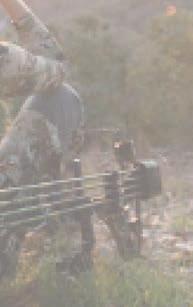


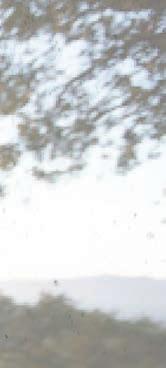


JOIN THE ALLIANCE SPORTSMENSALLIANCE.ORG HELP PROTECT YOUR HUNTING, FISHING AND TRAPPING RIGHTS CELEBRATING MORE THAN 42 YEARS OF PROTECTING YOUR PASSION FOR THE OUTDOORS BECOME A MEMBER TODAY BECOME A SUSTAINING MEMBER FOR ONLY $35 $35 - Sustaining $50 - Protecting $100 - Advancing $250 - Sponsor Name Address City State Zip Ph. ( ) Email Please charge my $ membership to my credit card. My check for $ is enclosed for a membership to the Sportsmen’s Alliance. (Please make checks payable to the Sportsmen’s Alliance. Mail to 801 Kingsmill Parkway, Columbus, Ohio 43229 Visa Mastercard Am. Ex. Discover Card No. CVC Exp. Signature PASSION FOR HUNTING, FISHING & TRAPPING PROTECTING YOUR SINCE 1978
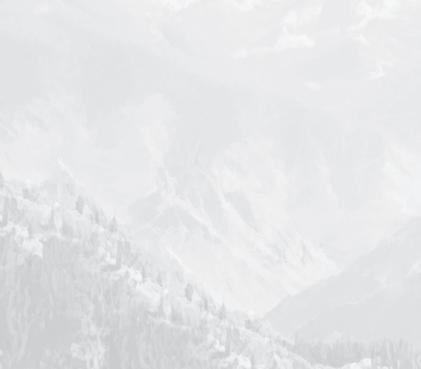
P&Y Giving Societies
There are numerous ways to support P&Y’s mission: to ensure bowhunting opportunities for today and tomorrow. To impact bowhunting’s fate in the long term, membership in one of P&Y’s Giving Societies is ideal. Making a cash gift or establishing a planned legacy gift in your Will or Estate is a perfect way to ensure the future of bowhunting while enjoying tax and other benefits. Learn how to join one of the world’s leading conservation organizations dedicated to the highest ethical standards.
P&Y is the voice of today’s bowhunter. To get our message out, P&Y needs your financial support. Our Giving Society program recognizes members seeking an opportunity to contribute to the Club’s Mission beyond their regular annual membership. Please consider joining a society as the financial contribution allows the P&Y to continue growing the Trust Fund and Conservation Fund, which in 2023 supported several Wild Sheep Federation conservation projects and Shane Mahoney’s Wild Harvest Initiative, to name a few.
Below are summaries of the two P&Y giving societies. Please forward any questions about these societies to Justin Spring (Executive Director) or John Gardner (Trust Officer). Their contact information is listed on page 7 of the Ethic.
Fred Bear Society


The Fred Bear Society is the P&Y’s premier major giving “society,” whose members have made substantial financial contributions through a cash donation or legacy gift to the Club. Gifts are donor-directed and tax-deductible and can be made to P&Y’s Endowment Fund, Conservation Fund, or Area of Greatest Need. A cash pledge can be given over time to a maximum of 5 years. If installment, the Member would be recognized at the appropriate level after making the first cash installment payment. Since its inception in 2013, more than $1.4 million in Fred Bear Society cash gifts and $1.9 million in legacy gifts have been directed to P&Y.
Due to the time value of money and the promise of cash payment in the future, a Legacy gift is 2X the Cash amount.
Black Bear$15,000 ($3,000/year installment) Cash or $30,000 Legacy Silvertip $50,000($10,000/yearinstallment)Cashor$100,000Legacy Polar $75,000 ($15,000/year installment) Cashor $150,000 Legacy Kodiak $150,000 ($30,000/year installment) Cash or$300,000 Legacy
QualifiedCharitableDistributions(QCDs)—Members 70-1/2 or older and subject to required minimum distributions (RMDs) are eligible to make a QCD directly to P&Y (a non-profit, tax-exempt organization under Section 501(c)3 of the United States IRS Code 501). In addition to the benefits of giving to P&Y, a QCD excludes the amount donated from taxable income.


Razorhead Society
The Razorhead Society was formed in 2023 to create a pathway for Pope & Young members seeking an opportunity to contribute to the club’s Mission beyond their regular annual membership. Current Fred Bear Society members who continue making cash donations to advance to the next benefactor level are also eligible for Razorhead Society recognition.
The Razorhed Society has four benefactor levels enabling tax-deductible, donor-directed gifts to be made in annual installments (5 years) or a lump sum. If installment, the Member would be recognized at the appropriate level after making the first cash installment payment. Donations can be made to Pope & Young’s Endowment Fund, Conservation Fund, or Area of Greatest Need to fund specific programs and initiatives. Razorhead Society members will be recognized with a stunning lapel razorhead pin indicating their benefactor level. Members may also “upgrade” their benefactor levels within the society and the premier Fred Bear Society. A member’s Razorhead Society donation does track towards the Fred Bear Society.
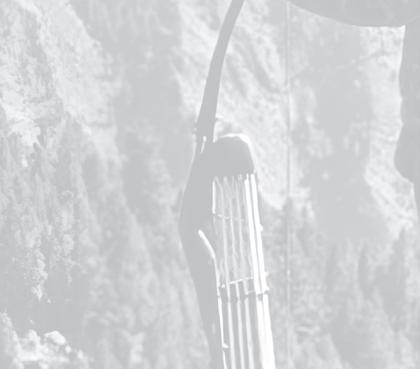

Members of the Fred Bear Society who give beyond their initial donation are also eligible for Razorhead Society recognition.
Levels
Gold- $10,000 ($2,000/year installment)
Silver - $5,000 ($1,000/year installment)
Bronze - $2,500 ($500/year installment)
Copper-$1,000($200/yearinstallment)
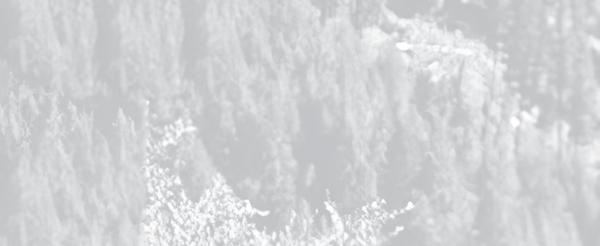




General Fund
5M Archery & Hunting Services
Gerard Pugliese
Guest
Galen J. Wertz
Kendel Cheatham
Charles Lynde
Robert L. Kampen
Bruce Hudalla
Jeffrey C. Pals
Tom Rumney
Patrick M. Rowland
Gerald E. Hunter
Kenneth E. Ruzicka
F. Michael Samsel
Shelby M. Keefer
Robert A. Pressly
Charles C. Pacheco
Danny L. Young
Gary Biles
Tom Fowler
Worley L. Sewell III
Neil Dau
Bob Washburn
David A. Pawlicki
Mark Titus
Daniel C. Hurd
Robert Lane
Jack R. Frazier
Dallas Smith
Charles Wilcox
George Owren
Xcel Energy Foundation
joe Knez
Richard N Kimball
Luke Neuhauser
Paul A. Goering
Dean Cook, Jr.
Leonard Emmen
Allen Crowe
Roy E. Grace
K L Hall
Mark W. Gullickson
Travis L. Simplot
Cecil Tharp

Bill Gannon
John Gardner
Lew Webb
Robin Baber
Gene Hopkins

5M Archery & Hunting Services
Jerome L. Kawski
Joe Arnt
Larry Holcomb
Edward Nelson
Kenneth E. Cockerham
Rick Mason
Larry L. Streiff
Mettler Family Chiropractic
Randall Marlatt
Gerald G. Smith
Kansas Bowhunters Association
Kenneth P. Shemonski

Aaron S. Wasserman
Todd Elliott
Bruce R. Mabrey
Steven R Kennedy
Edwin DeYoung
Rick Foster
Overland Development Corp
Ted Arnold
Thomas Udovic
Carl Waggle
Phillip Dalrymple
Craig C. Fritz
David C. Gordon, Jr.
Daniel Vassh
Craig S Killian
Robert Wayne Osgood
Tom Nebbs
Jack H. Davis
Hiter Farms Partnership, II
Phil D. Brumm
Terry Chandler
Gene Davis
Stefan Stefanovich
Brian G. Taylor
RAZORHEAD SOCIETY
Conservation Fund
Raymond Latty
5M Archery & Hunting Services
Gerard Pugliese
Kristen Bruinsma
Galen J. Wertz
Kendel Cheatham
Robb Cotiaux
Todd C. Thome
Mike Binsack
Robert L. Kampen
Bruce Hudalla
Kevin Schlueter
Tom Rumney
Patrick M. Rowland

Devon Herschberger
Chris Coblentz
Maxwell Byers
Scotty Rehak
Joe Bowhunter
James Thomas MI
Joe Hunter
Gerald E. Hunter
F. Michael Samsel
Pete Graziano
Charles C. Pacheco
Paul Vice
Glenn Thurman
Earl Smith
Gary Biles
Worley L. Sewell III
Bob Washburn
David A. Pawlicki
Mark Titus
Daniel C. Hurd
Brian G. Taylor
Scott L. Koelzer
Dean Cook, Jr.
Leonard Emmen
Allen Crowe
Dr. Andrew F. Jones
Roy E. Grace
Dr. David E. Samuel
Patrick Sullivan
Mark W. Gullickson
Travis L. Simplot
5M Archery & Hunting Services
Larry Holcomb
Kenneth E. Cockerham
Rick Mason
Bo Aughtry
Ken Davis
Dirk Botkin
Stan Caldwell
Garry L. Brandenburg
Aaron S. Wasserman
Derrick Barton
Leonard W. ‘Lenny ‘ Wood
Joshua Treadway
Frederick Sweisthal
Gregg Falcone
William Kyle Shaffer
John Sullivan
Ted Arnold
Scott Bakken
John M Ramsey
Craig C. Fritz
David C. Gordon, Jr.
Jim Witcombe

Kevin Hisey Memorial Youth Program
Robert L. Kampen
Tom Rumney
Patrick M. Rowland
Gerald E. Hunter
Herbert A. Henderson
Kenneth E. Ruzicka
F. Michael Samsel
Glenn Hisey
Larry A Bley
Charles C. Pacheco
Gary Biles
Stephen R. Boster
Worley L. Sewell III

Bob Washburn
David A. Pawlicki
Mark Titus
Daniel C. Hurd
Jack R. Frazier
Richard N Kimball
Stanley D Miles
Dean Cook, Jr.

Allen Crowe


Frank R. Buckman
Randy J. Willow
Hiter Farms Partnership, II
John M Ramsey
John M Ramsey
John M. Ramsey
Eric Holt
Brian Murphy
Dick Wood
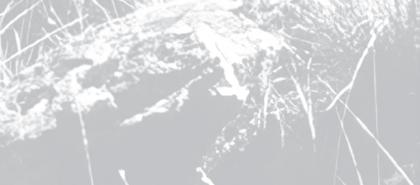


Timothy R. Davis
Travis L. Simplot
5M Archery & Hunting Services
Kenneth E. Cockerham
Rick Mason
Garry L. Brandenburg
Aaron S. Wasserman
Ted Arnold

John M Ramsey
David C. Gordon, Jr.
Daniel Vassh
Tom Nebbs


J. Wertz
Doug Clayton Brian G. Taylor Paul Vice

Leonard Emmen
John Gardner
Mark W. Gullickson
Larry Holcomb
Larry L. Streiff
Bruce Post
Craig C. Fritz
Michael Hassinger



Received October 1, 2023-March 31, 2024 Trust Fund M. Blake Patton 5M Archery & Hunting Services Merrill Jones Gerard
Matthew
Galen
Kendel
Pugliese
Hentrick
Cheatham Bruce Hudalla
Leonard
‘ Wood Grizzly Enterprise LLC M.
W. ‘Lenny
Blake Patton
Dr.
David E. Samuel
Hiter Farms Partnership,
II Dick Wood
Fred Bear Statue




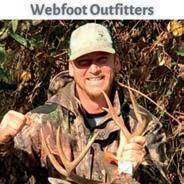


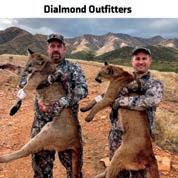
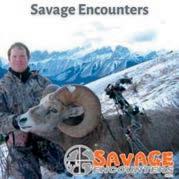

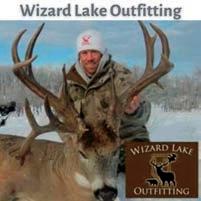



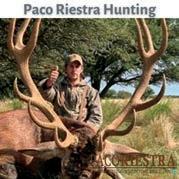

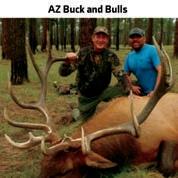


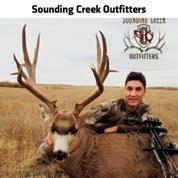

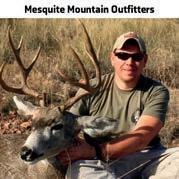




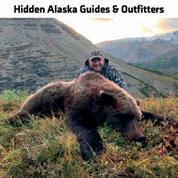


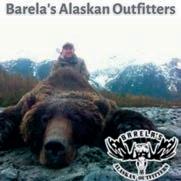
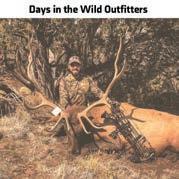


Wewanttothankallofour2023 outfitters!Yourgenerosity, flexibility,andbeliefinP&Yisa testamenttocommitmentand genuinesupportforbowhunting preservation! Formoreinformationaboutallofour outfitters,pleasevisit, https://pope-young.org/donating-outfitters PerrinsRainyPassLodge CrowCreekOutfitters BearTrackOutfitters Barela’sAlaskanOutfitters JackCreekPreserve PacoRiestraHunting WebfootOutfitters WizardLakeOutfitting MotshwereSafari Robert’sOutfitting PointerWingshooting TrophyHuntingSpain YukonBigGameOutfitters SavageEncounters RogueOutfitters MatlabasGameHunters


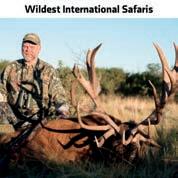


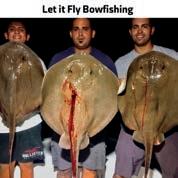
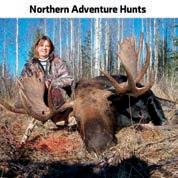

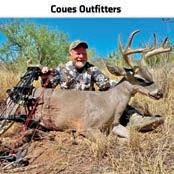
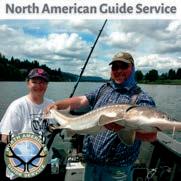
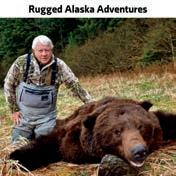























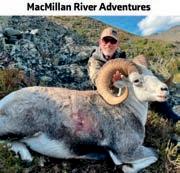
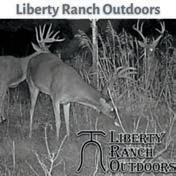
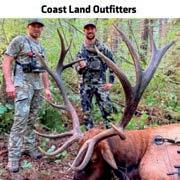

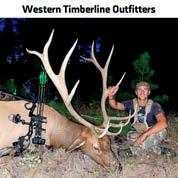
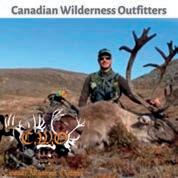




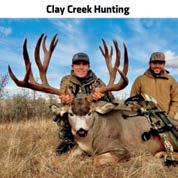


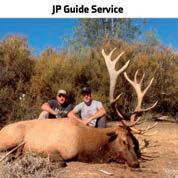

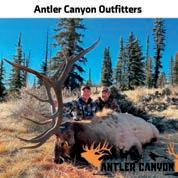


OUTFITTERS PARTNERS 2023 Ward’sOutfitters NorthAmericanGuideService CanadianWildernessOutfitters AdrenalineOutfitters BigKnifeOutfitters LibertyRanchOutdoors https://pope-young.org/donating-outfitters

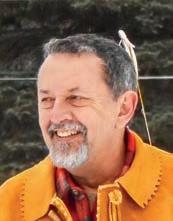

Youth Membership
By Gene Hopkins
Pope & Young Club Memories
Discover the Outdoors Camps 1996-1999
I
firmly believe that children need adventure in their lives just as much as they do the food they eat and the air they breathe. Many of us were fortunate enough to get our adventure through days afield with our favorite bow and arrows or walking the edge of a pond or stream with our favorite fishing rod and reel.
Unfortunately, we sometimes forget that not every child gets to enjoy these things, which we often take for granted, especially those younger kids who, through no fault of their own, are starting their lives out in a


home environment where those opportunities just don’t exist. Broken families, single mothers, or fathers living in urban jungles, each day looking for the adventure their young souls need to nurture their spirits, often finding it only in places and things not in their best interests.
Enter Fred Asbell. President of the Pope & Young Club, Fred believed that the Cub and its members were in a unique position to help some of these kids by giving them an opportunity to experience life away from the concrete jungles, away from the everyday
stresses and challenges that they had to deal with in their young lives. Fred knew that, through our members, we had the means to share our love of the outdoors with some of these kids and hopefully show them a better way to fulfill their appetite for adventure.
It is with this belief that the Discover the Outdoors Camps were born.
The Birth of an Idea
Fred approached me with his thoughts. He knew I had been running a camp for kids in my home state of Indiana, and he wanted

2024 • Summer
86
Discover the Outdoors group from the early years
Fred Asbell welcoming the campers.

“ If some of our teenage thrill seekers really want to get a thrill, let them go into the northwest and tangle with a grizzly bear, a polar bear, or a brown bear to get their thrill. It will cleanse the soul! ” ~ Fred Bear

my input. However, he wanted to ensure we didn’t just create a camp where the kids from families who already hunt, fish, and trap were targeted. He wanted to reach kids who didn’t have these opportunities.
Fred took his idea to several other Pope & Young members; very significantly, Marv and Judy Clyncke were among them. Along with his unmatched knowledge of the outdoors, Marv also possesses a wonderful way of working with young people, his enthusiasm being contagious to anyone around him. Fred also knew that Judy would be invaluable in helping with the planning and coordination during the event. Fred recruited a few more members to join us, many of whose names
I will forget, so rather than risk offending someone through omission, I will simply say that our committee was formed and began the work required to achieve Fred’s vision.
Our new committee decided to use the Big Brothers/Big Sisters chapters nationwide to find the young people we would invite. We would recruit young people who were interested but lacked the means or the opportunity for such experiences. Partnering with BBBS would ensure that we would get the long-term benefit of them bringing an adult with the young person to share the experience. Within the Big Brothers/Big Sisters organization, each young person is paired with an adult mentor, and these mentors
are known as their “Bigs,” while the young person is referred to as the “Little.” The idea was to ensure the best possible chance of our outdoor mentoring lasting once the young person went home, which would be to see that their “Big” also got the same mentoring as their “Little.”
We knew that our camp needed to be somewhere the camp participants would be inspired by the beauty of the wild outdoors but not intimidated. The location had to provide a wilderness appeal and some of the “luxuries” of home, such as a bed and shower with good hot meals. Both Fred and I had participated in events sponsored by The National Bowhunter Education Foundation at a facility
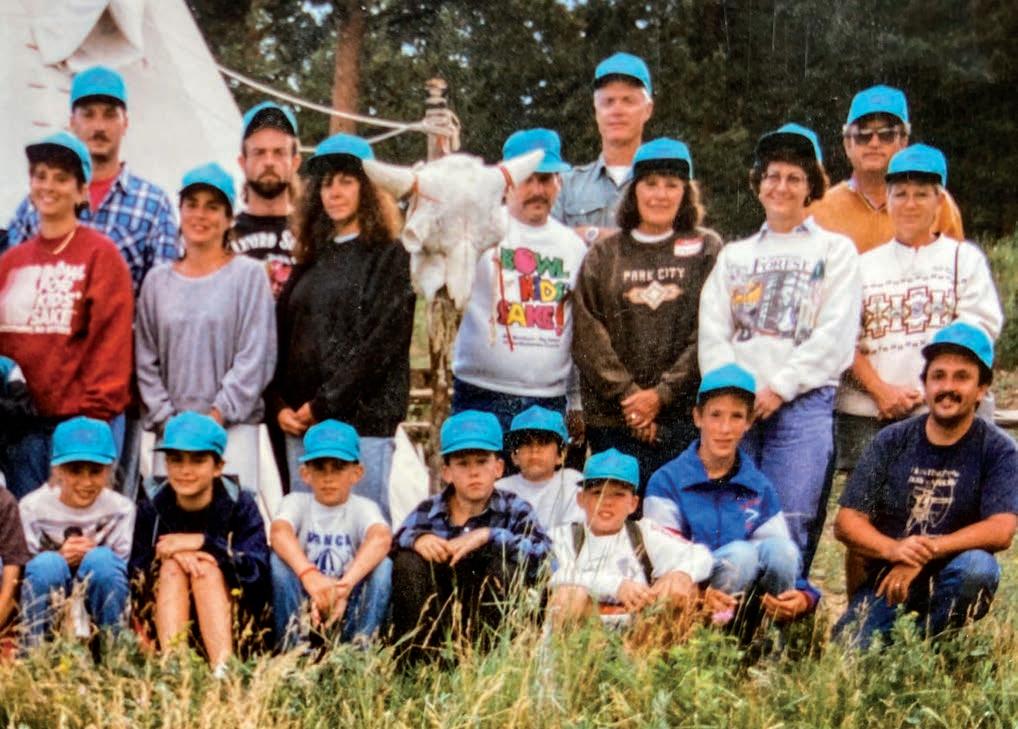

Summer • 2024 87

continued Youth Membership

near Boulder known as Cal-Wood that we thought would be perfect for the event.
The Camp
Soon, we had that first camp roster full of young people eager for a new challenge and experience. All of the participants and their guardians were flown to Denver at club expense, picked up, and shuttled to Cal-Wood, where they were met by our many club members who had volunteered to help. It was interesting to witness the various expressions as the camp participants exited the shuttles and witnessed the grandeur of the Rocky Mountains, most for the first time in their lives. Some were obviously awestruck by the beauty and serenity. In contrast, others were a bit intimidated by what they saw, which was probably exacerbated by the uncertainty of being in an environment so foreign to them.
For the next three days, we took the participants in small groups through a curriculum designed to introduce them to outdoor activities that could last them a lifetime. Additionally, we knew that many people are often afraid to go outdoors for fear of the unknown, and “little things” like getting lost were a barrier that we needed to address. All our carefully planned activities were designed to help them experience the wonders of nature


accomplishments. The smiles say it all!

and also to feel comfortable in the outdoors. Our days consisted of several sessions, with the participants rotating through each session in groups. There was a session on Introduction to Shooting a Bow, after which we then took them to a field where we told them they would do something they never believed they could do – they would shoot aerial targets with their newfound archery skills. Disbelief was their first reaction, but that disbelief was soon replaced by laughter and high-fives when they found that, indeed, they were soon hitting those aerial targets fairly regularly. Every time someone hit their target, they would run and grab the disk, which still contained their arrow, and ask for their picture to be taken while being cheered by their teammates.
Marv Clyncke is a master fisherman as well as a bowhunter. We led the kids to the local pond, where we showed them how to use a casting rod & reel, as well as a fly rod. Again, many of the participants had never fished before in their lives, but within minutes, fish were flopping around on the bank, and Marv was kept very busy helping to rebait hooks and release fish back into the water. Marv’s personality shines when he gets the chance to interact with people personally, and what better forum than standing next to a pond in
the Rocky Mountains with a fishing pole in their hands?
Being comfortable in the field requires someone to believe they can find their way around and safely return to their embarkation point. But you must admit that calling a session something like “Learning to use a map & compass” or “Basic Orienteering” might be somewhat intimidating. At the very least, it might not sound fun to someone new to the idea. So, to alleviate this concern, we created a session called “The Treasure Hunt.” We set up an introductory orienteering course, leading the participants from point to point, using a map and compass with directions and bearings to the next destination. When the participants finally reached the last waypoint, there was a cooler of cold water bottles for the treasure, which was better than a pot of gold at the time!
The competition between the boys and the girls was fascinating to witness during the treasure hunt. We didn’t set it up as competition, but the natural instincts took over, and the boys immediately started to “take the lead,” telling the girls what to do and which direction to head. Sometimes, the boys were correct, but more often, in their haste to impress the girls, they were not. The girls would start slow, initially following the boy’s
2024 • Summer
88
Mother and daughter celebrate their

SCAN ME

Youth Membership
continued
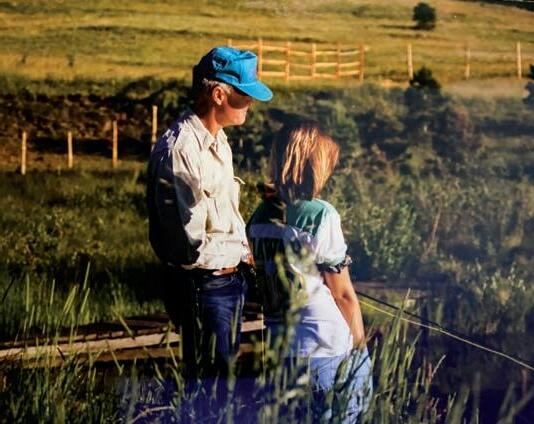
instructions. But all the while, in the background, the girls were quietly reading their own set of directions and quietly recognizing the errors of the boys. The girls were carefully reading and re-reading the instructions and would politely offer that they thought differently than what the boys were telling them.
Of course, the boys would follow their manly egos and continue to head off in the direction they thought was right, while the girls were finally sure that they knew better and would head in the direction they felt was correct. In every case, the girls ended up at the correct destination, while the boys had to retrace their steps, swallow their egos, and eventually listen to the advice from the girls. Some things never change!
Many other sessions were also held during the three days of the camp, and the time seemed to fly by. The days and evenings were filled with laughter and the sounds of new friends being made.
The Aftermath
With our funding, we were able to hold our Discover the Outdoors Camps (DTOC) for four years. During those four years, we were privileged to witness so many life-changing events that it would be impossible to list them all, but I wanted to share a couple with you.



One young man, whose name I will keep anonymous, arrived at the airport wearing a long black trench coat, which was common among some young people at the time. He had come from a bad family background, and it is evident that the coat was his “armor,” his way of building a wall around himself so that he didn’t have to deal with people.
The Rockies are hot during the summer months, and at 8,500 feet above sea level, the heat is even more intense. Fred asked the young man if he would like to put his coat in the cabin, but he replied with a firm “negative.” Fred, being the great people person that he was, simply smiled, raised his eyebrows, and said, “Okay,” knowing that the young man would regret his decision.
Yet, the young man went through the three days of activities still wearing his trench coat until the last morning when everyone left their cabins for the last time and met to board the shuttles back to the airport. When he came out of the cabin, he was not wearing his trench coat for the first time since we had picked him up at the airport. What’s more, he didn’t even have the coat with him. Fred looked at him and smiled, asking him, “Where is your coat?”. The young man looked at Fred and returned a smile of his own, followed by the words, “I don’t need it anymore.” He had
experienced joy and friendships that he likely had not experienced in quite some time. I am sure everyone standing there who heard the conversation left with the same goosebumps I had. Even today, I get those same goosebumps when I tell this story.
Another story I can tell is of a young man who came to the camp with his father. Before the camp, the grandfather called and told us that the relationship between father and son was very poor, even calling it embattled. As the camp started, the father and son had trouble even being within 20 feet of each other. During the events, there was an obvious thaw beginning in their relationship. Soon, the father and son hugged and laughed, finally becoming a family again. There is nothing like the outdoors to bring people together.
Twenty-five years have passed since the last of those camps in 1999, but those of us who were fortunate enough to participate in those DTOC camps will never forget the feelings of gratitude that we had for being able to do our part to help someone else. I, for one, will never be able to thank the Club and Fred Asbell for asking me to be a part of such a special event. Events like this make the Pope & Young Club so special and valuable to the future of our outdoor heritage.
2024 • Summer
90
Peter Kumerfeldt teaches a camper fly fishing.
The author teaching aerial shooting



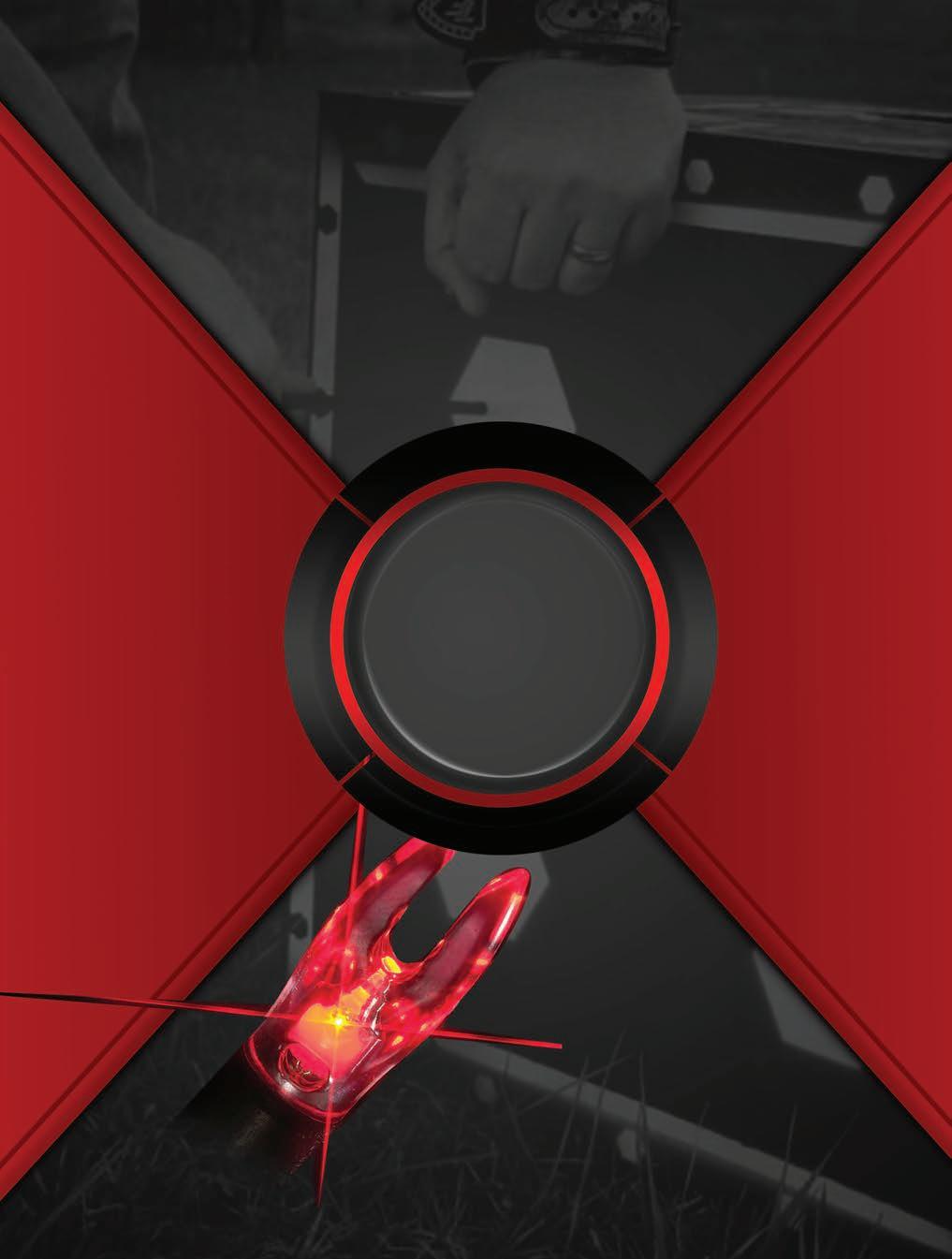



























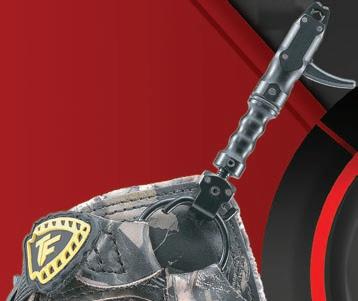






































® PROUD SUPPORTER OF POPE AND YOUNG FERADYNE.COM
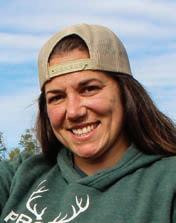
The Adventurous BowWoman
By Stephanie Manteufel


Jana Waller Bair – The Skull Bound Legend



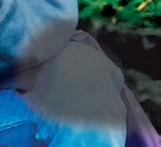



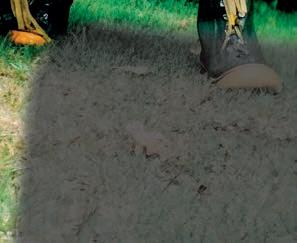
When you think of women pioneers in the hunting industry, Jana Waller Bair ranks high on the list. Her notable contributions to conservation span her multi-decade career. She built one of the top female-owned hunting TV shows as a host and executive producer on multiple networks and now the fast-growing CARBONTV digital platform. With a TV career spanning over fifteen years, Jana truly paved the way for women and hunters who are passionate about sharing their hunting adventures. Jana’s journey from her home state of Wisconsin to the Bitterroot Mountains of Montana, where she started her Skull Bound TV show, is a testament to her determination and love for hunting. It was in those mountains that Jana was launched into the hunting industry with much



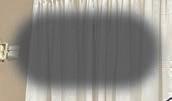



2024 • Summer
92
Jana with her dad, Paul Joseph, after he recovered his first successful whitetail archery buck.
Jana and her husband John co-hosting an auction event











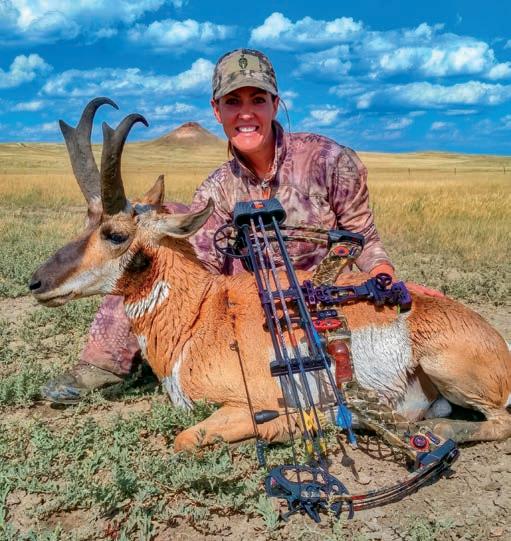




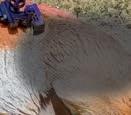








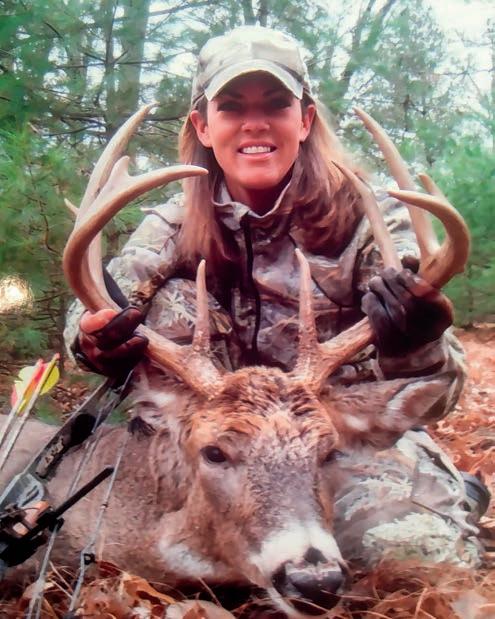



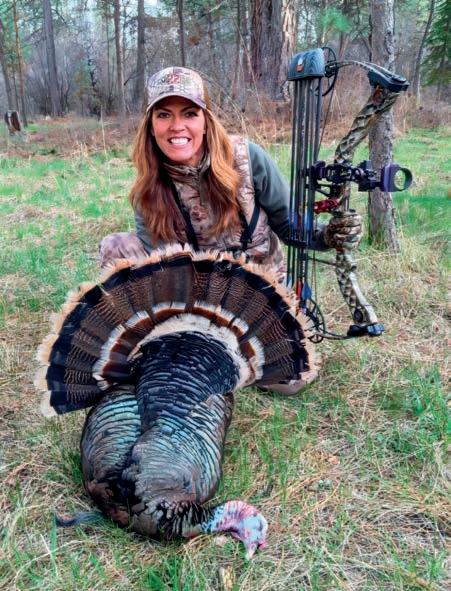






asked question is whether


Summer • 2024 93
Jana with her first archery Montana mountain lion. She raves about the mountain lion meat, which has a sweet and savory taste similar to that of a pork chop. Her most
she eats it.
Jana with her early 2000s Wisconsin whitetail archery buck
Jana with her Montana archery turkey
Jana with her 2014 Wyoming archery antelope
The Adventurous BowWoman

success. Her longstanding sponsorship companies are a true testament to the core values of who Jana is and what she represents. She prides herself on working with companies and conservation groups that have a purpose and share the same beliefs. Most of her sponsors have been with her since day one.





The Pope & Young Cub could not be happier to have Jana join us as one of our newest members. She understands the importance of protecting our right to bow hunt. When we sat down to discuss her recent attendance at a Pope and Young Club banquet with Wishes for Warriors in Utah, Jana said it was a real eye-opener for her. Jana is no stranger to conservation and has admirably raised over $110,000 in donations through her one-of-a-kind beaded skull artwork and hunt donations before and throughout her hunting career. If that is not impressive enough, she is a member of a dozen conservation groups, six of which she is a lifetime member. Jana is also a former commissioner for Montana Fish, Wildlife & Parks. Jana’s involvement in the preservation of wildlife and the future of hunting is beyond commendable.


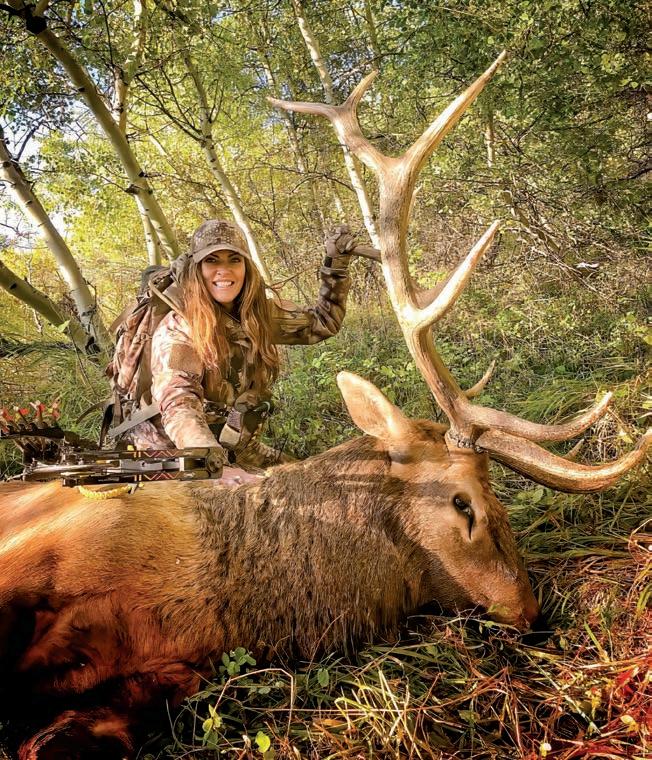
“Many people do not understand that bow hunting is under attack, often secretly behind the scenes. Anti-hunting groups are spending millions of dollars trying to outlaw bow hunting and ban archery programs from schools.







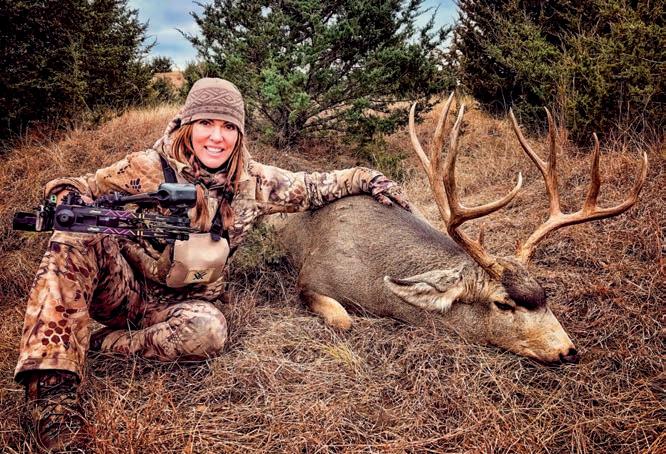

2024 • Summer continued 94
Jana with her 2017 Wyoming archery elk
Jana with her 2018 South Dakota archery mule deer shot from her knees at 35 yards, quartering towards her.
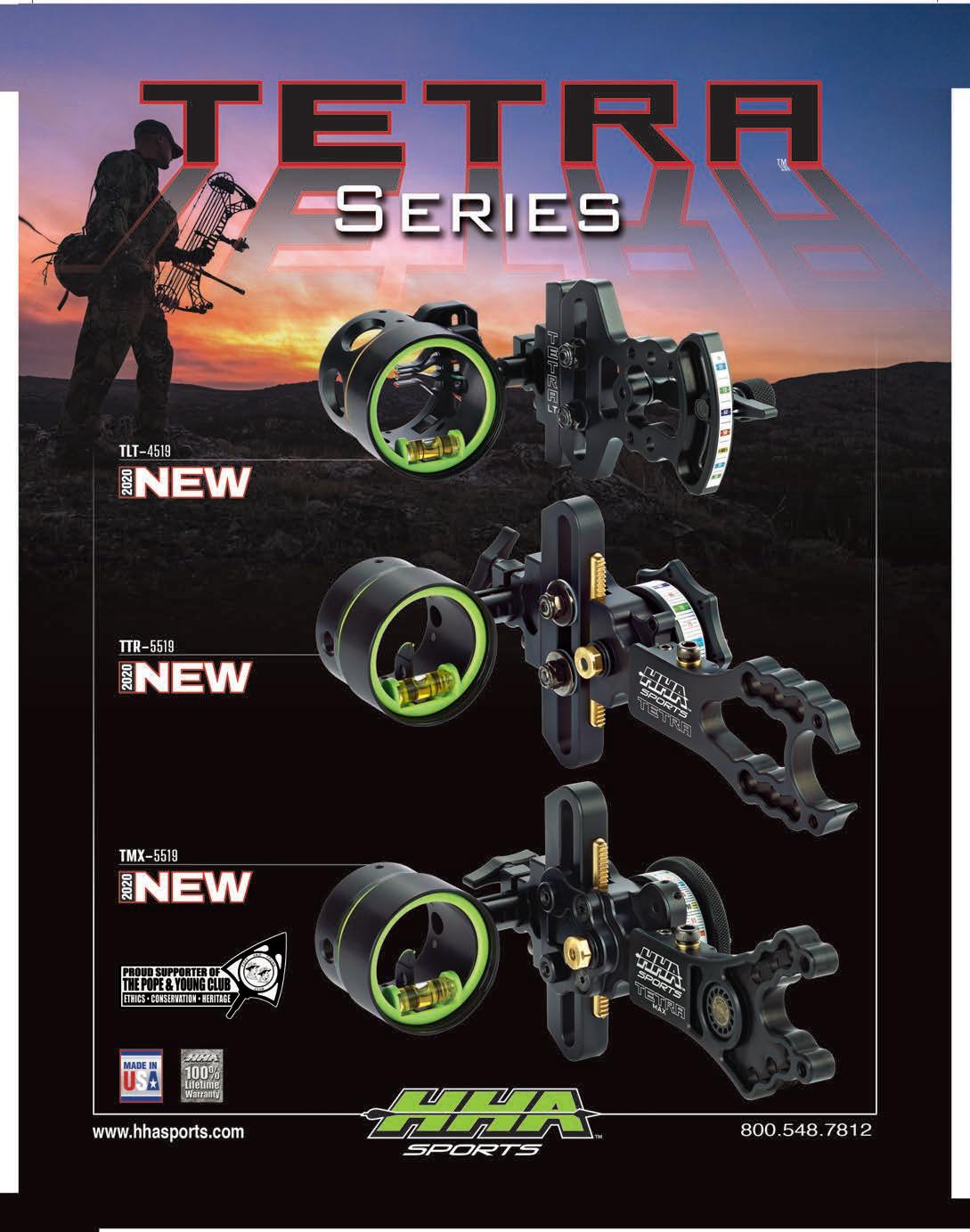
The Adventurous BowWoman
“We hunters need to band together stronger!”—Jana
Waller Bair.
There has been a longtime misconception about the Pope & Young Club being an elite archery group for bow hunters only. While archery hunting is the organization’s heart and soul, many members are multi-weapon hunters. Pope & Young is as inclusive as they come, welcoming all hunters alike. While Jana attended the local Pope & Young banquet, she was surprised to learn that what she had previously deemed an archery-only group was so much more than that. She joined Pope & Young almost immediately after. Admittedly, Jana has not officially scored any of her dozens of archery

animals, several of which are worthy of gracing the record books. We hope to see her enthusiasm for the Pope and Young Club translate to her large audience and influence others to join this wonderful organization.
Jana has been an archery hunter for nearly 33 years, but archery was not where her enthusiasm for the outdoors started. At a young age, Jana first took up hunting as a sidekick to her father in the field, flushing pheasants and hunting in the beautiful state of Wisconsin. She quickly became the official bird cleaner until she was old enough to take her hunter safety course in 1983. It wasn’t until her college years that she had an ‘aha’
moment with her roommate and needed to buy a bow that was fitted to her. She quickly headed out to purchase her first bow at nineteen. A Darton Jr sparked her love for bowhunting along with a successful tracking job of her dad’s first whitetail buck with a compound bow.






One morning, Jana received a call from her dad asking if she would help him find a whitetail buck he had just arrowed and needed to track. She did not hesitate and quickly decided to skip class that day and tag along with him. She quickly laughed when telling this story, as her dad was into gadgets and had purchased an old string tracker for his compound bow. When they arrived at his hunting spot near an old cemetery, he quickly showed her his stand set up and where he released the arrow from. She said they followed the string for forty yards or less and then parted ways to locate the deer. As luck would have it, Jana spotted her dad’s deer first. She yelled at him, and he came quickly to her call. She described her dad as a big, tall, burly man who is stoic, but, at this moment, he was jumping for joy over his first archery buck. When Jana later overheard her dad compare the excitement of recovering his buck to the birth of his two daughters, she knew bowhunting must really be something special.
It was not until nearly a decade later that Jana found another passion when she picked up her first rifle. This was around the same time when her career as a hunting TV personality began. Before that, she was seasoned mainly in upland and waterfowl hunting, which is still her huge passion. If you are familiar with Jana’s show, Skull Bound TV, or the Skull Bound Chronicles digital series, you may already know that she is not only an avid long-distance rifle hunter but also
2024 • Summer
96
continued
Make your story one to remember—get 6.5 today. HUNTING STORIES... END YOURS WITH A DIRTY KNIFE.
quick with a pistol. As she moved from Wisconsin to Montana, her hunting portfolio branched out to take her across the country and other continents, including Africa.
When it comes to changing the perception of non-hunters, no one does it better than Jana. Her love for wildlife and conservation translates through her storytelling of past hunts and encounters, which transcribe her immense gratitude for her hunting successes—changing the conversation from hunting to harvesting and highlighting the most important parts of why we as hunters set out to make the most ethical and clean kills possible. Showing others that our connection
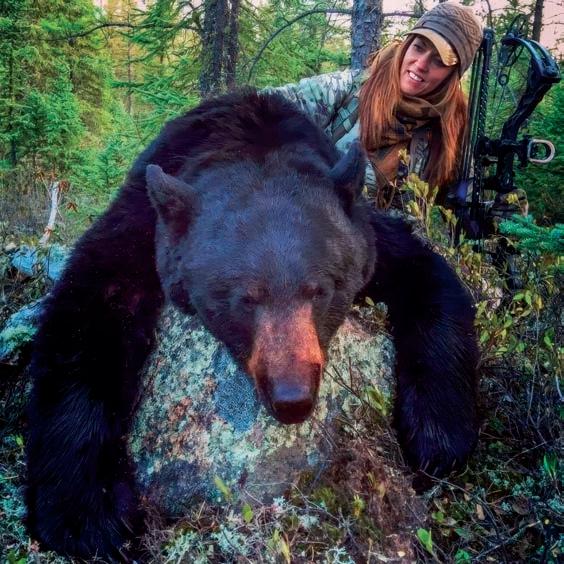



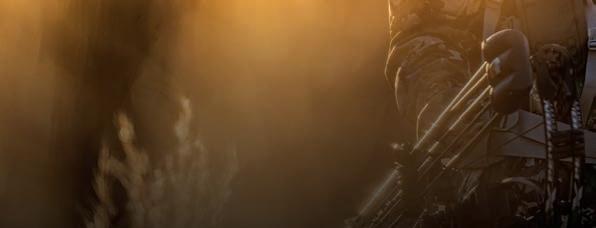
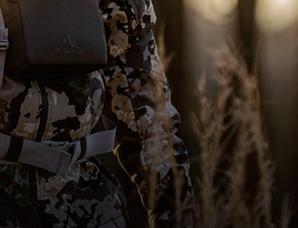


Summer • 2024 97
Jana with her 2015 Saskatchewan archery black bear
The Adventurous BowWoman
continued
to animals and mother nature goes far beyond the camo and weaponry is at the forefront of everything she does. She is tackling the hard predator management issues, focusing on the importance of individual species conservation and finding the balance between humans and nature. When it comes to utilizing every part of the animal, she finds a way to use it all. Whether it is preserving memories through taxidermy, creating unique art pieces, or, most importantly, filling the freezer with the cleanest food on the planet, She admittedly finds the bounty of her harvests to be the most rewarding and important part of her hunting successes.
Regarding patriotism, Jana is notorious for highlighting wounded veterans on her TV show. The Skull Bound Chronicles on CARBONTV has an entire season (season 4) of hunts with some of the country’s bravest warriors. The shows are all about camaraderie, newfound friendships, and supporting the men and women who need the healing touch of nature to help them through some of the greatest losses


they have faced and endured in combat. The show is helping to share the message of how we can collectively help these brave men and women heal and bring awareness to suicide prevention. Skull Bound Chronicles is truly a one-of-akind show.




Jana’s passion for hunting has moved her across the western United States from Wisconsin to Montana and now Utah, where she lives with her husband, fellow bowhunter, and well-known



auctioneer, John Bair. Together, Jana and John attend countless events and banquets all over the US to help raise money for conservation. If you want to learn more about Jana or any veteran outreach programs. You can find Jana Waller Bair on all social media platforms, such as Facebook, Instagram, Skull Bound TV, and Skull Bound Chronicles, free for anyone to view on CARBONTV. Jana also has a channel that runs only her show episodes twenty-four hours daily.
You can find Jana Waller Bair and her TV shows at any of the links below. Facebook: https://www.facebook.com/ JanaWallerSkullBound Facebook: https://www.facebook.com/ SkullBoundTV
Instagram: @skullboundtv CARBONTV: https://www.carbontv.com/ shows/skull-bound-chronicles/
2024 • Summer
98
Jana with her 2017 Montana archery spot and stalk whitetail buck

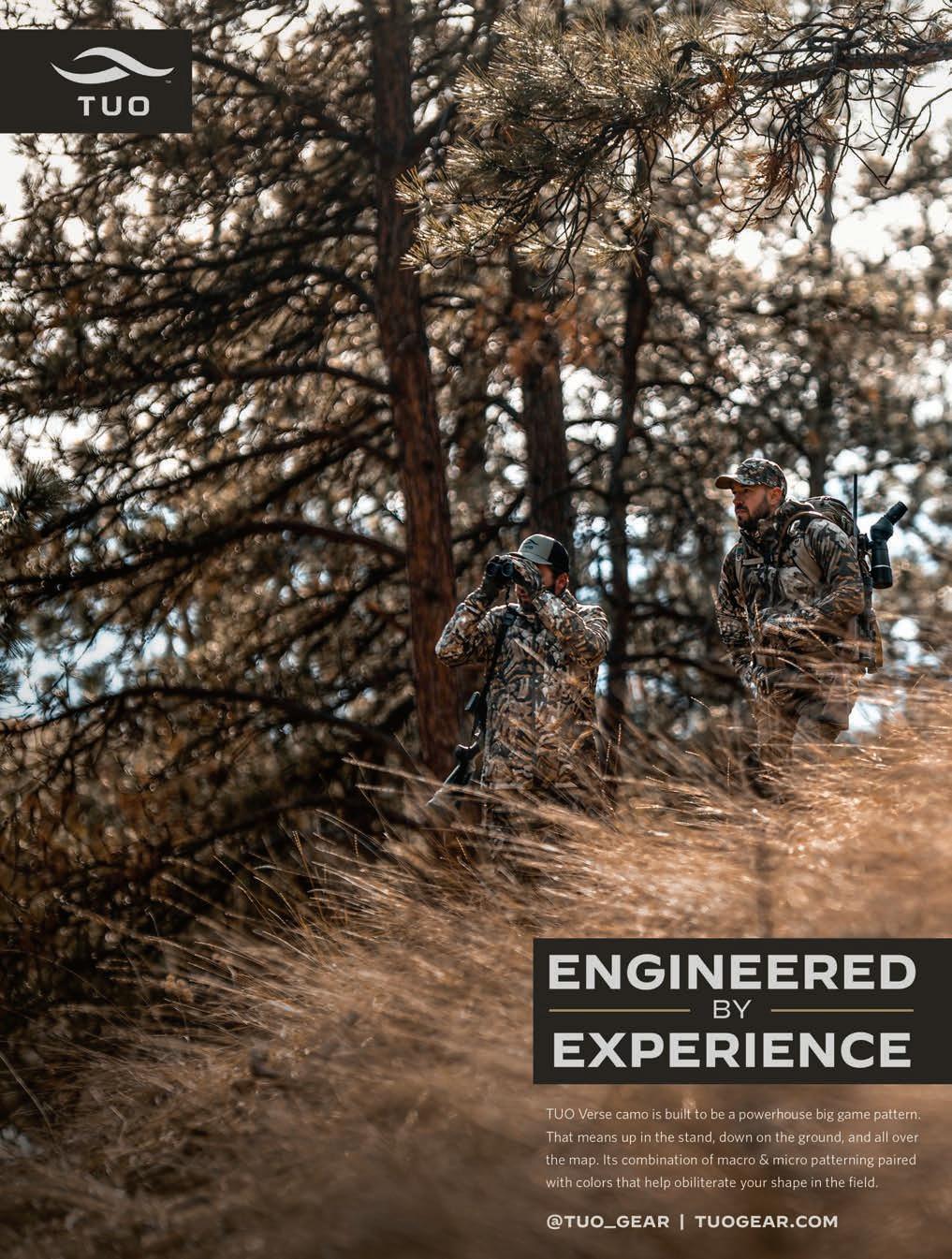

PERIODICAL POSTAGE PAID
Pope & Young Club, Inc. PO Box 548 Chatfield, MN 55923

























































































































































































































































































































































































































































































































































































































































 By Kurt Ebers
Chuck Adams
By Kurt Ebers
Chuck Adams




























































































































































































































































































































































